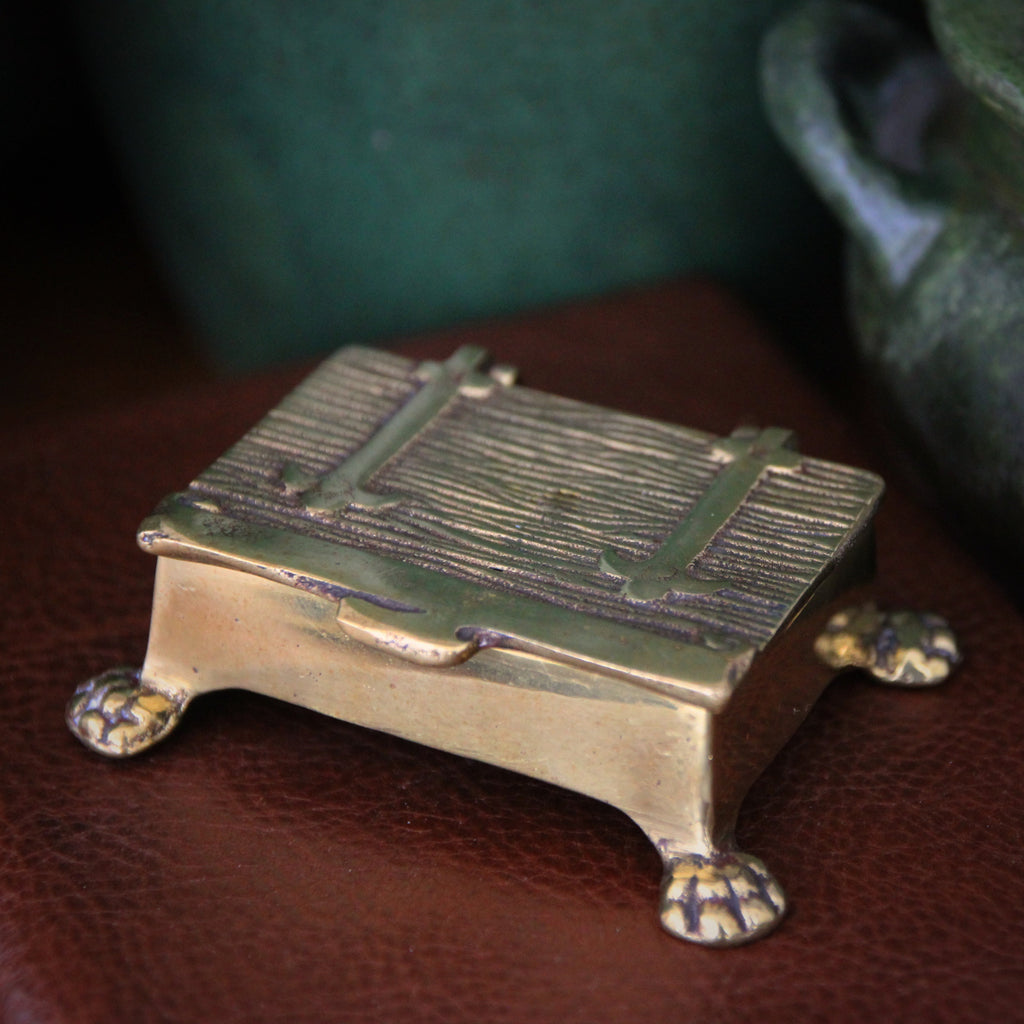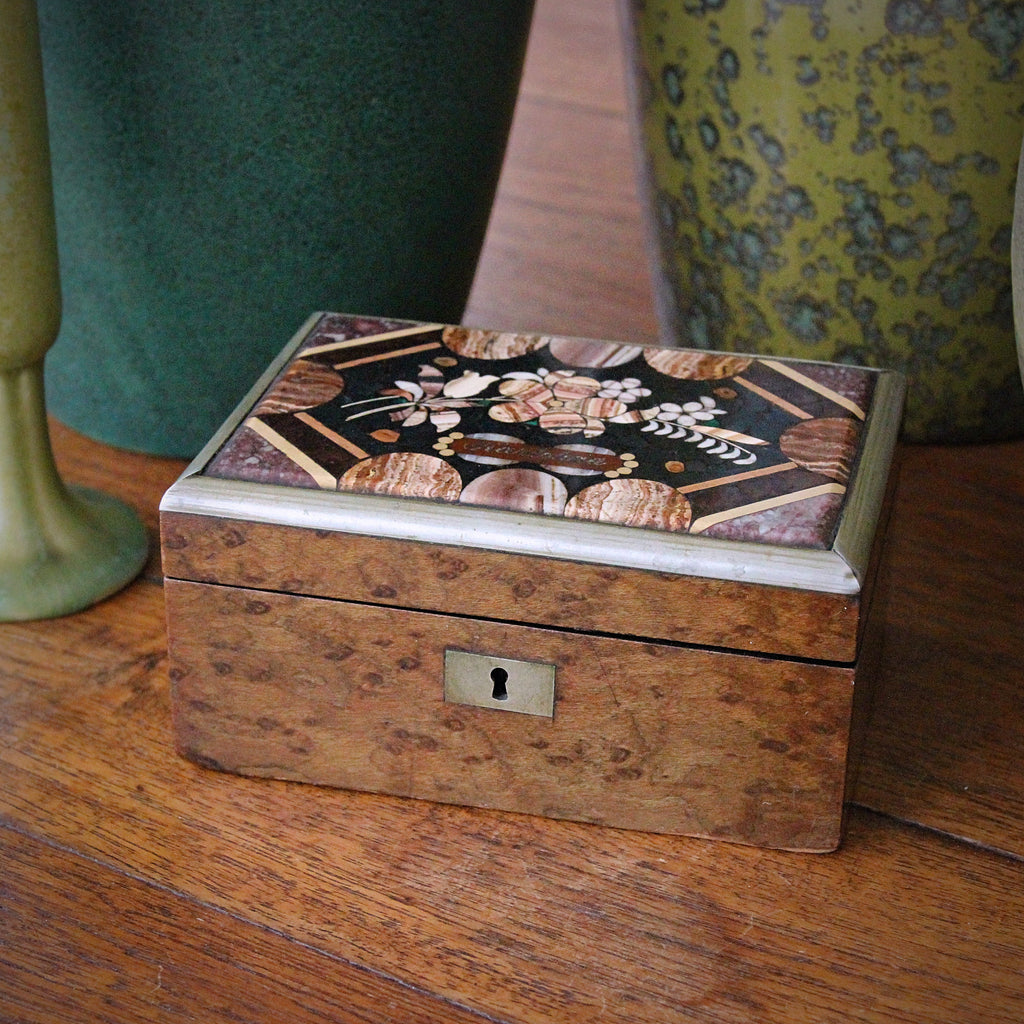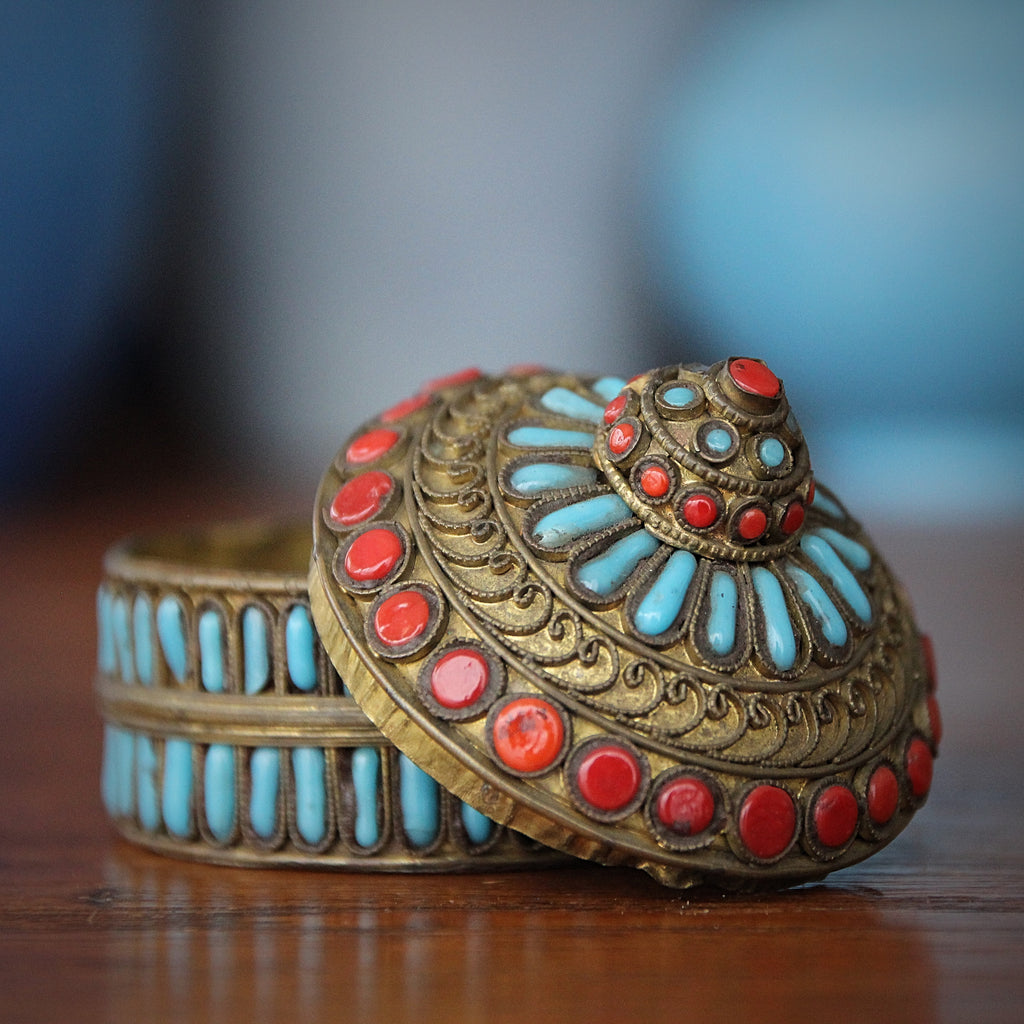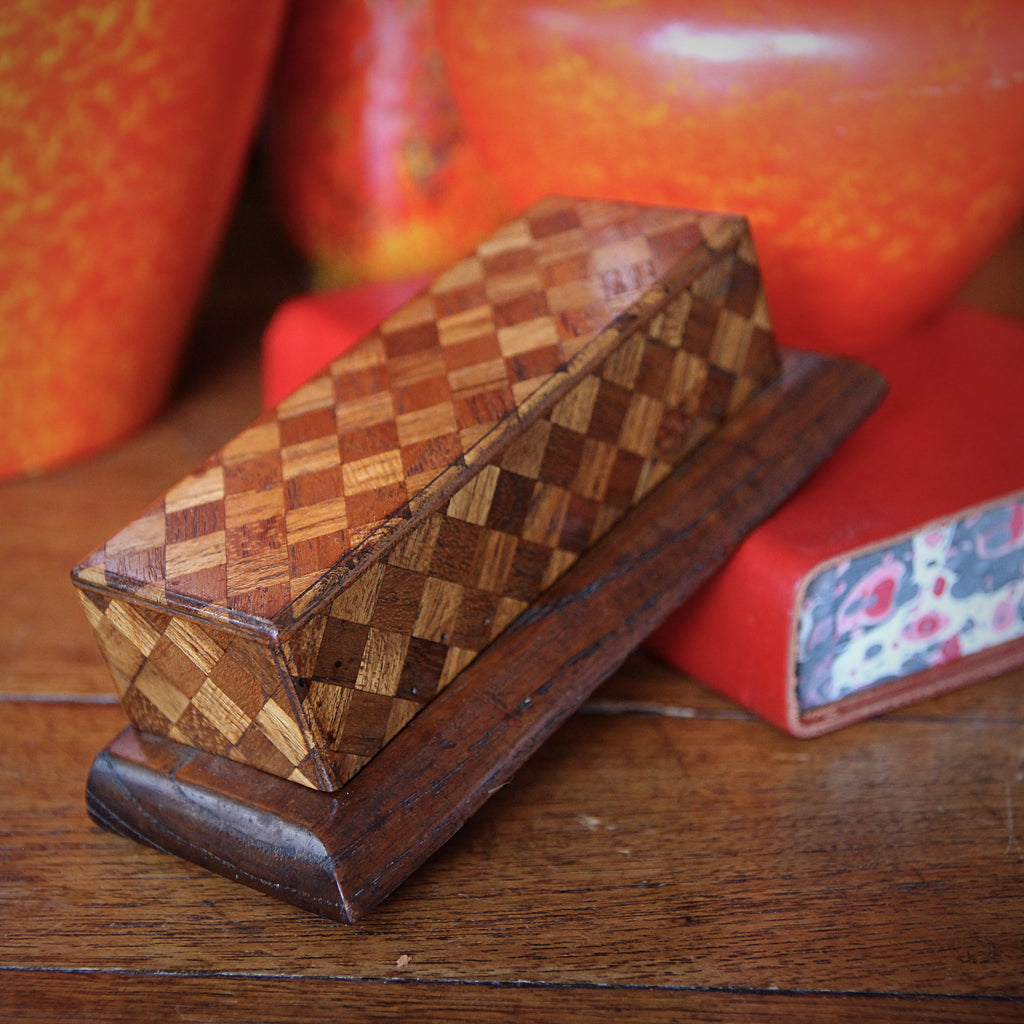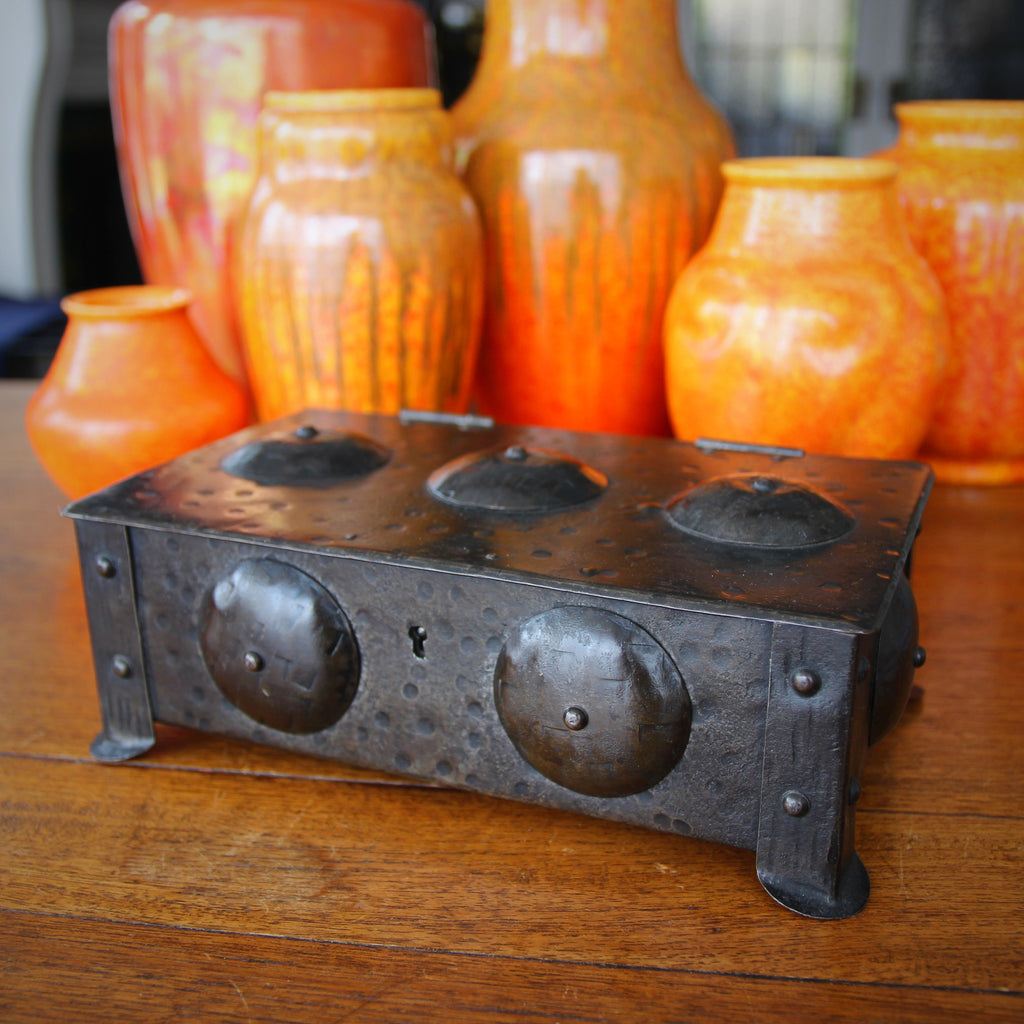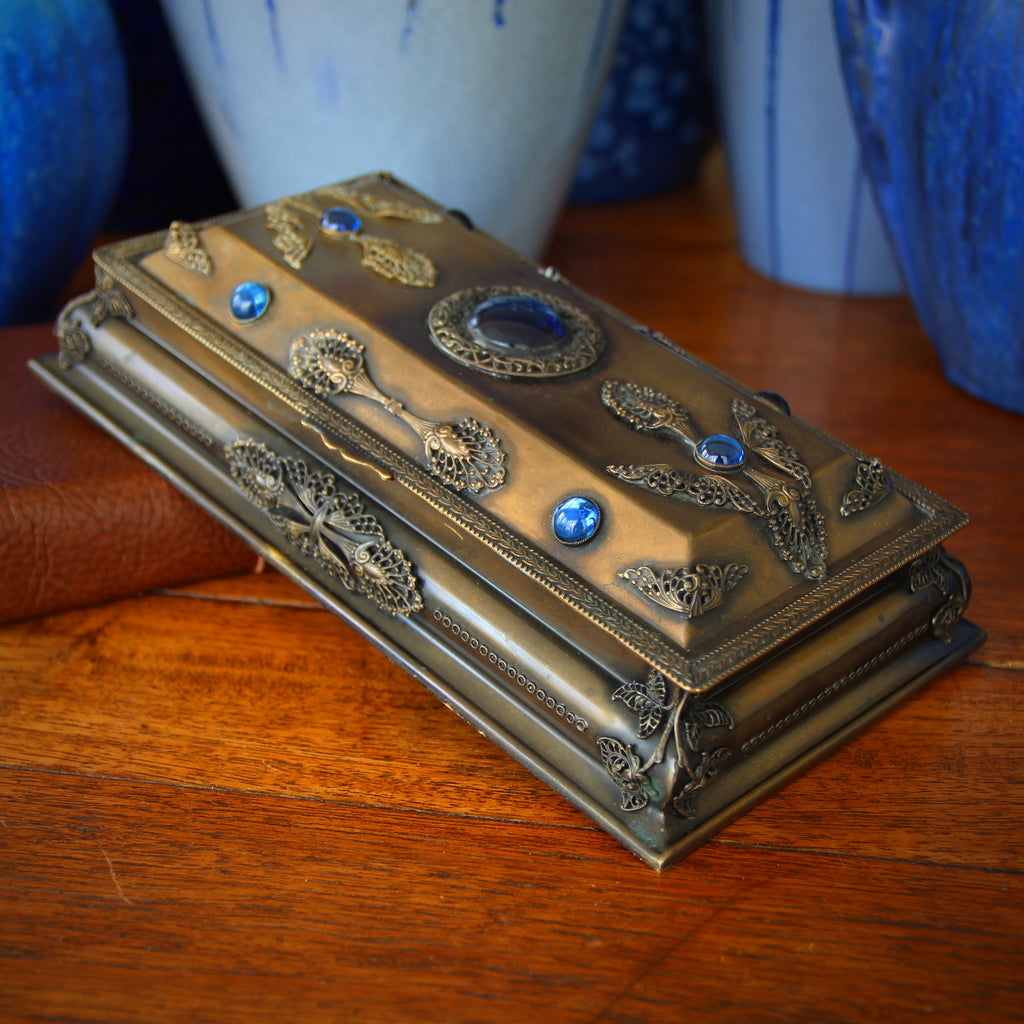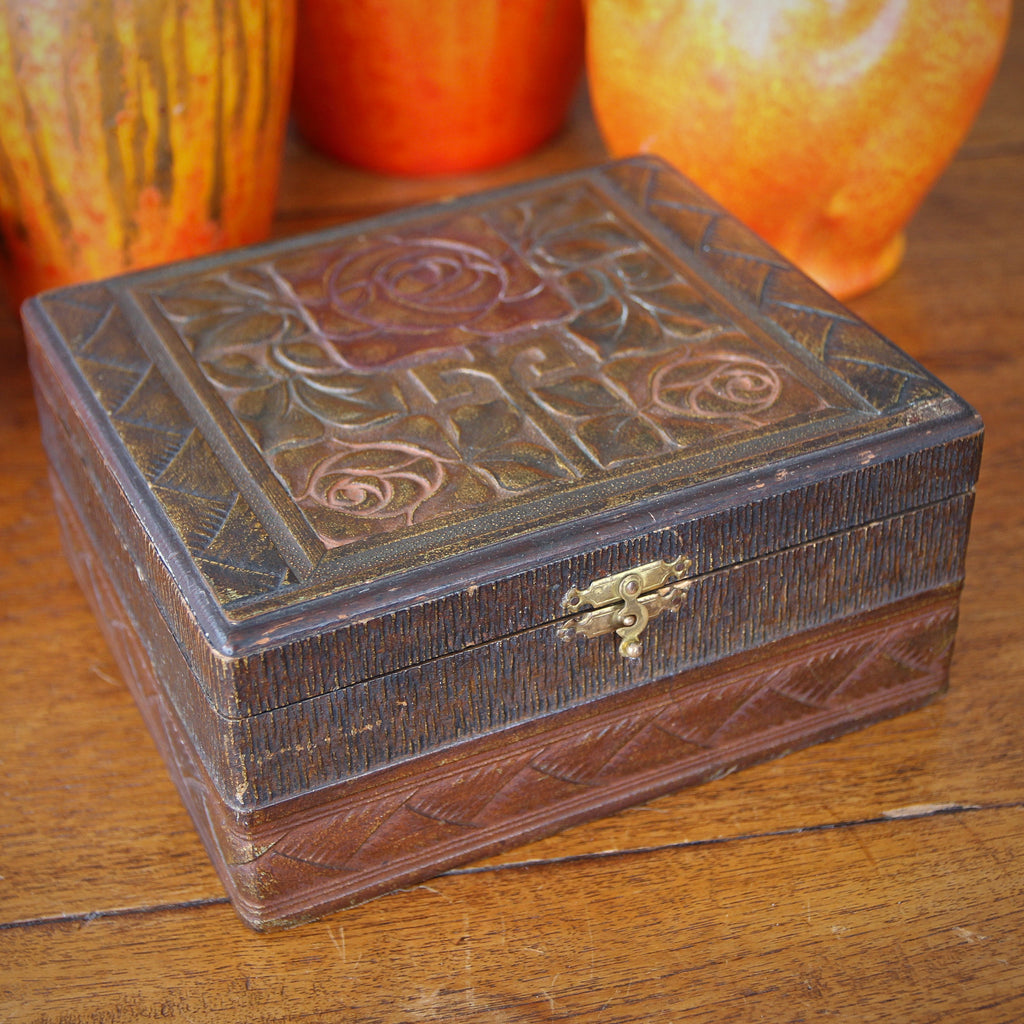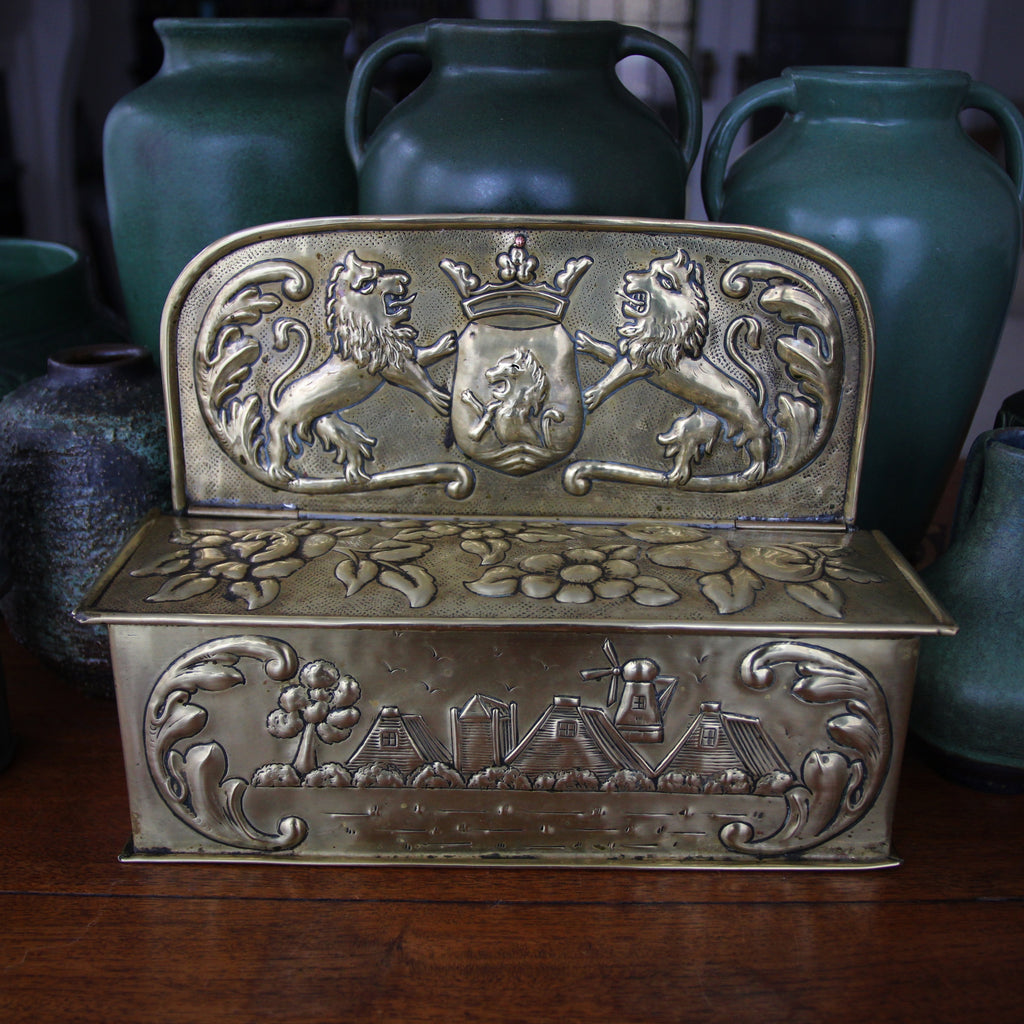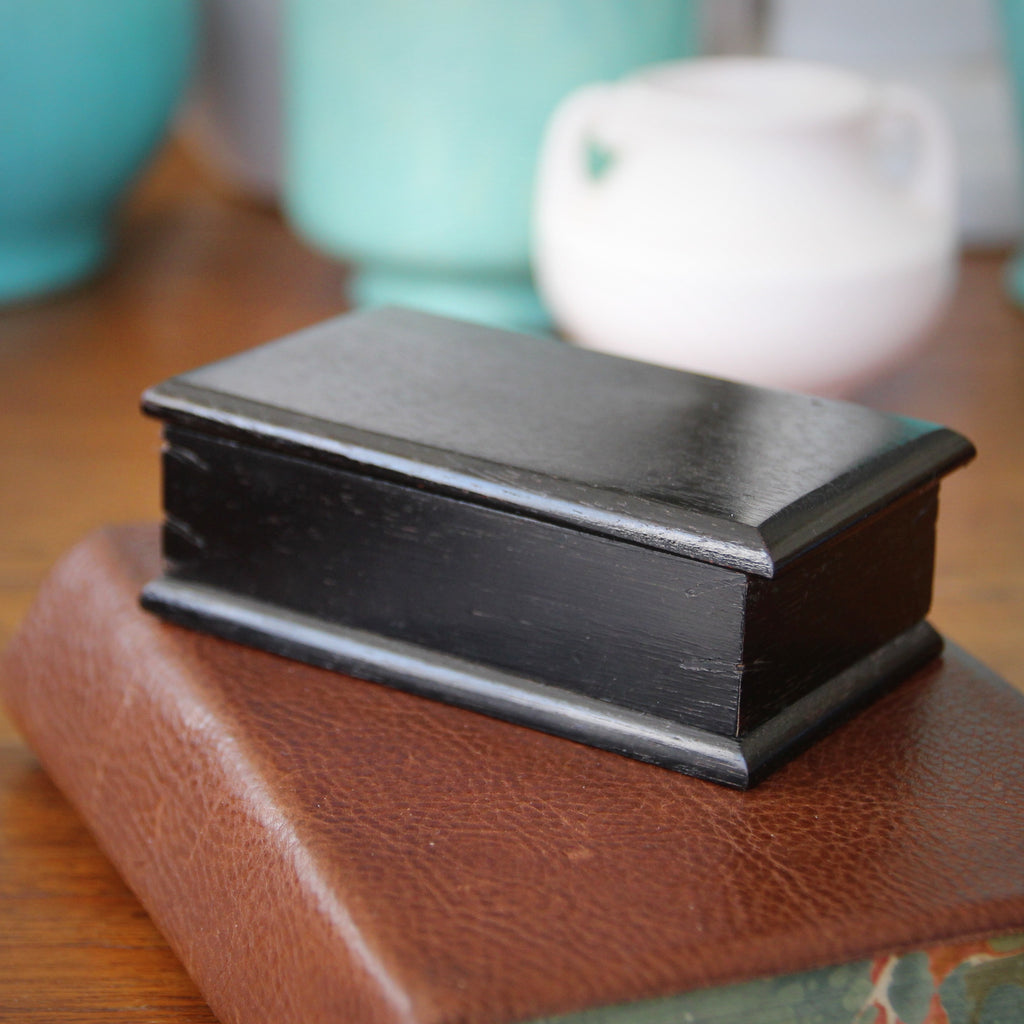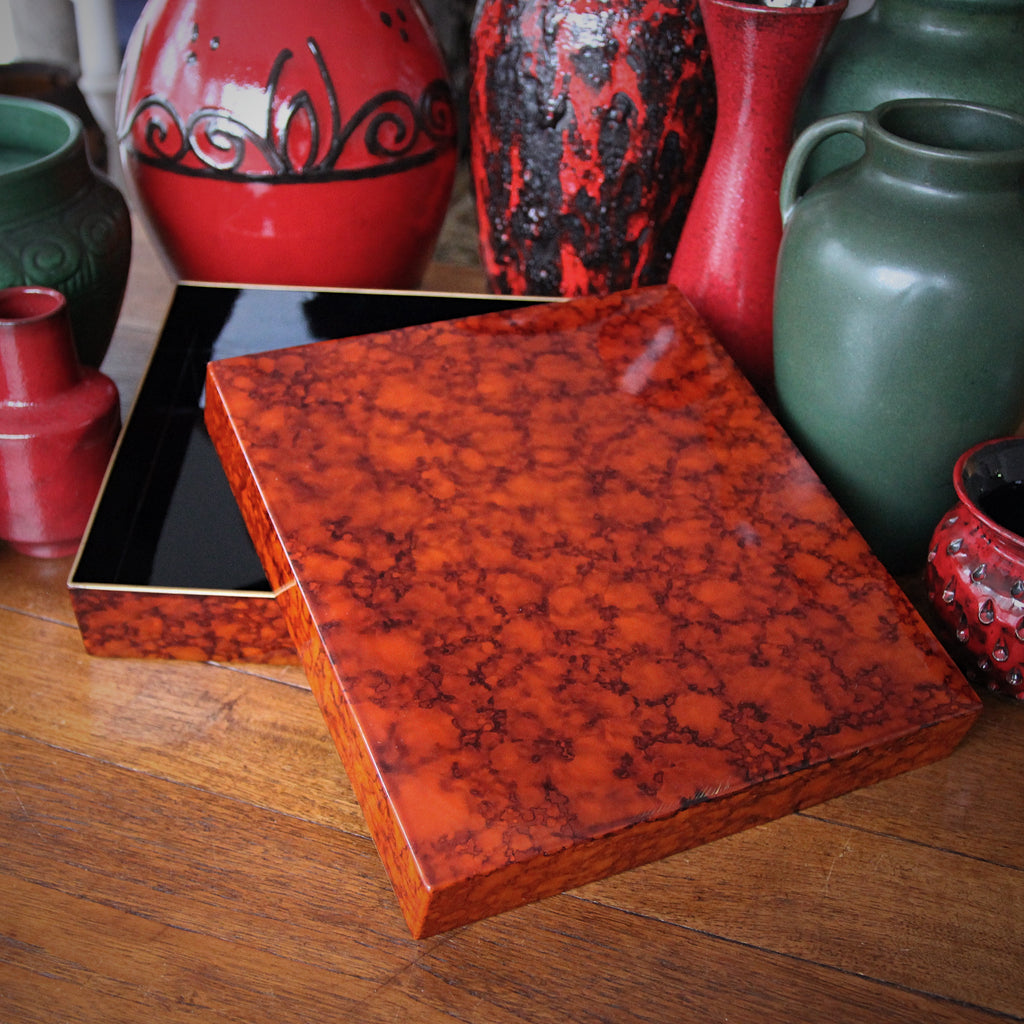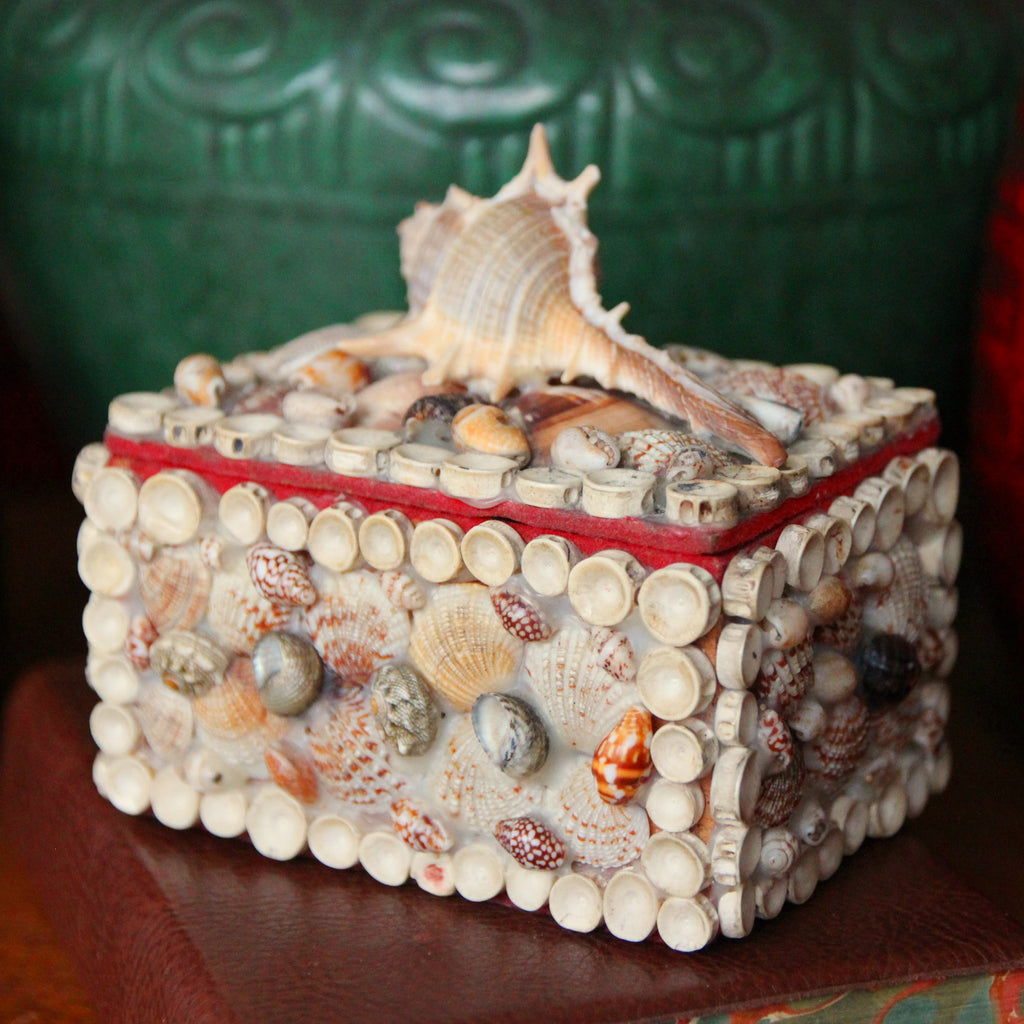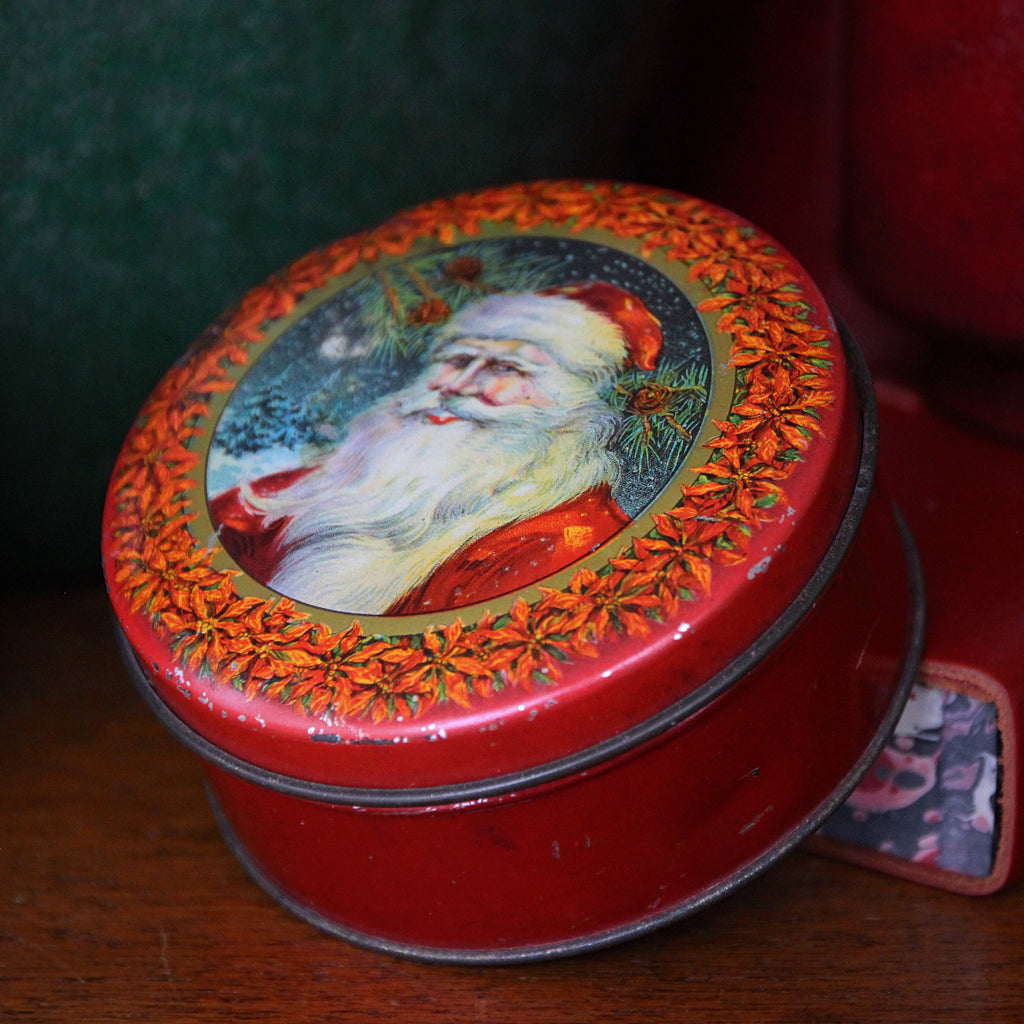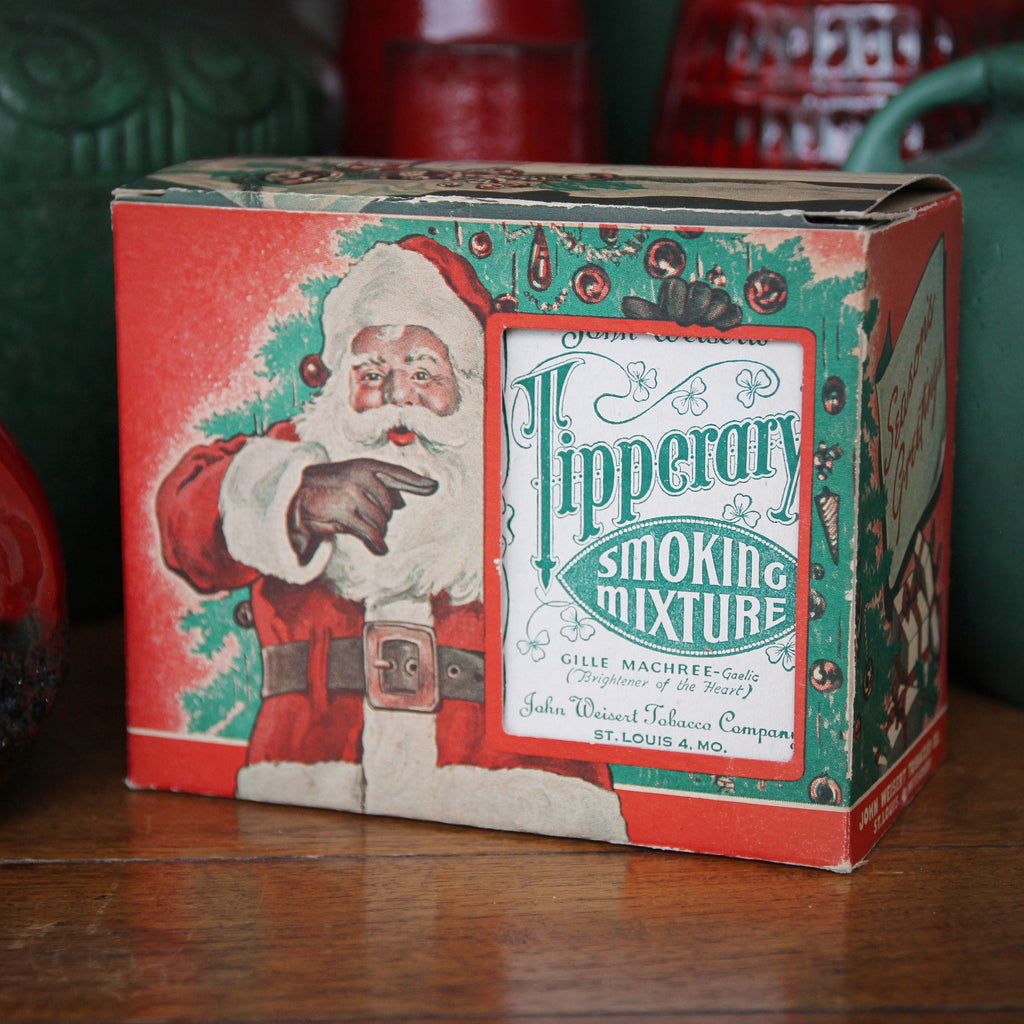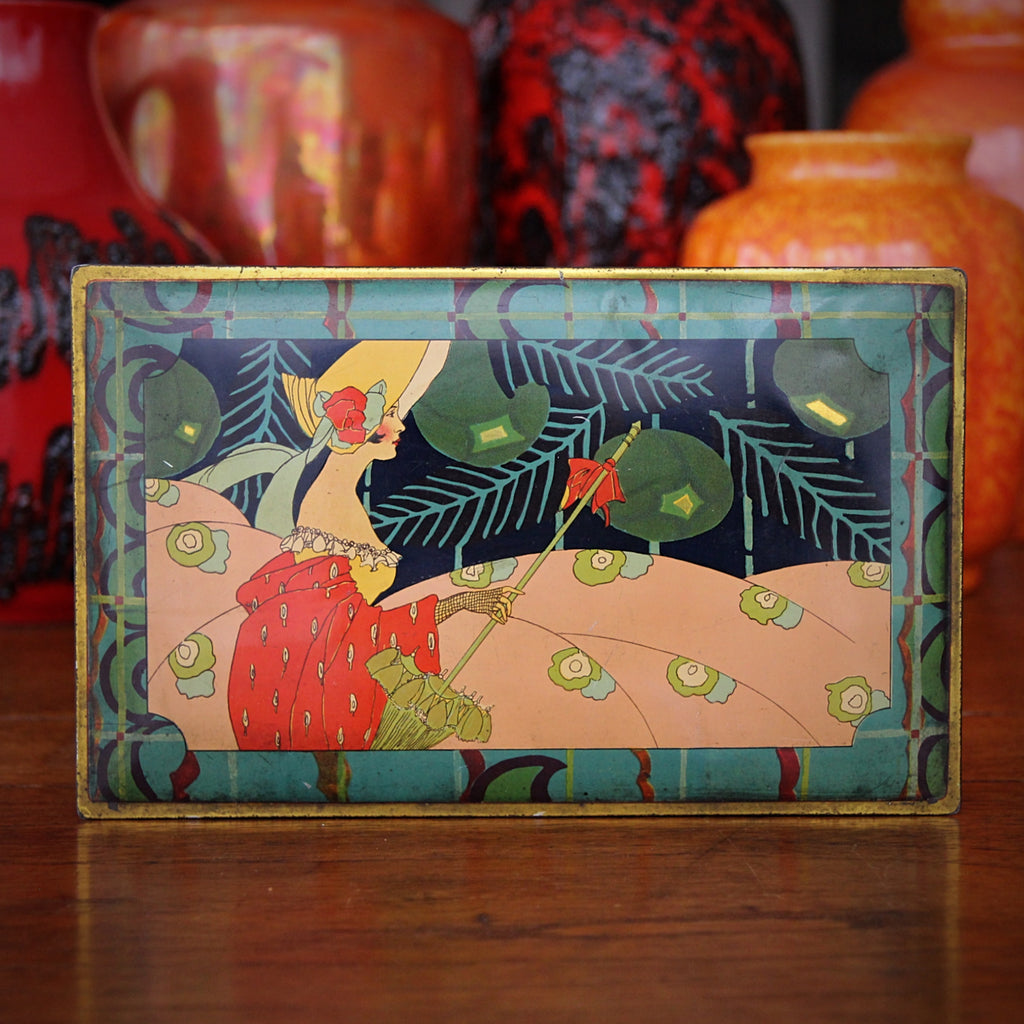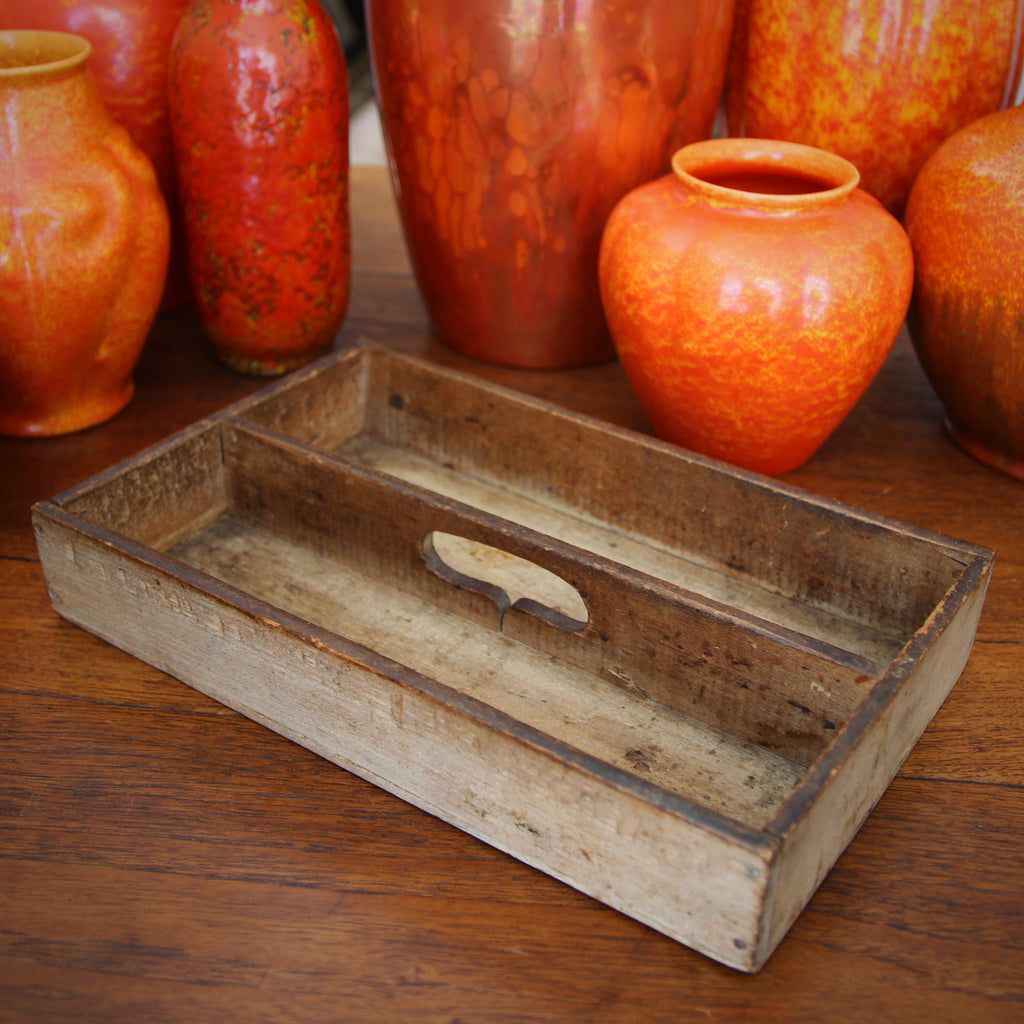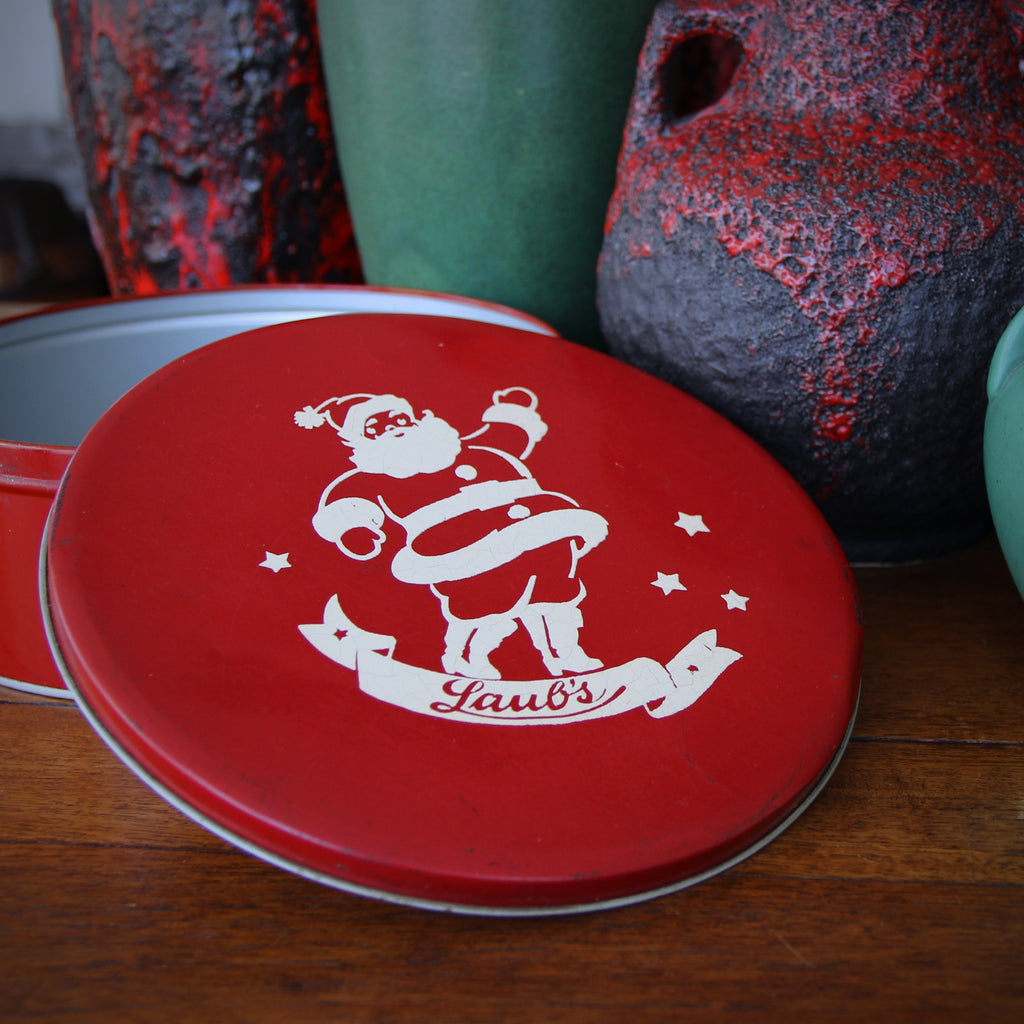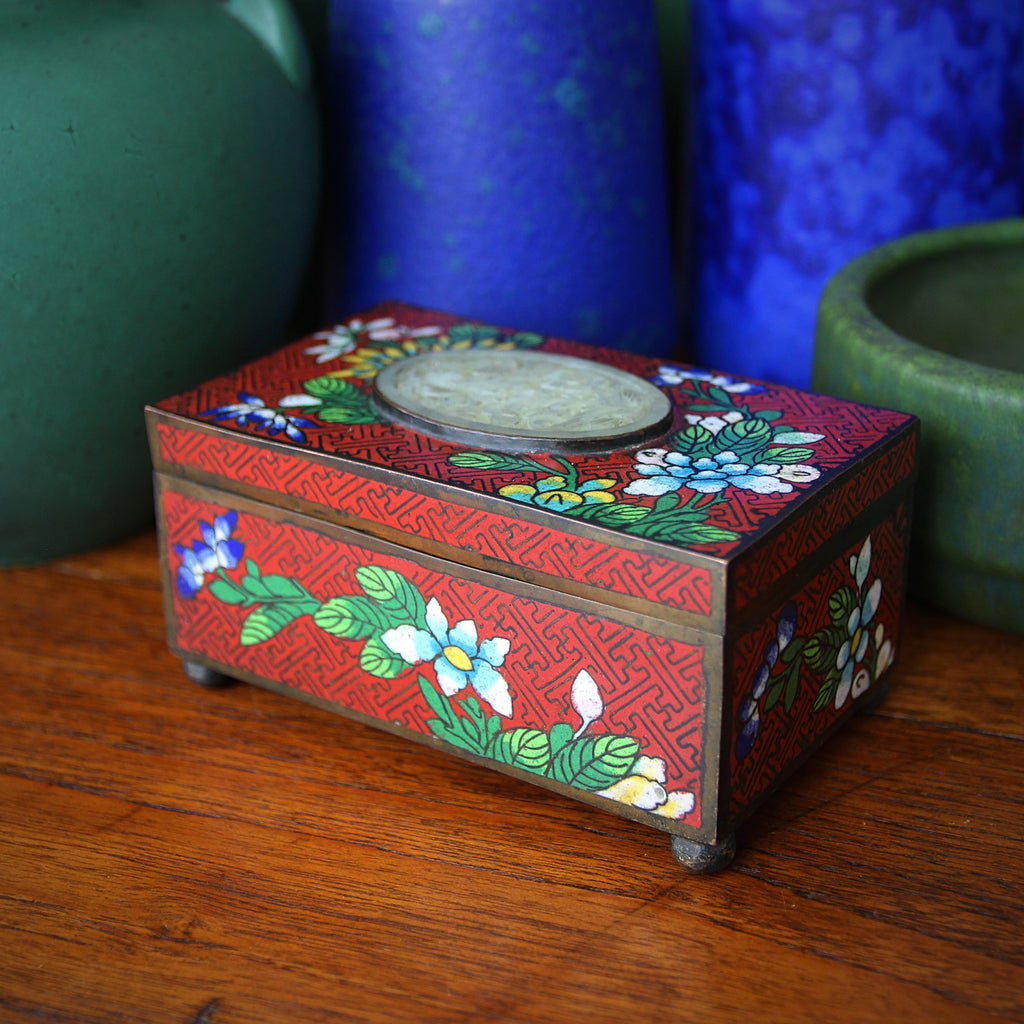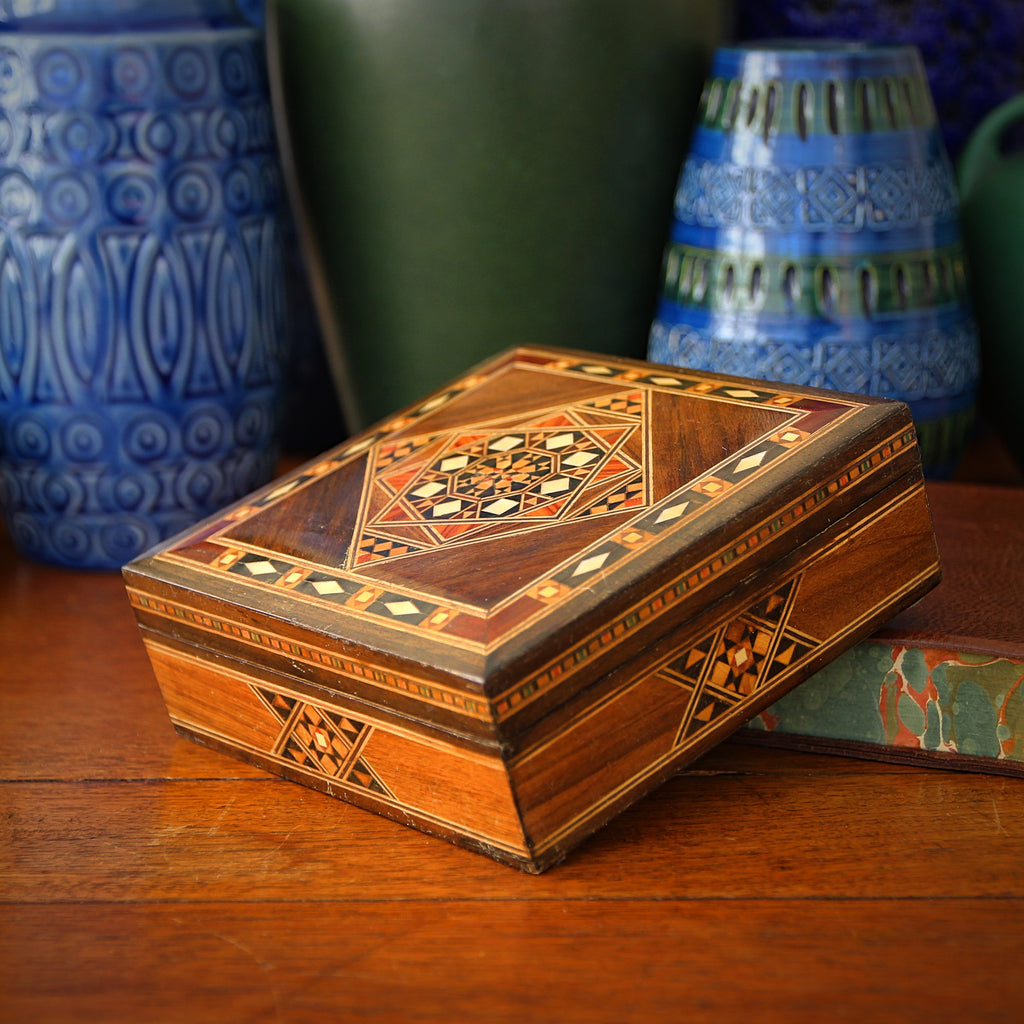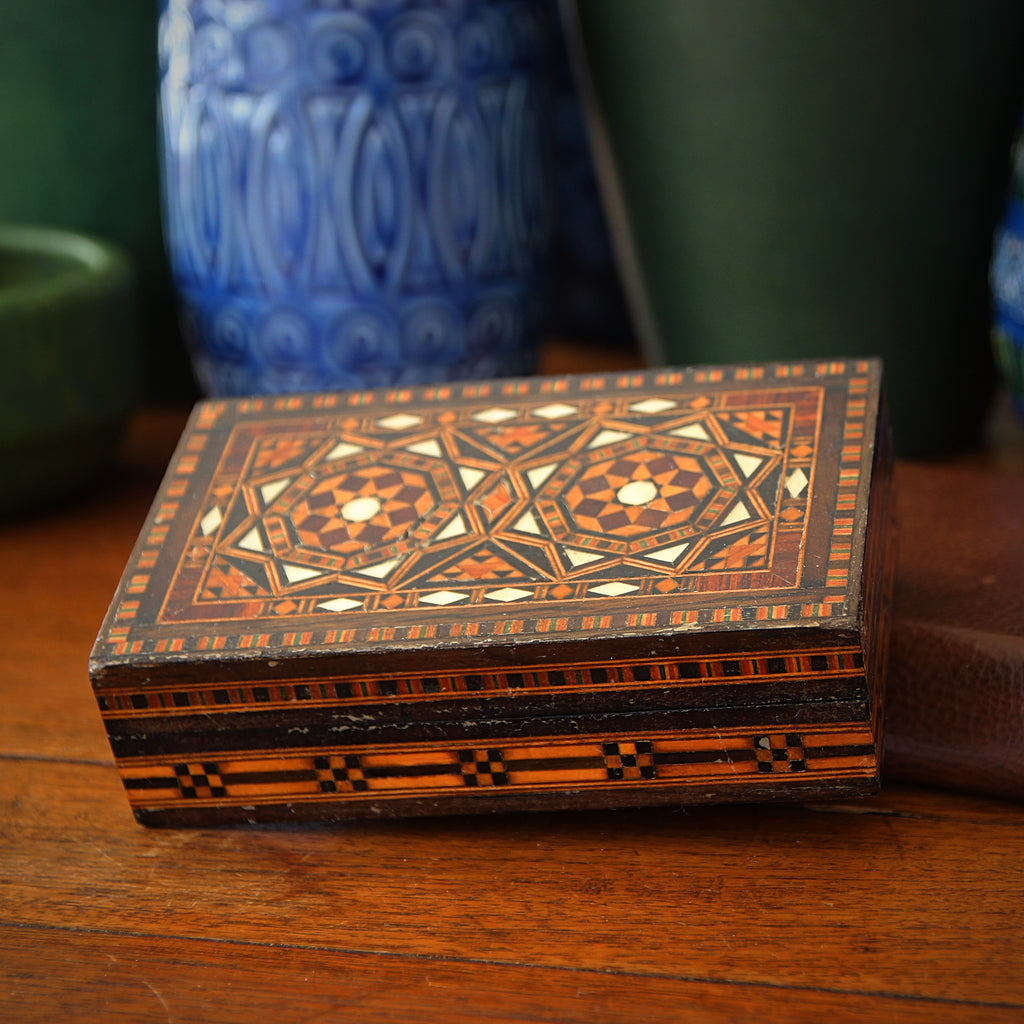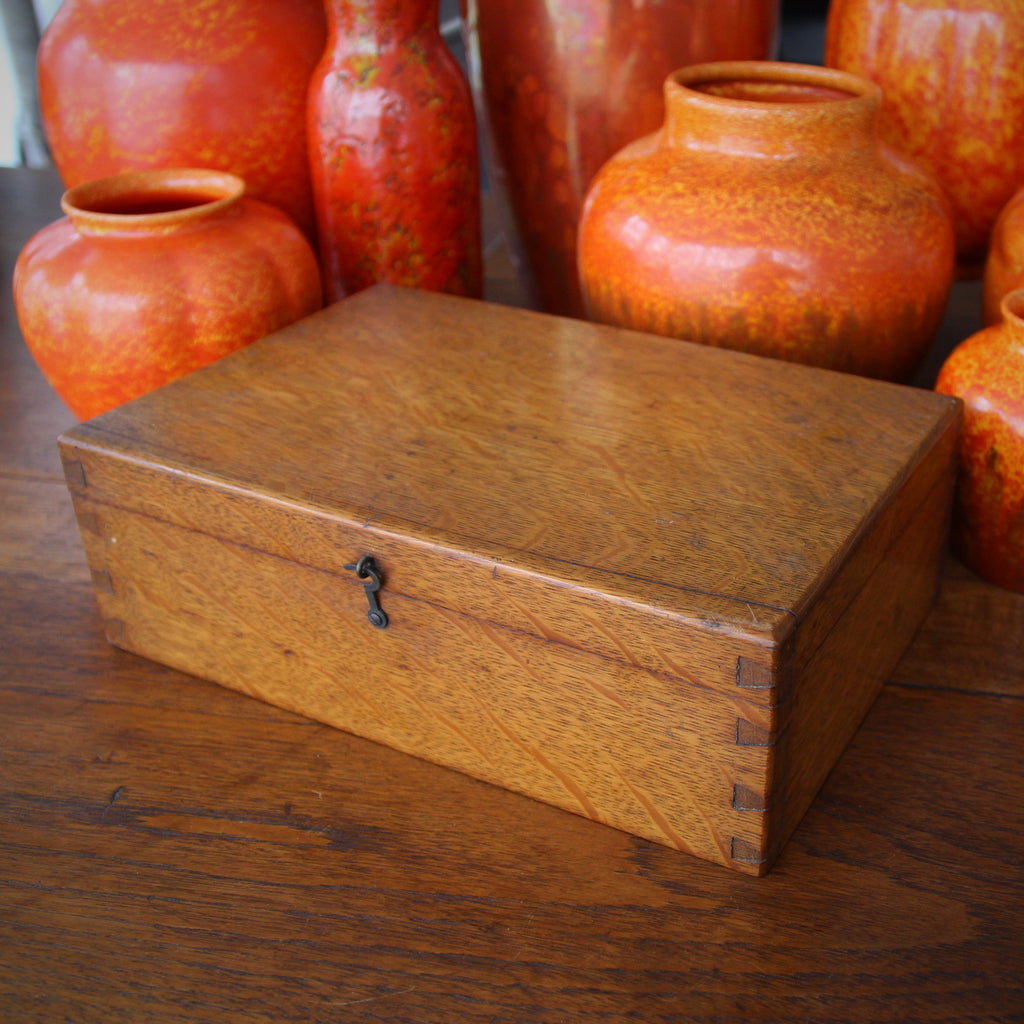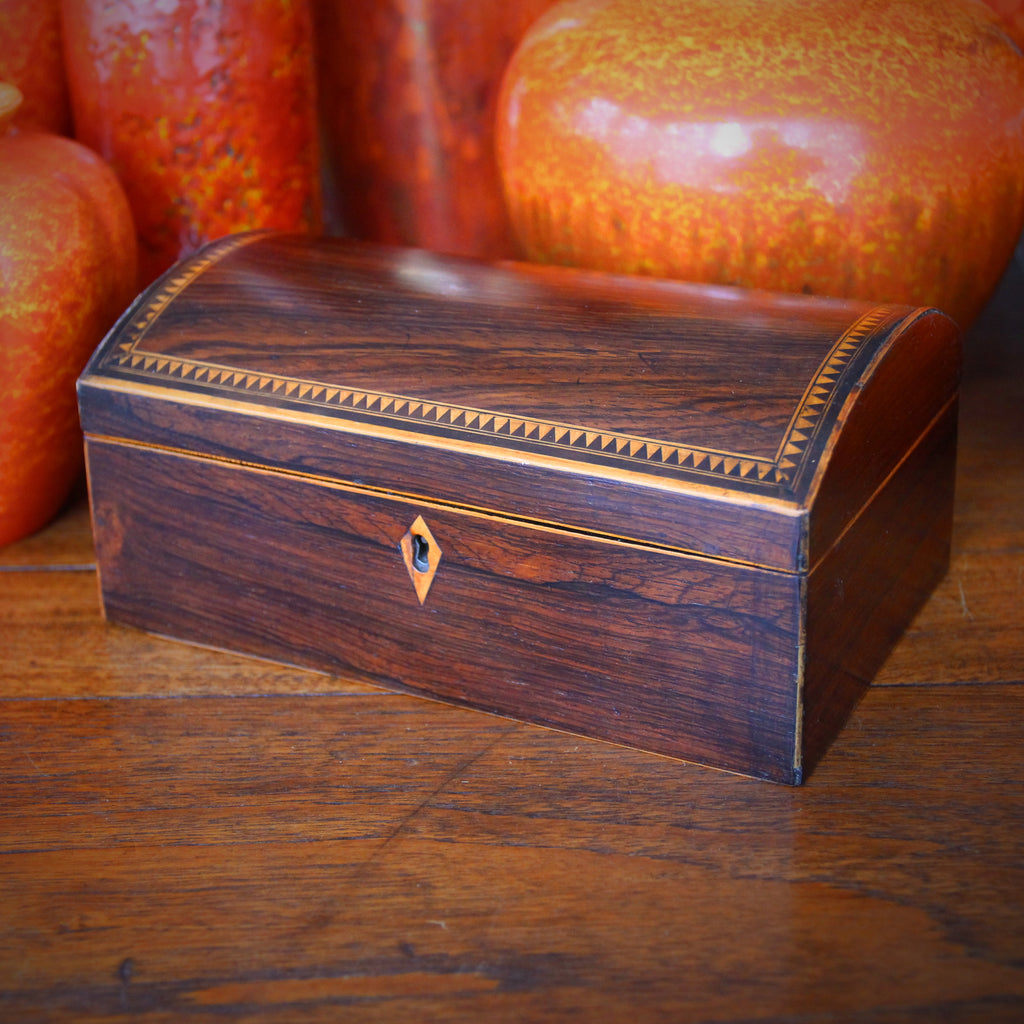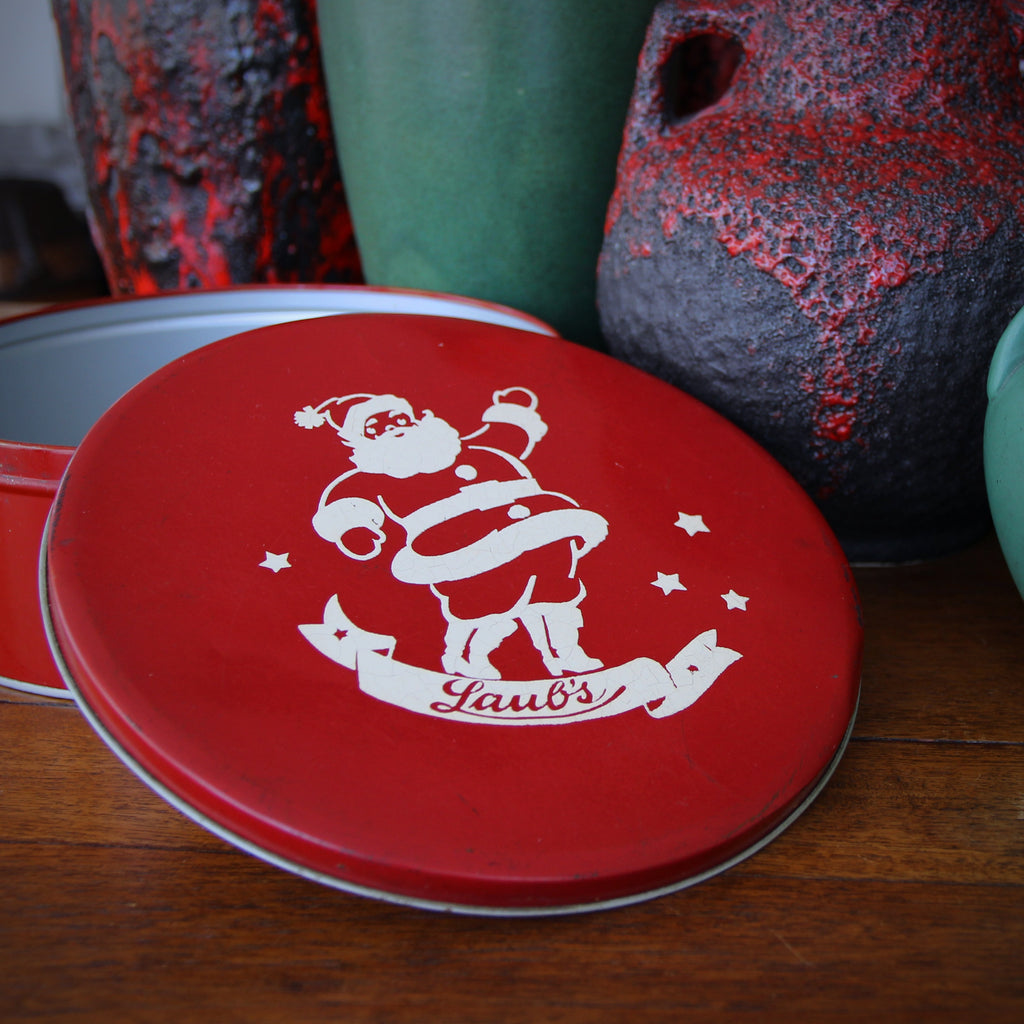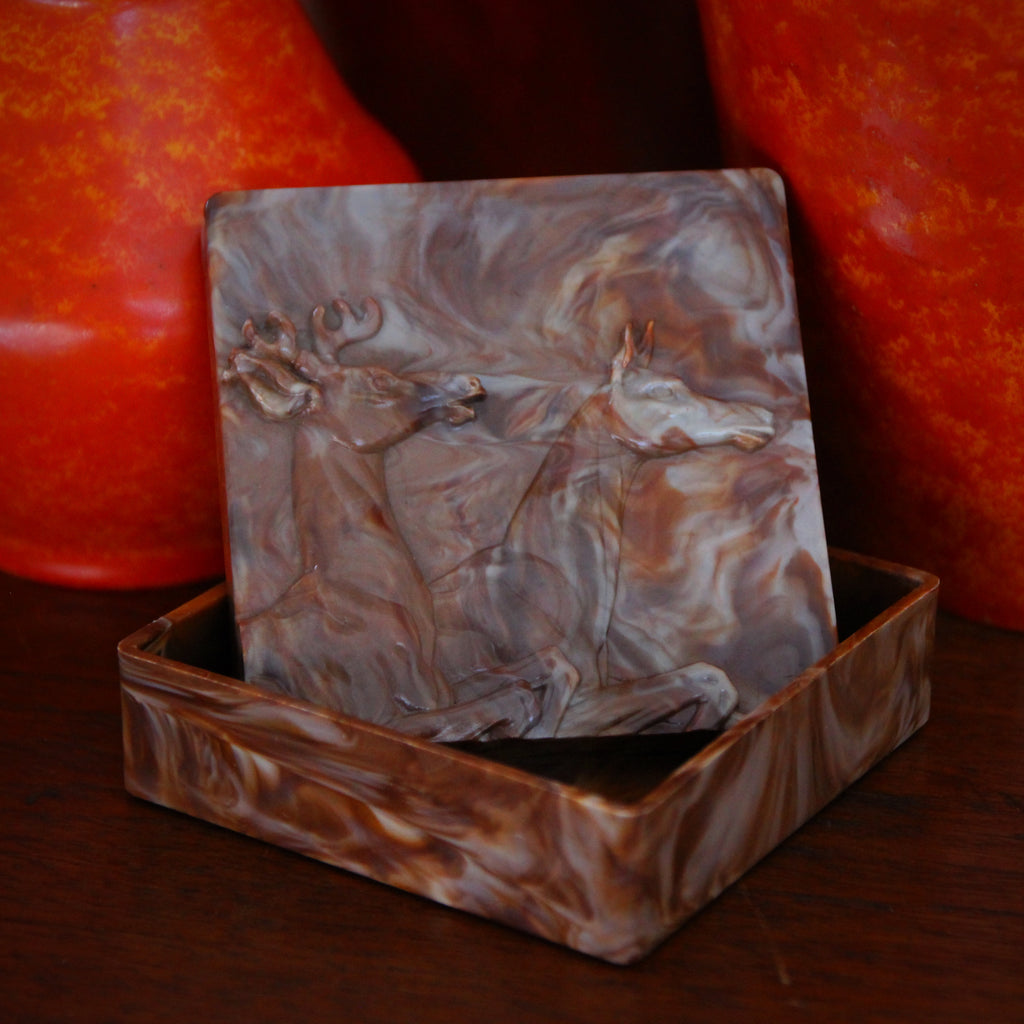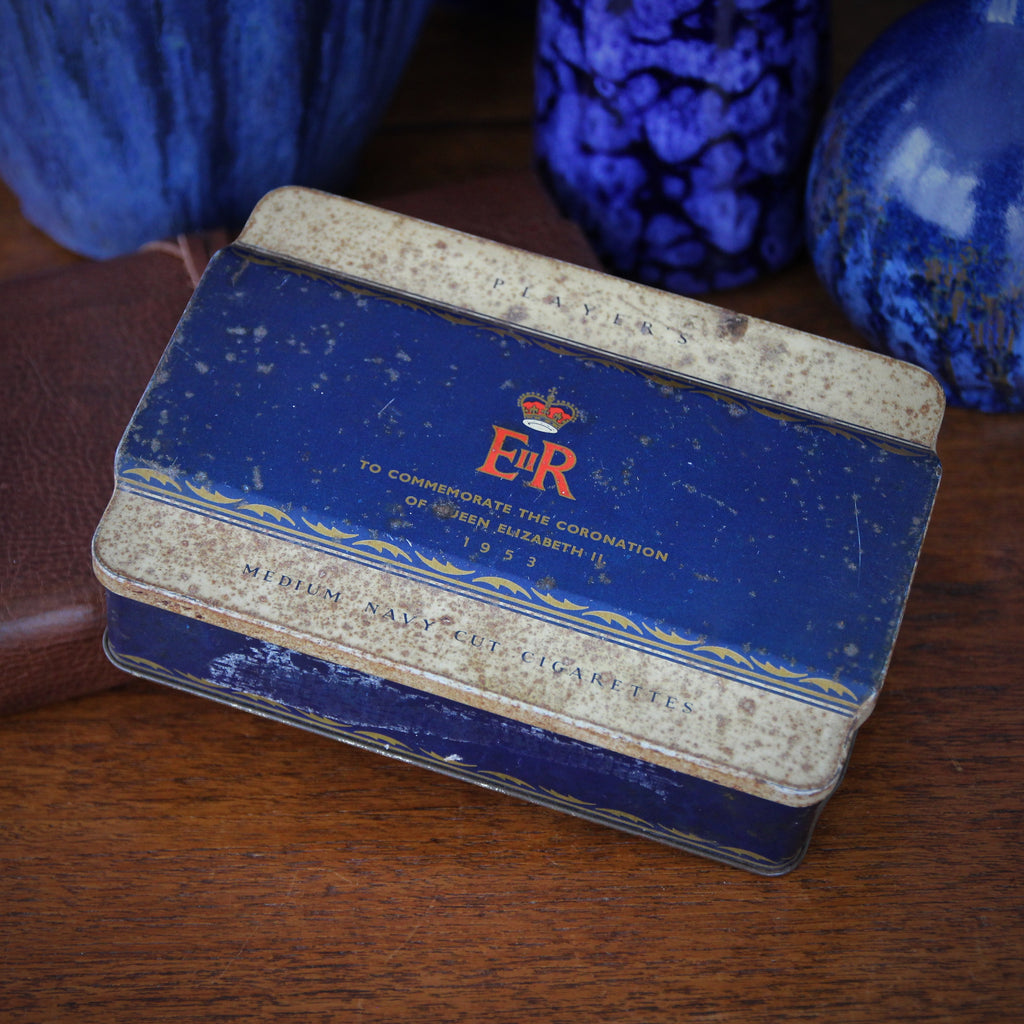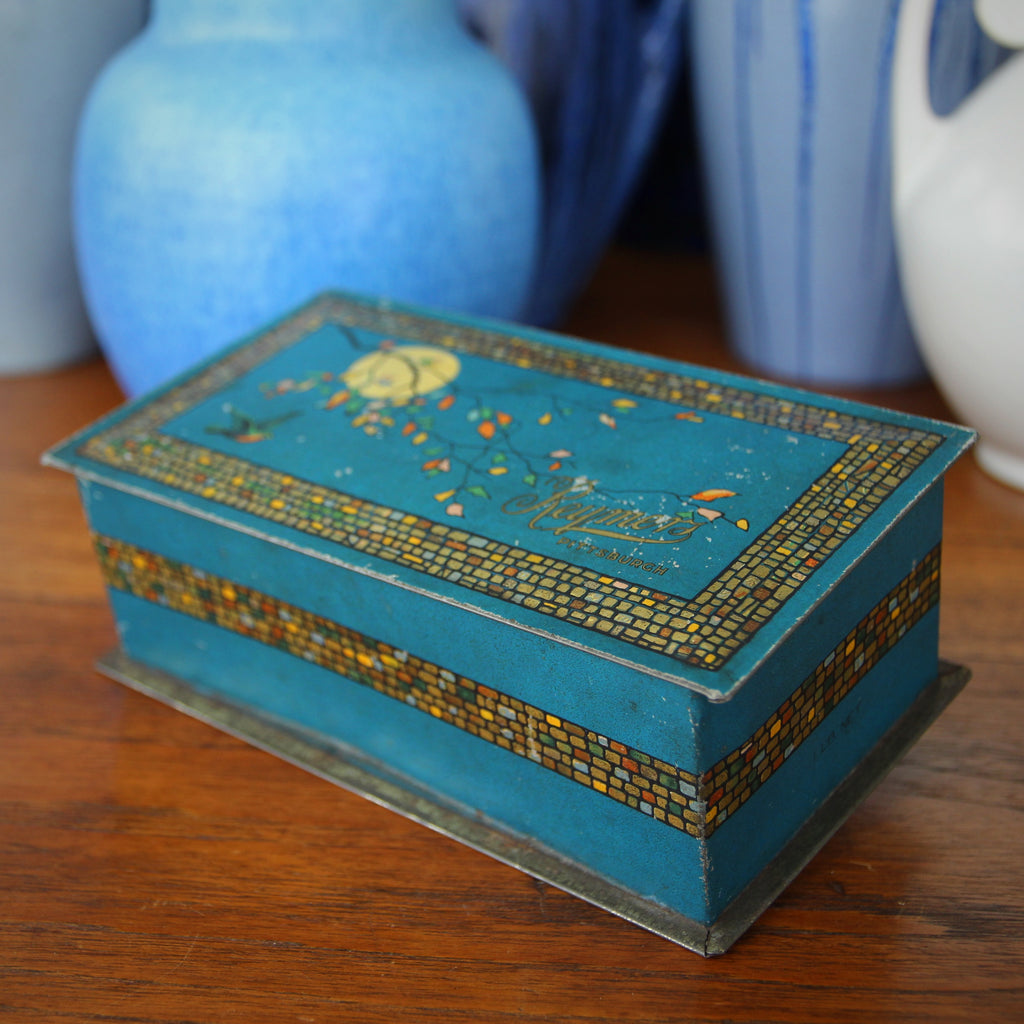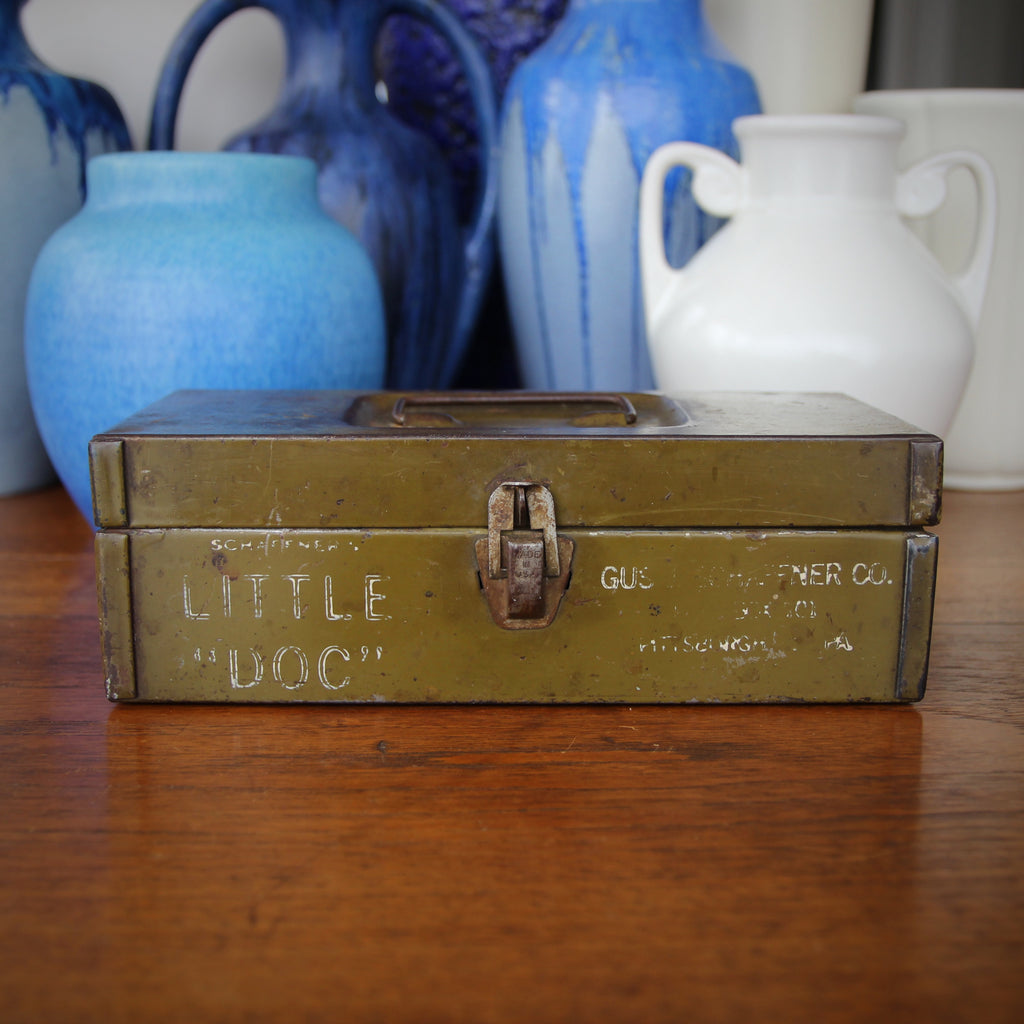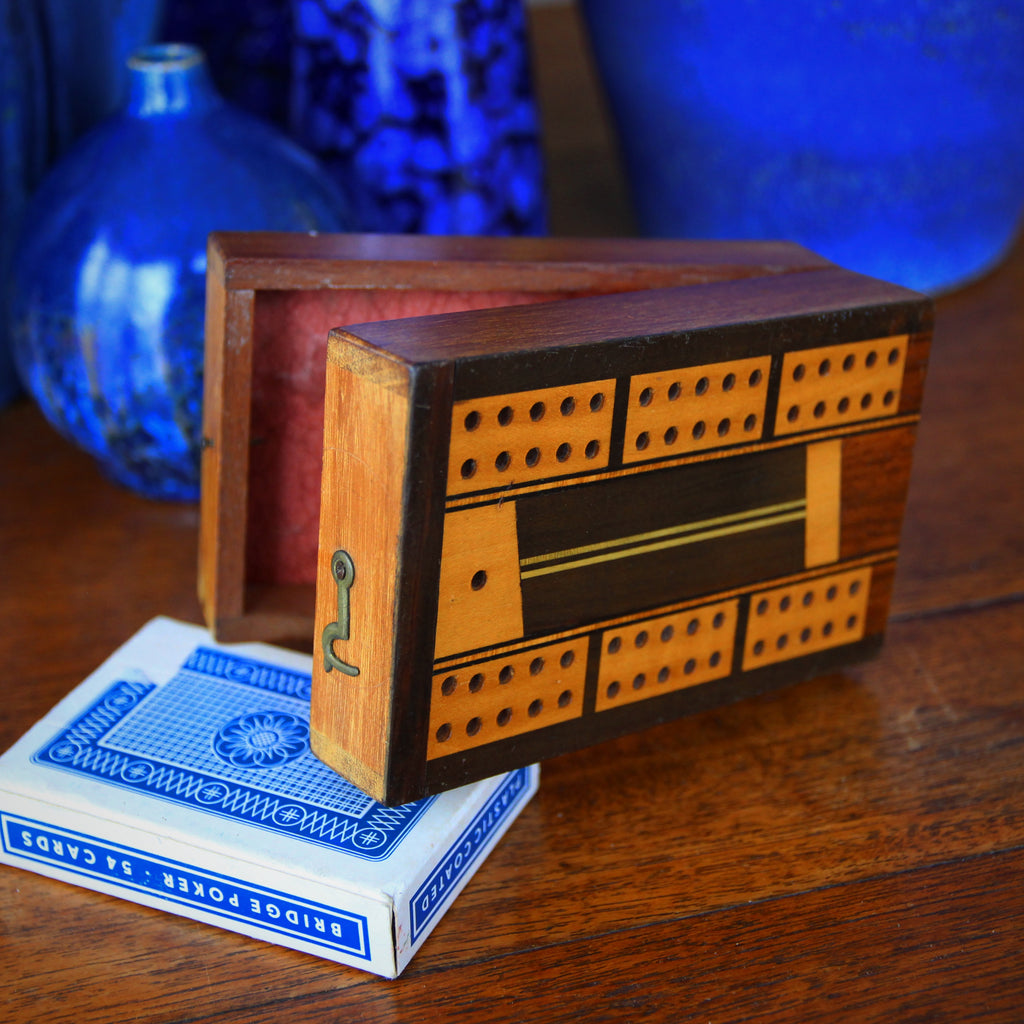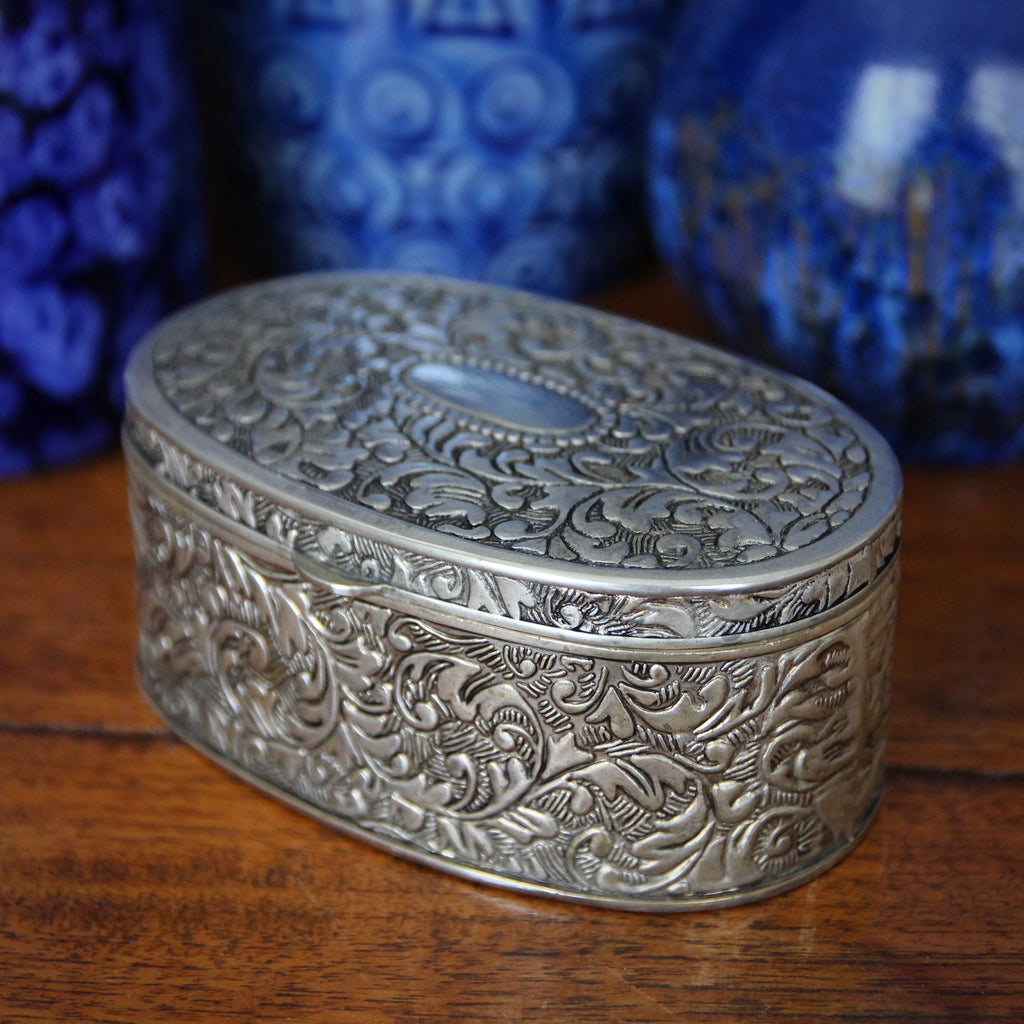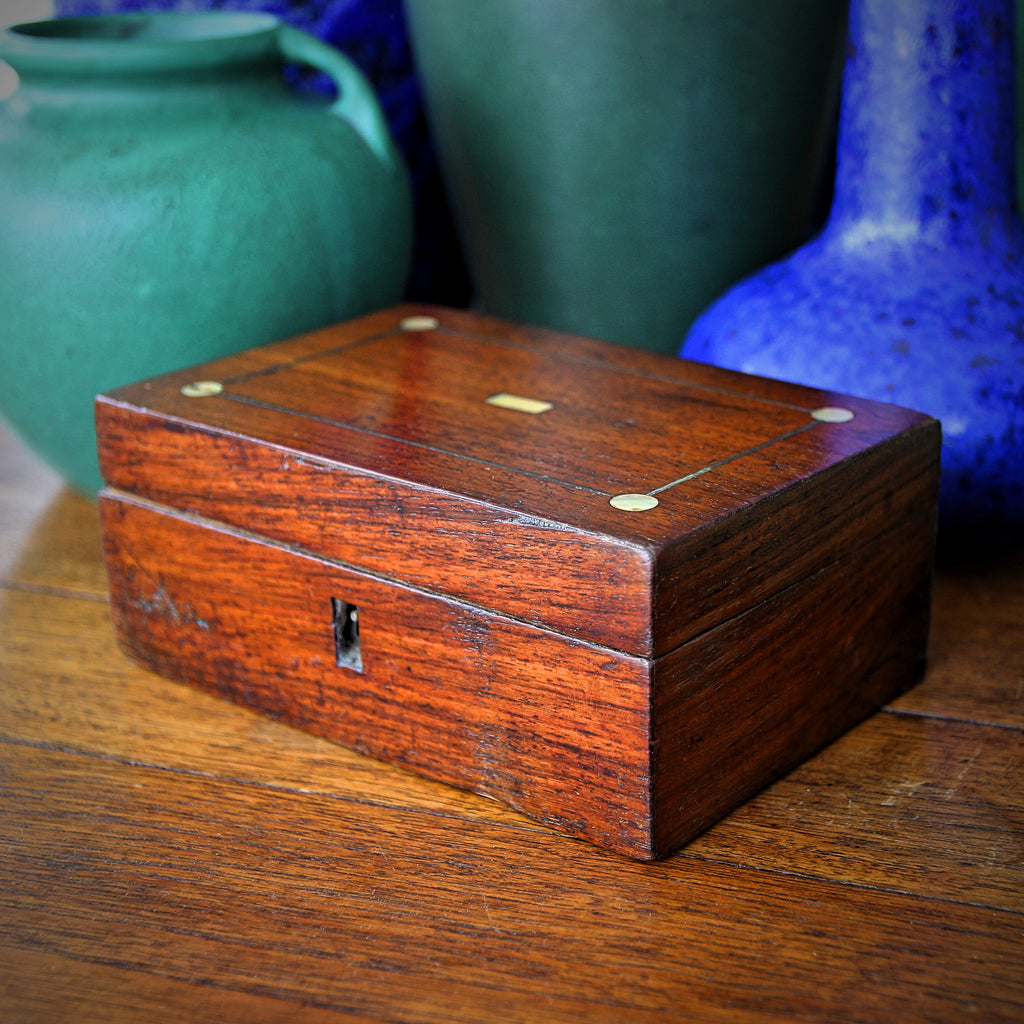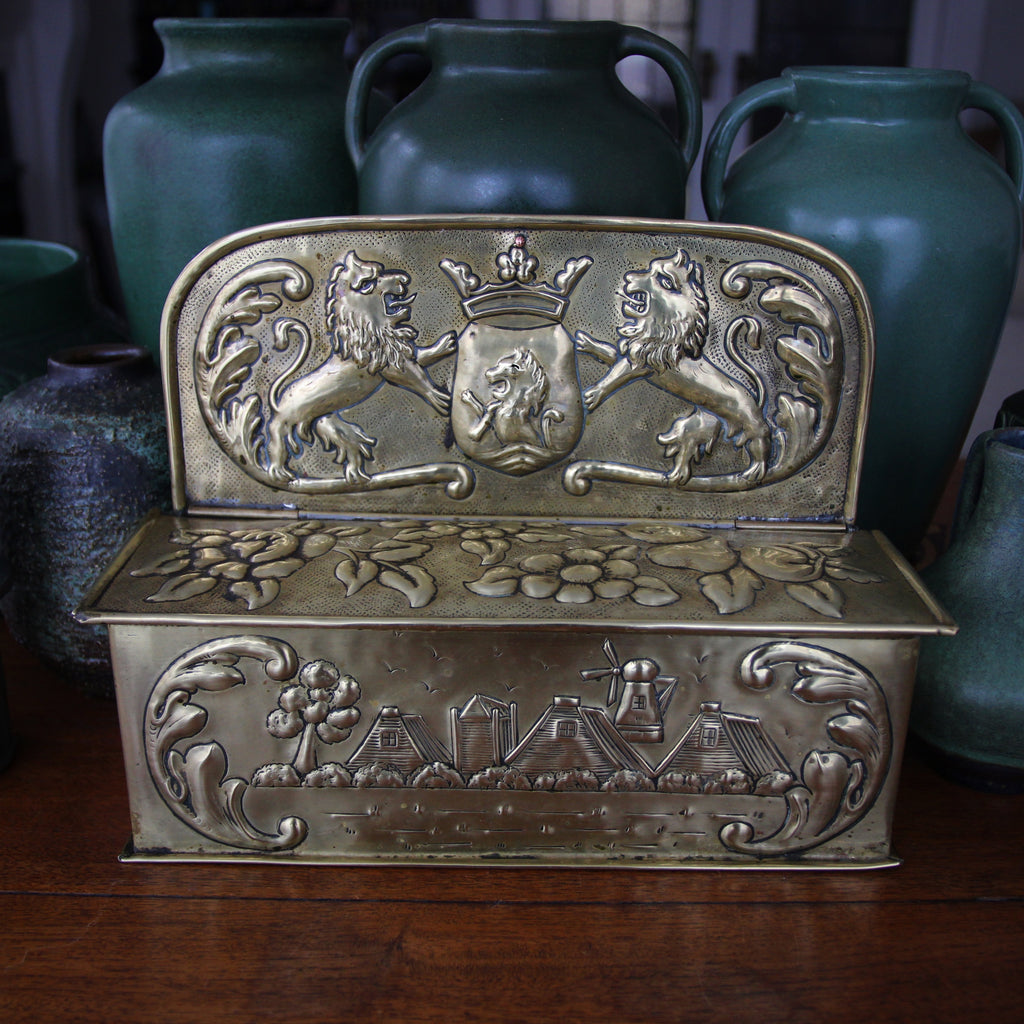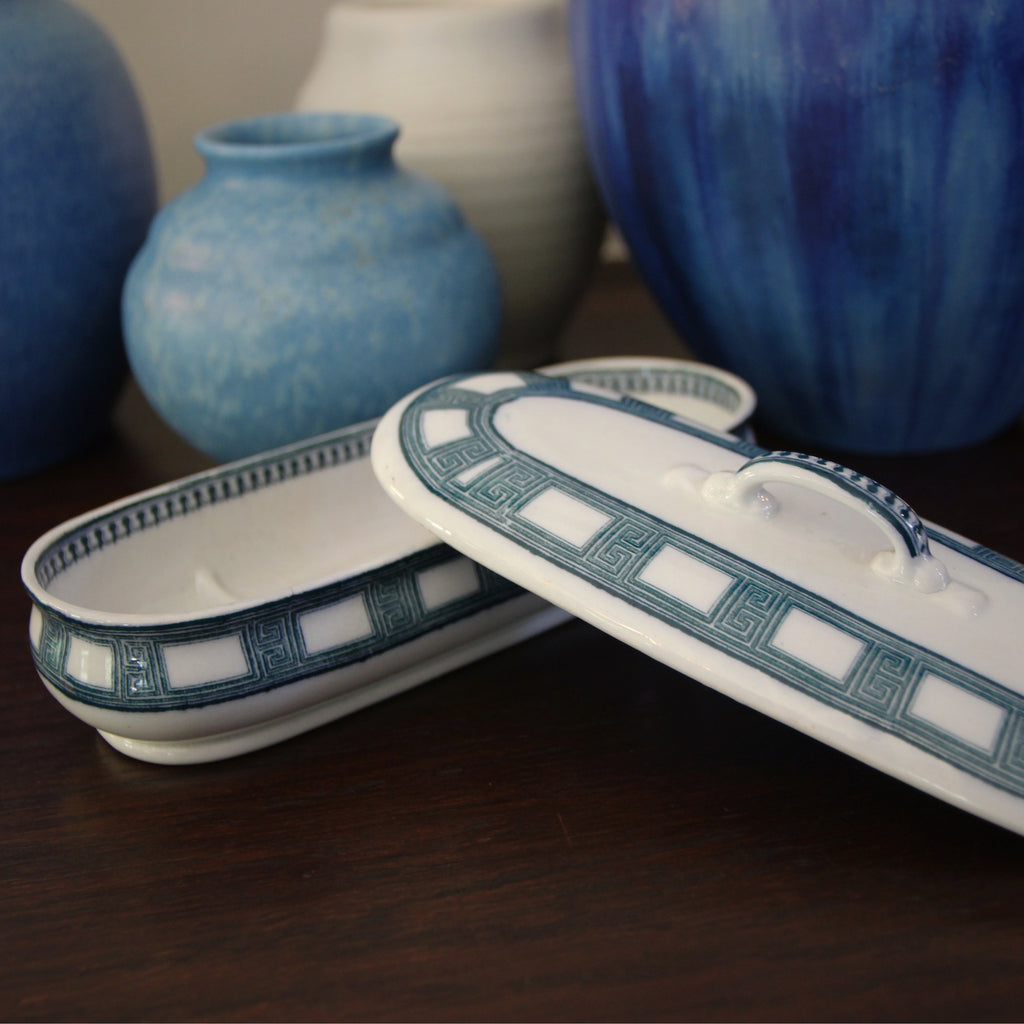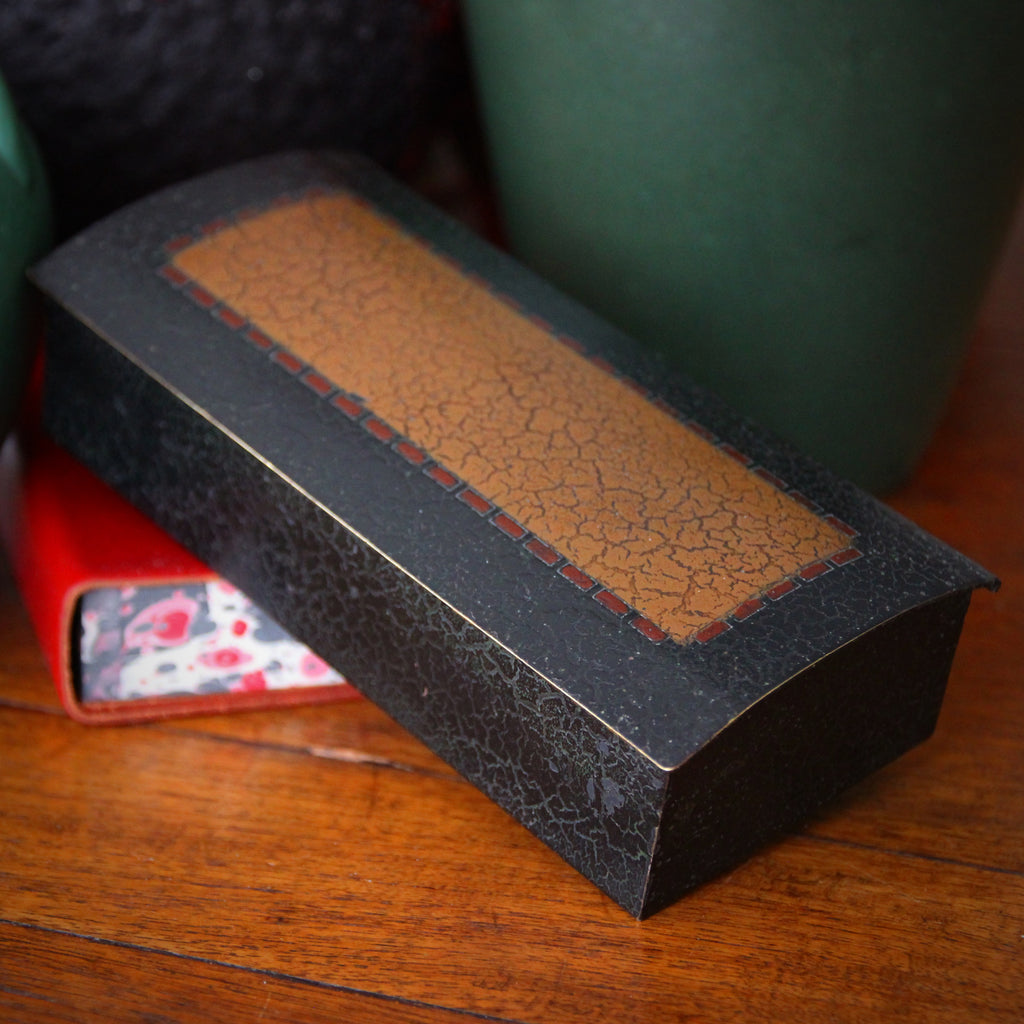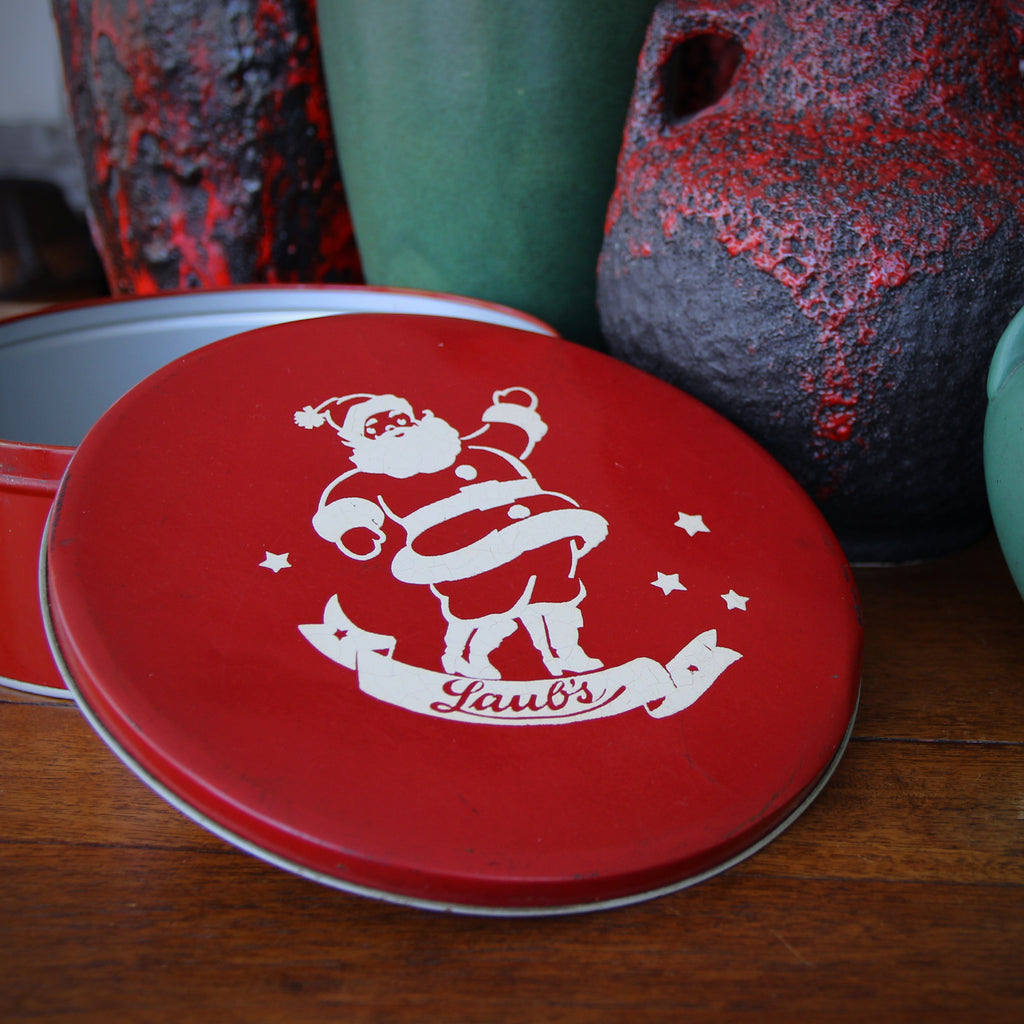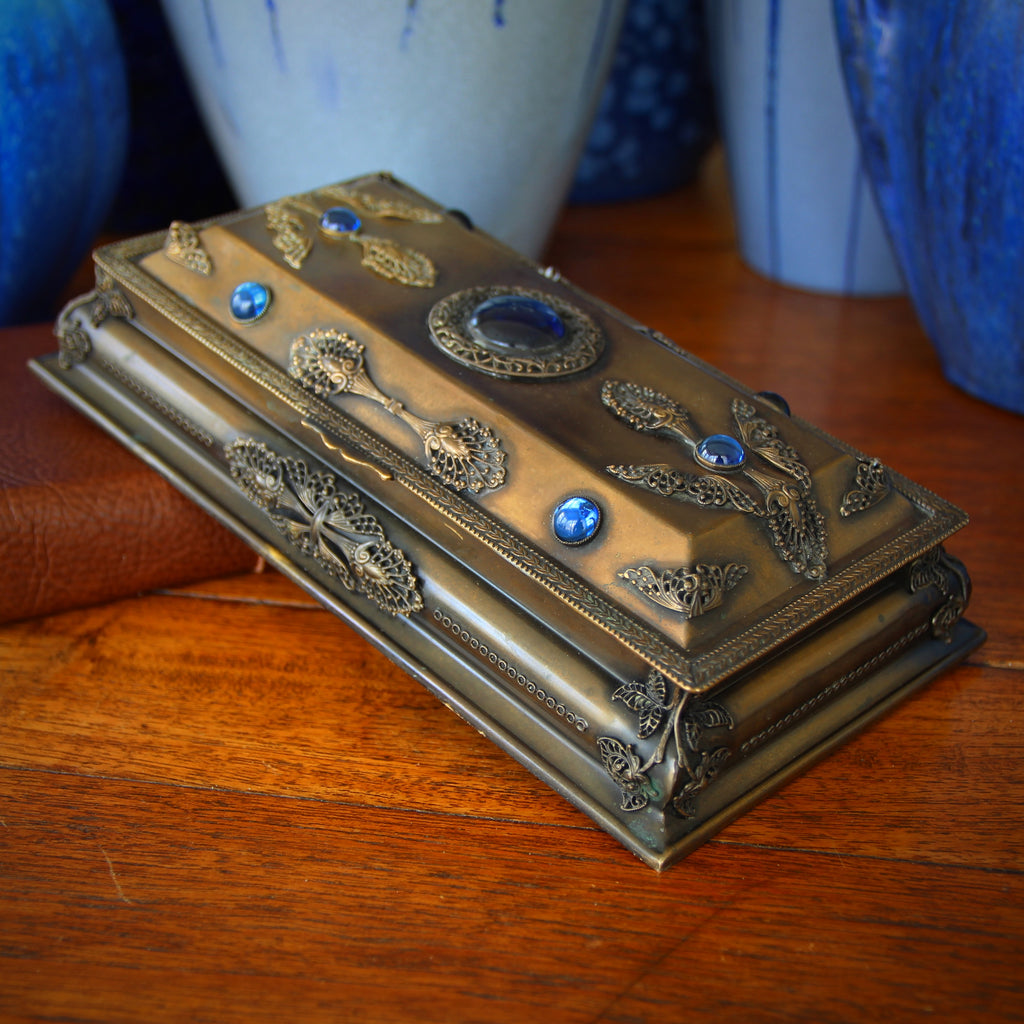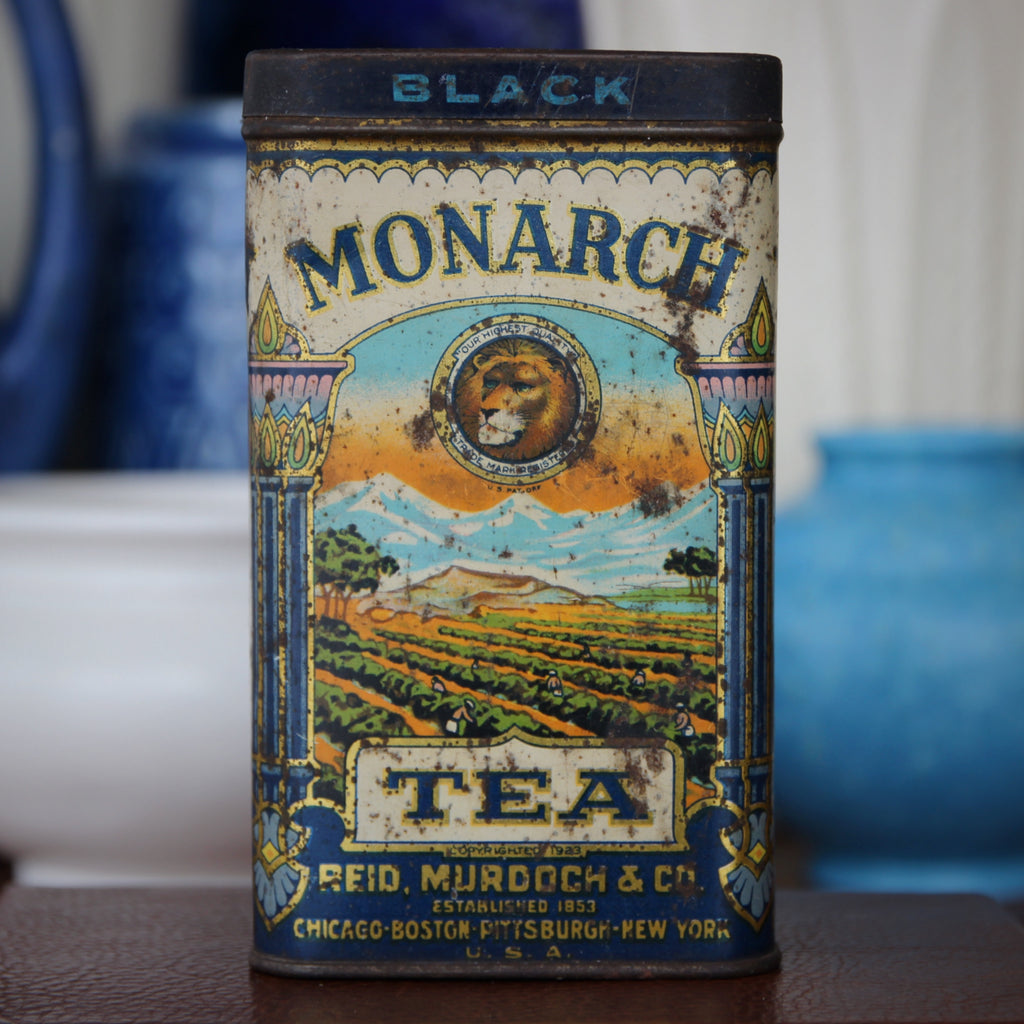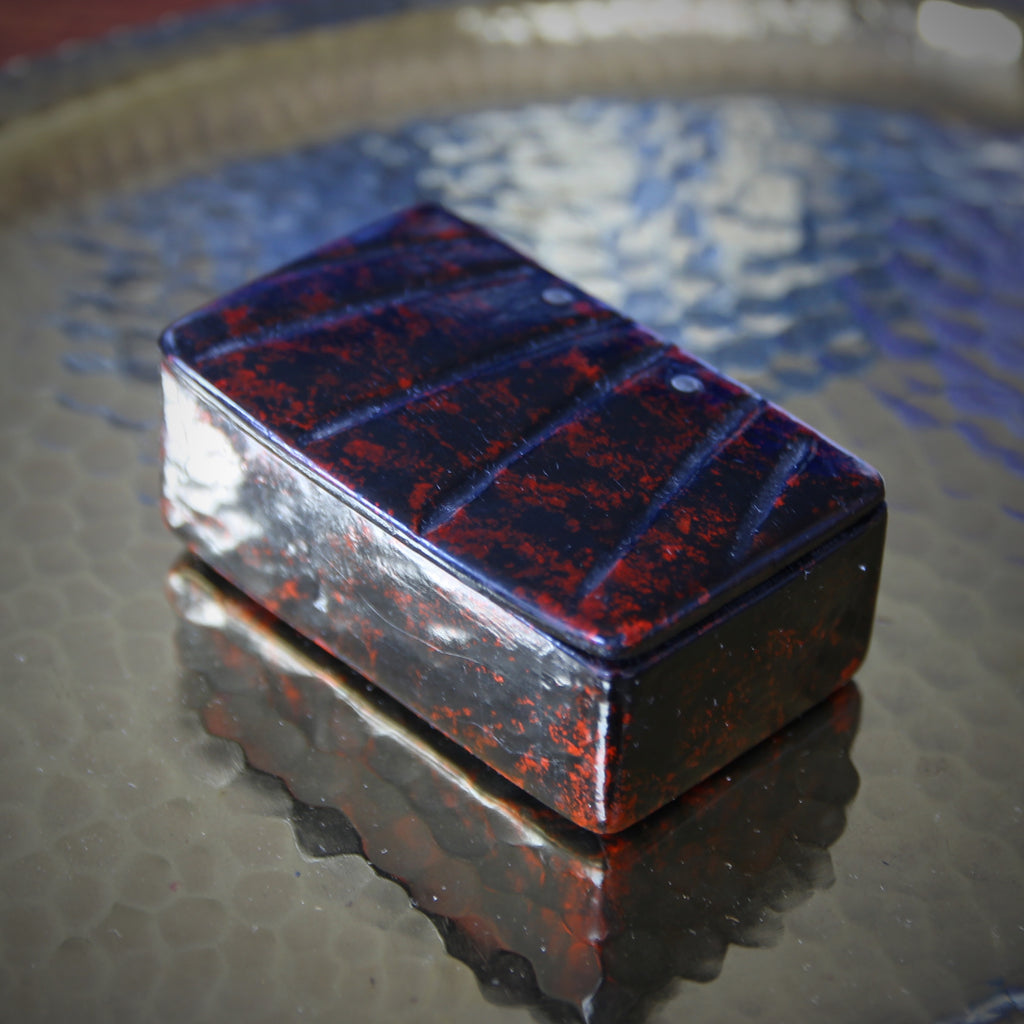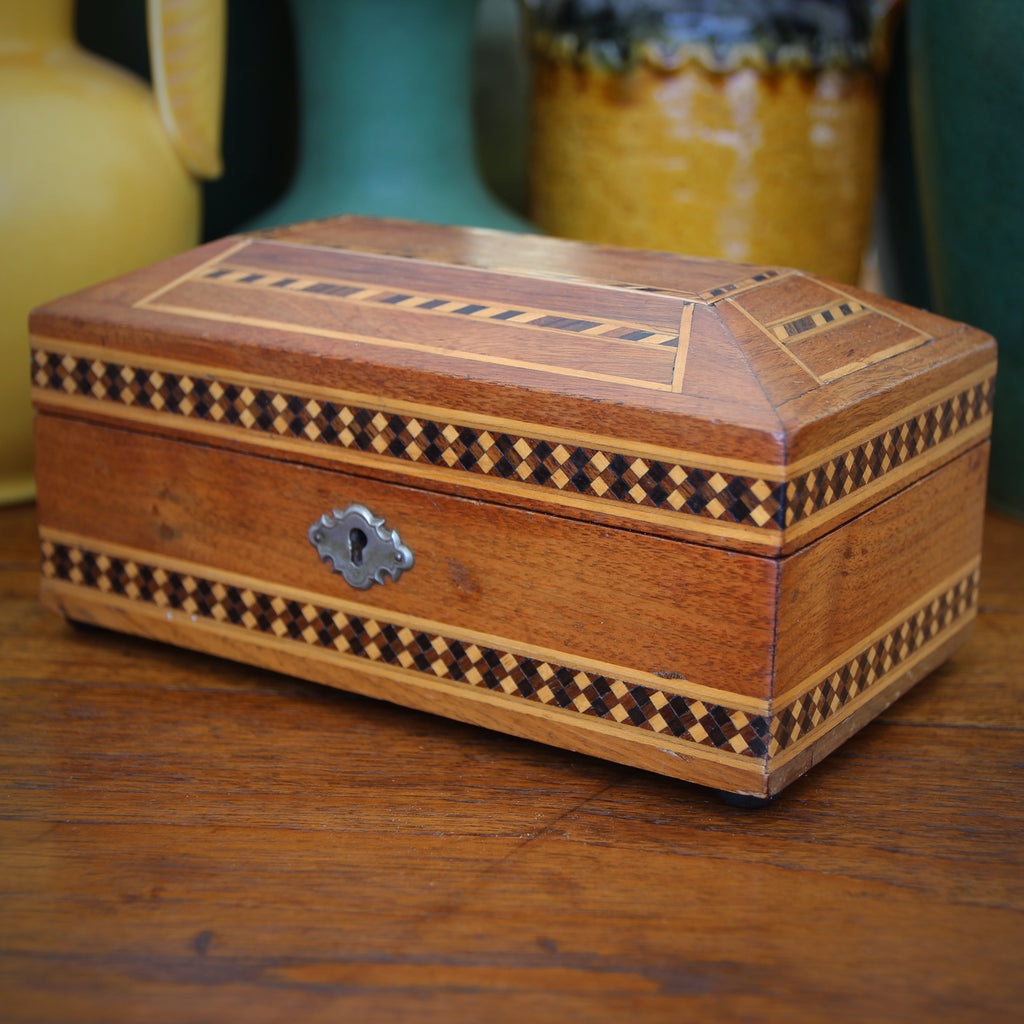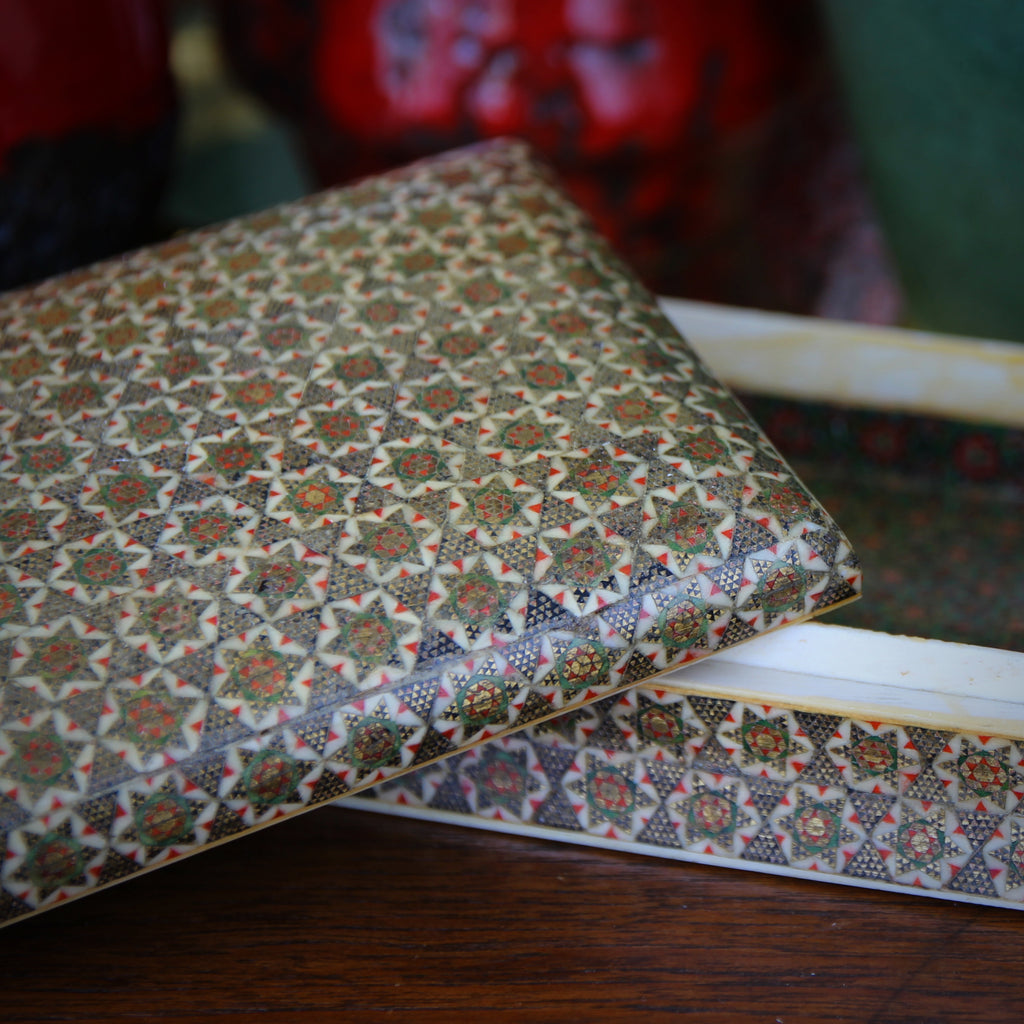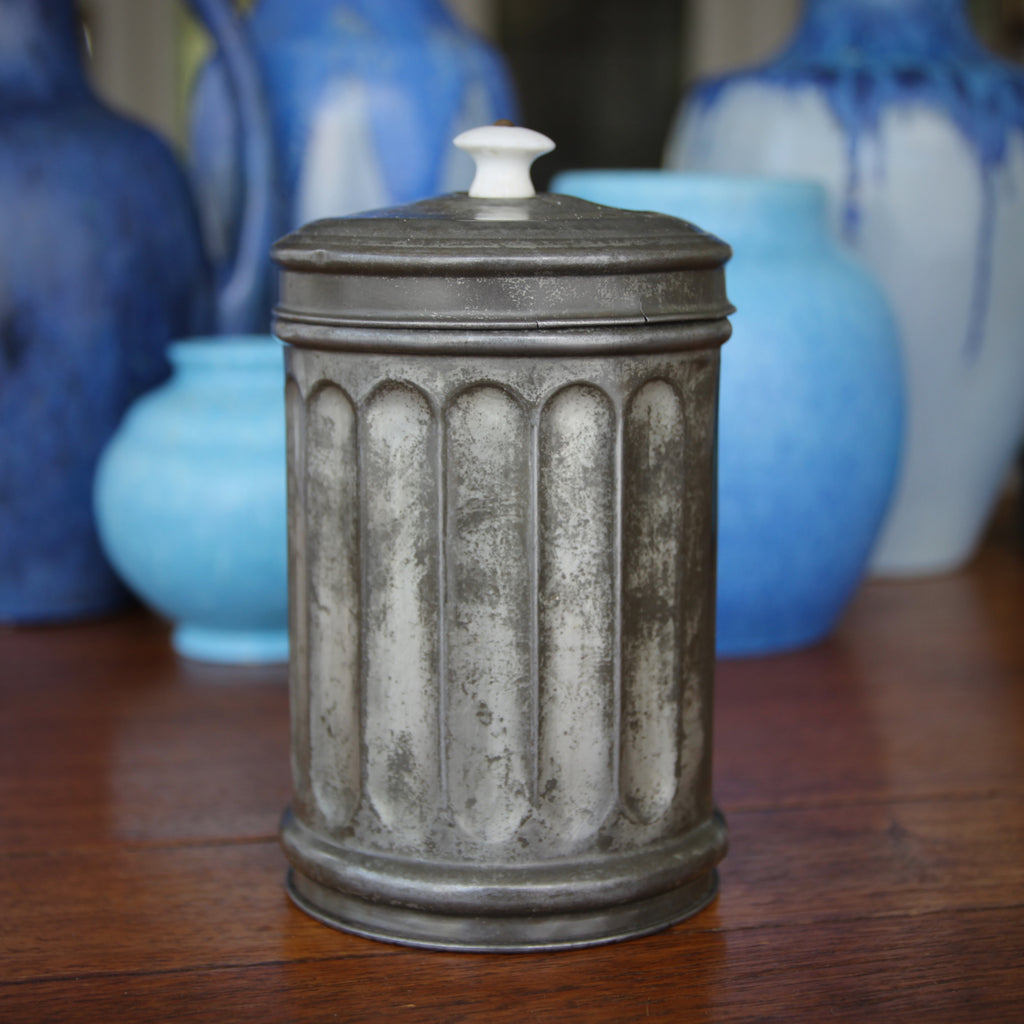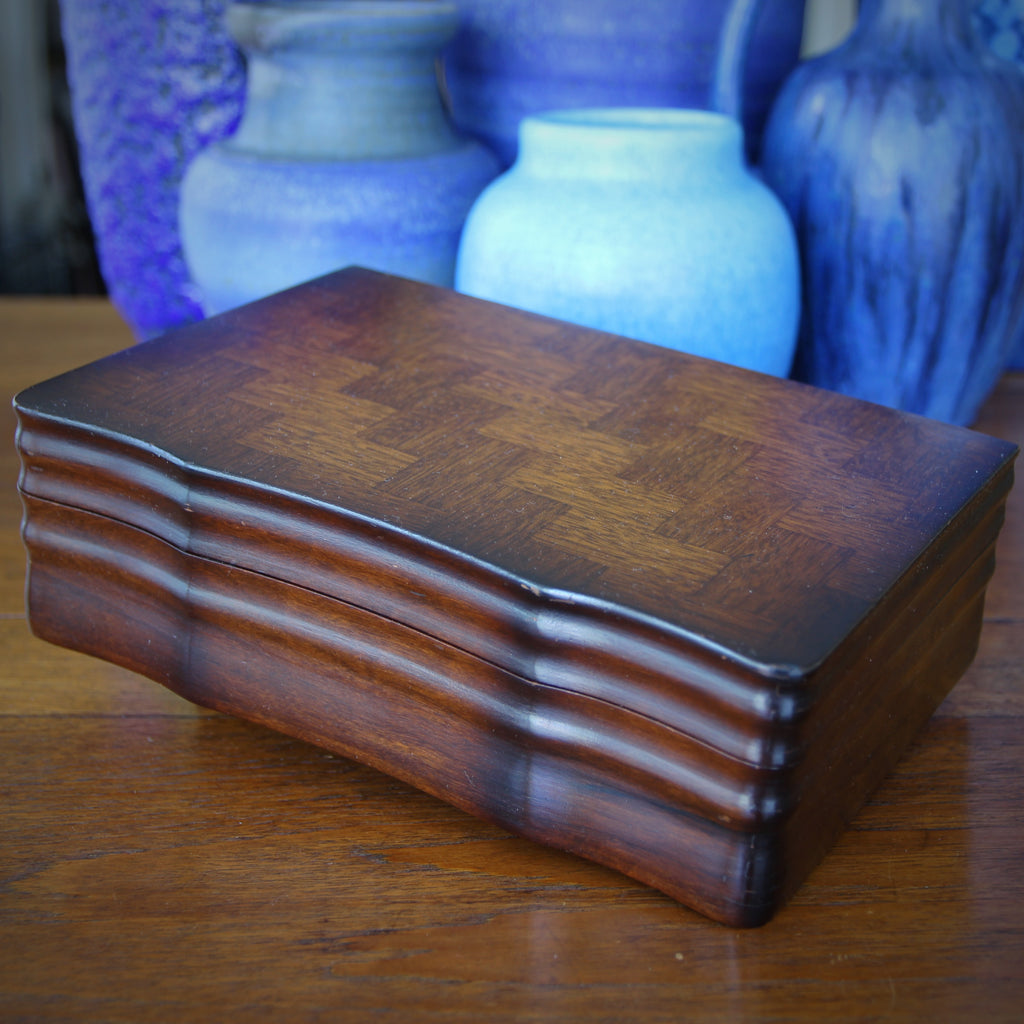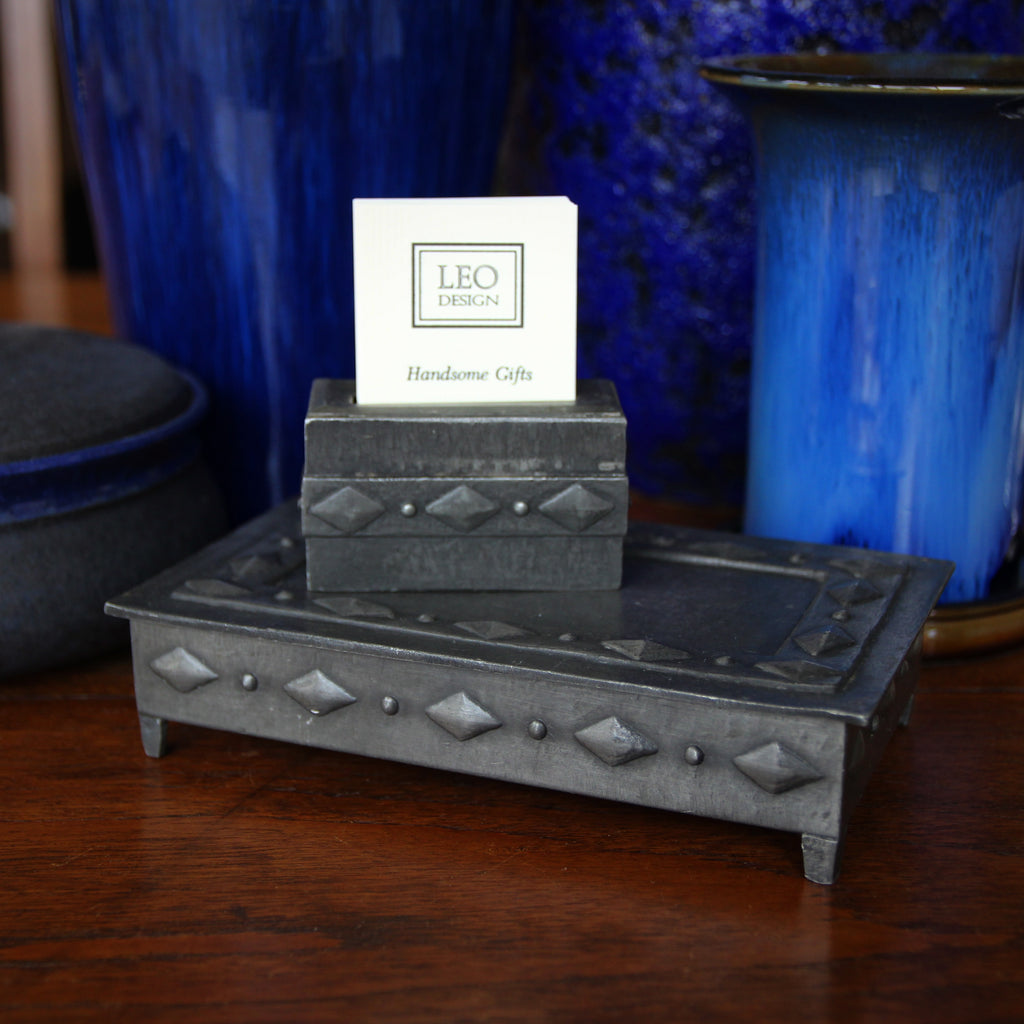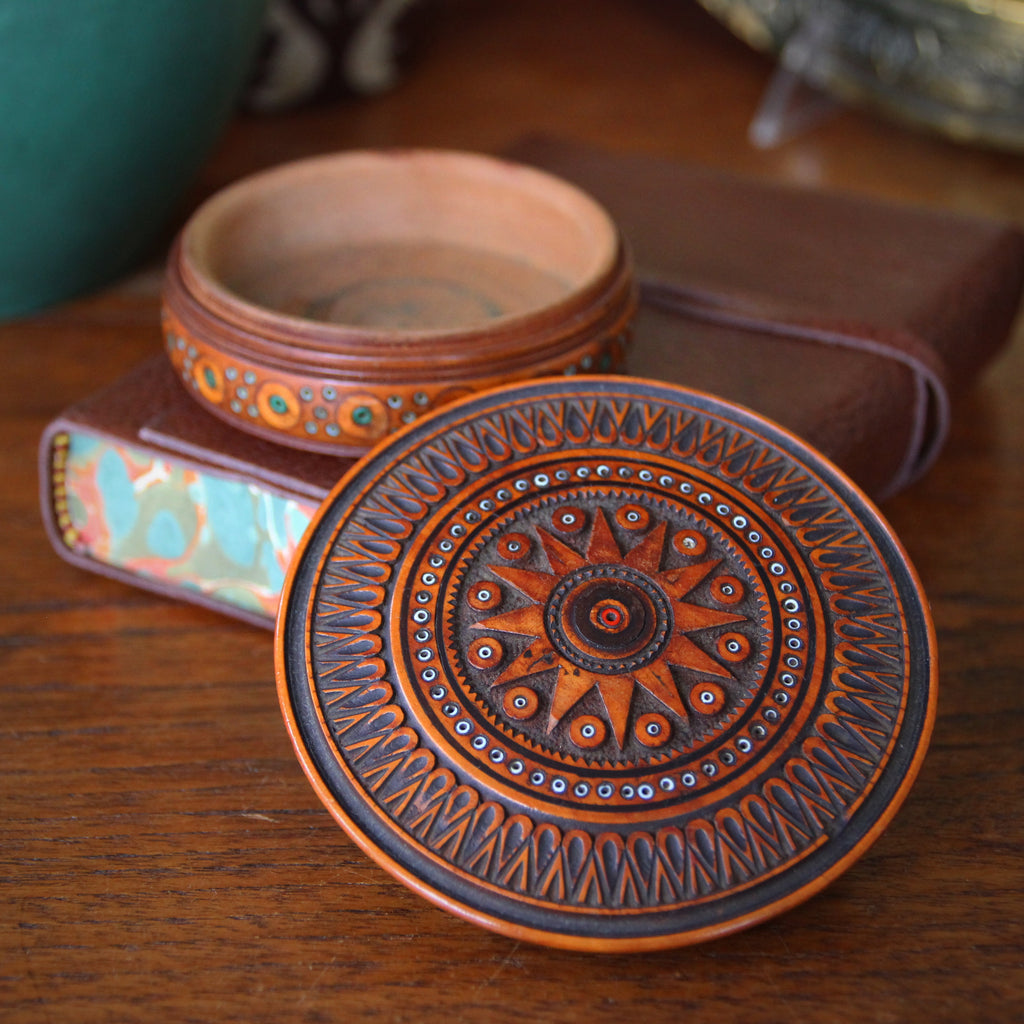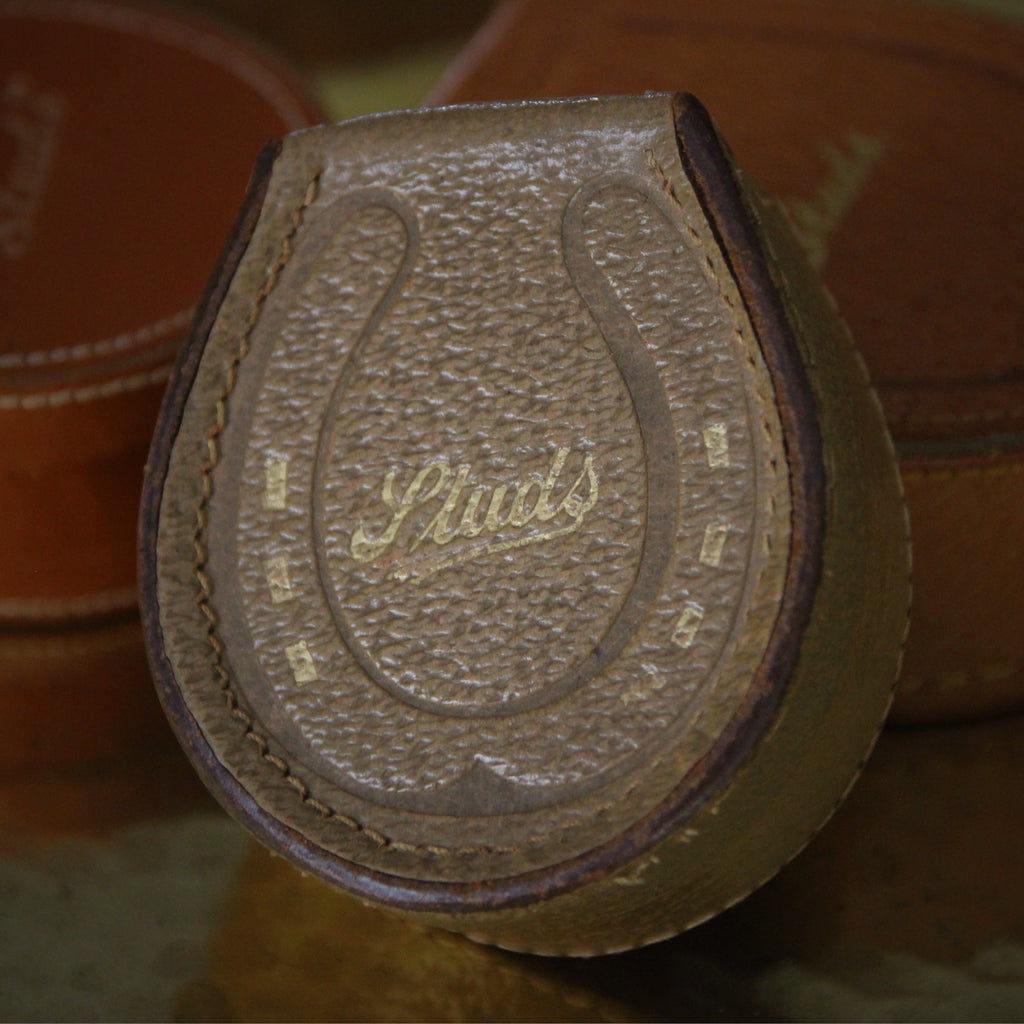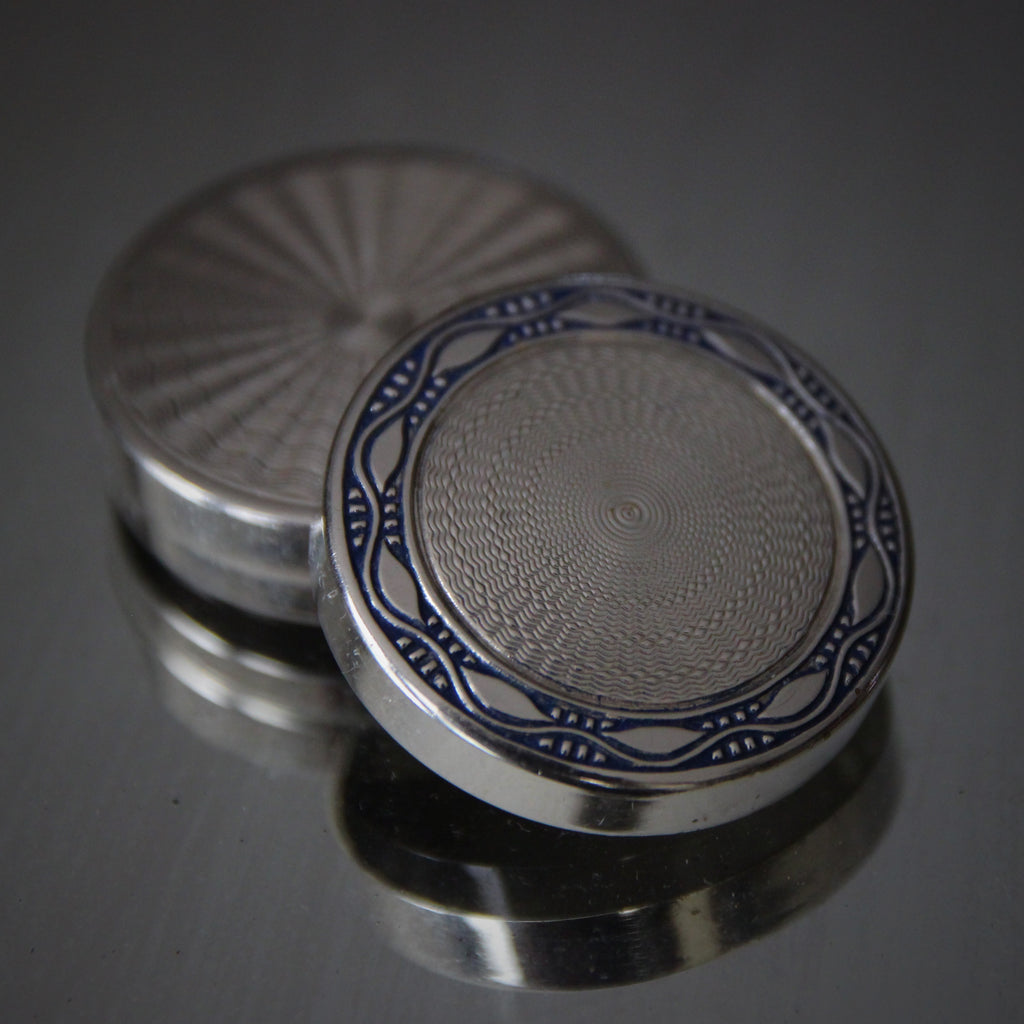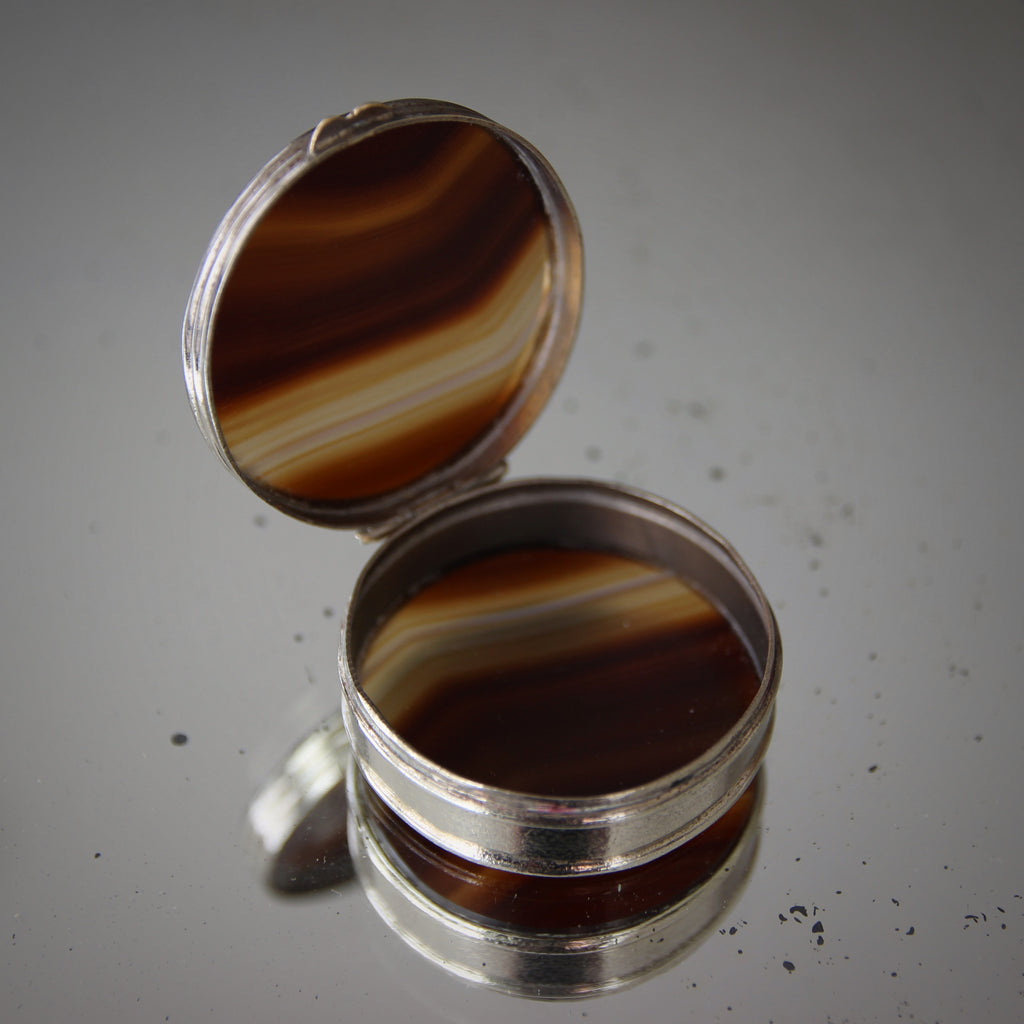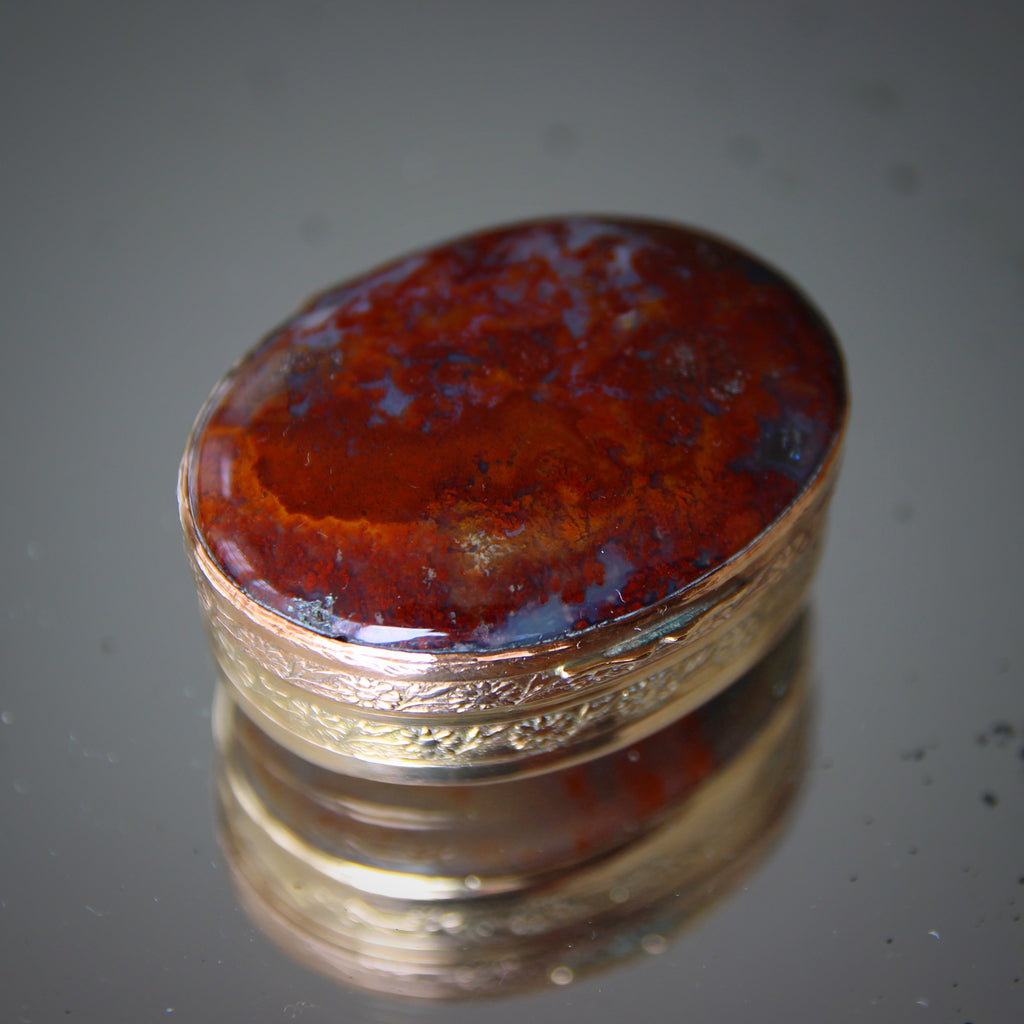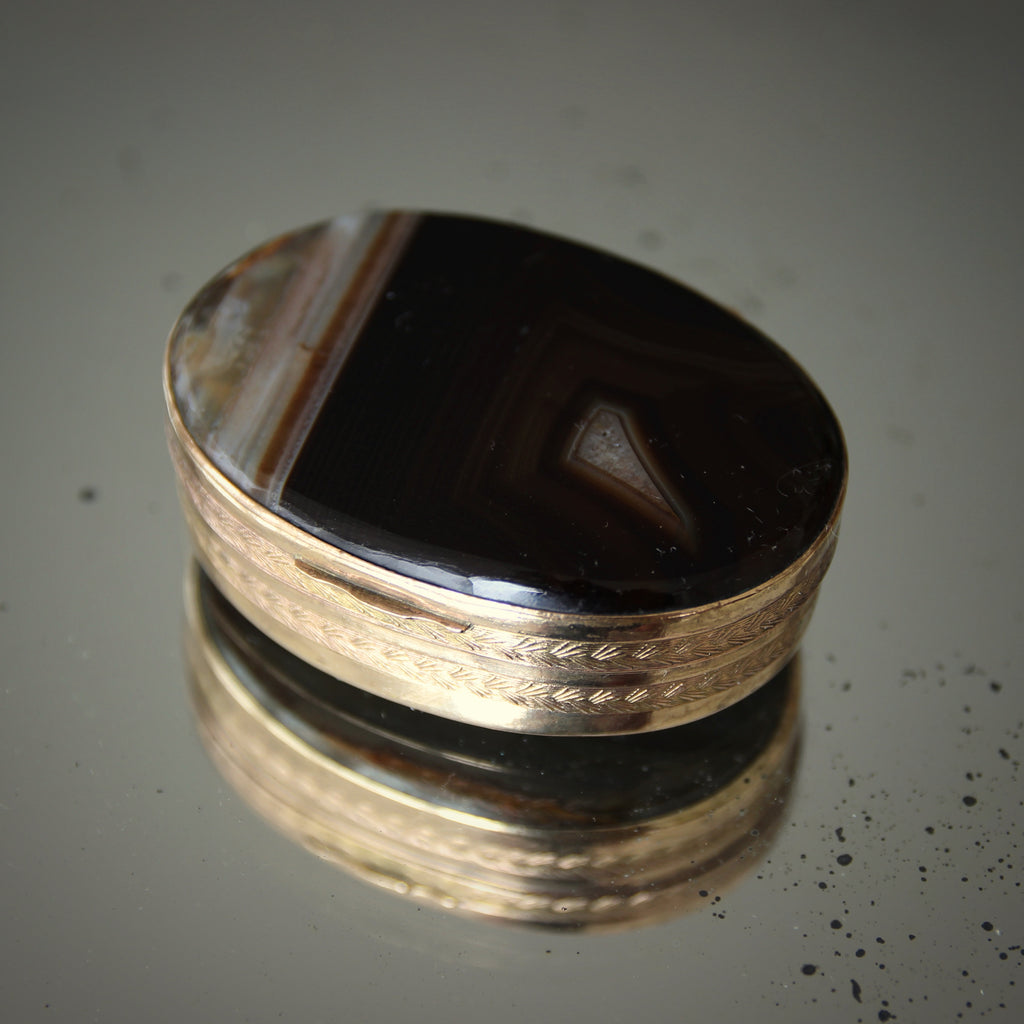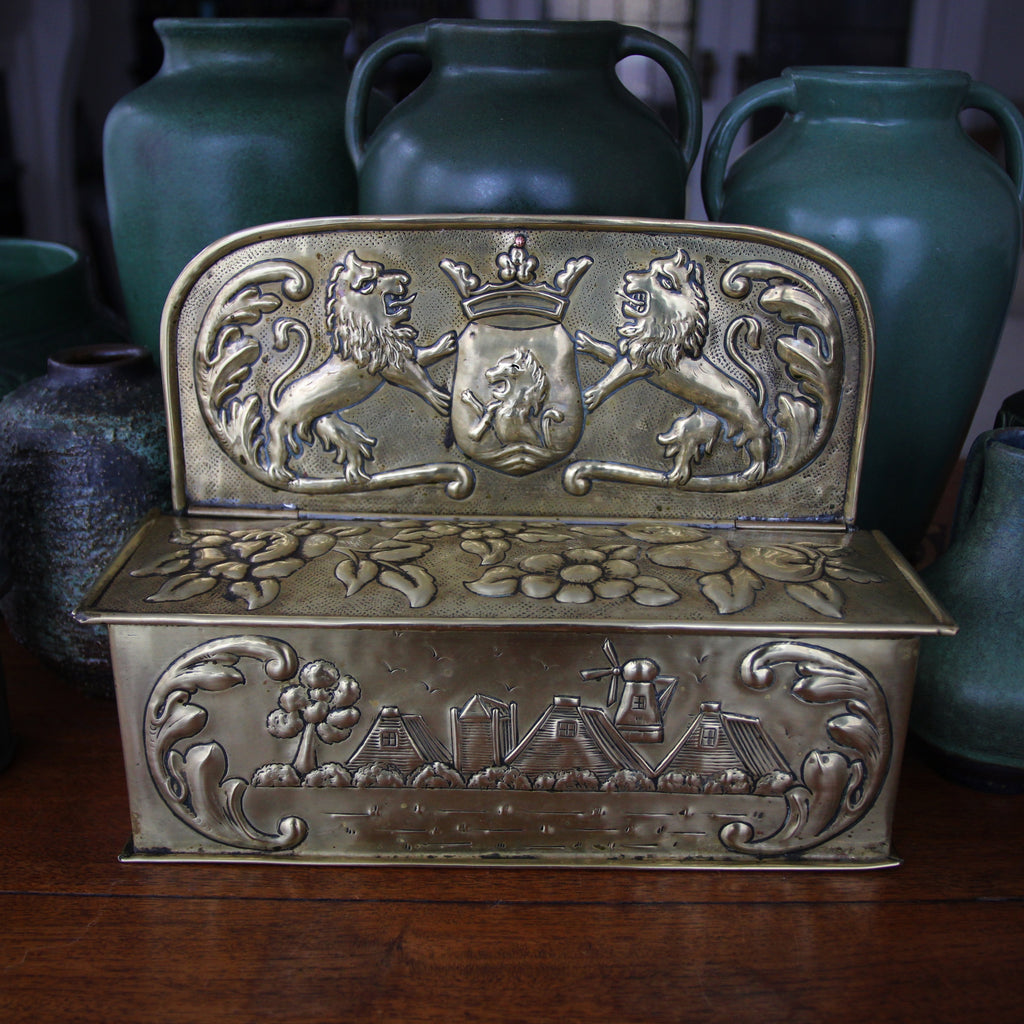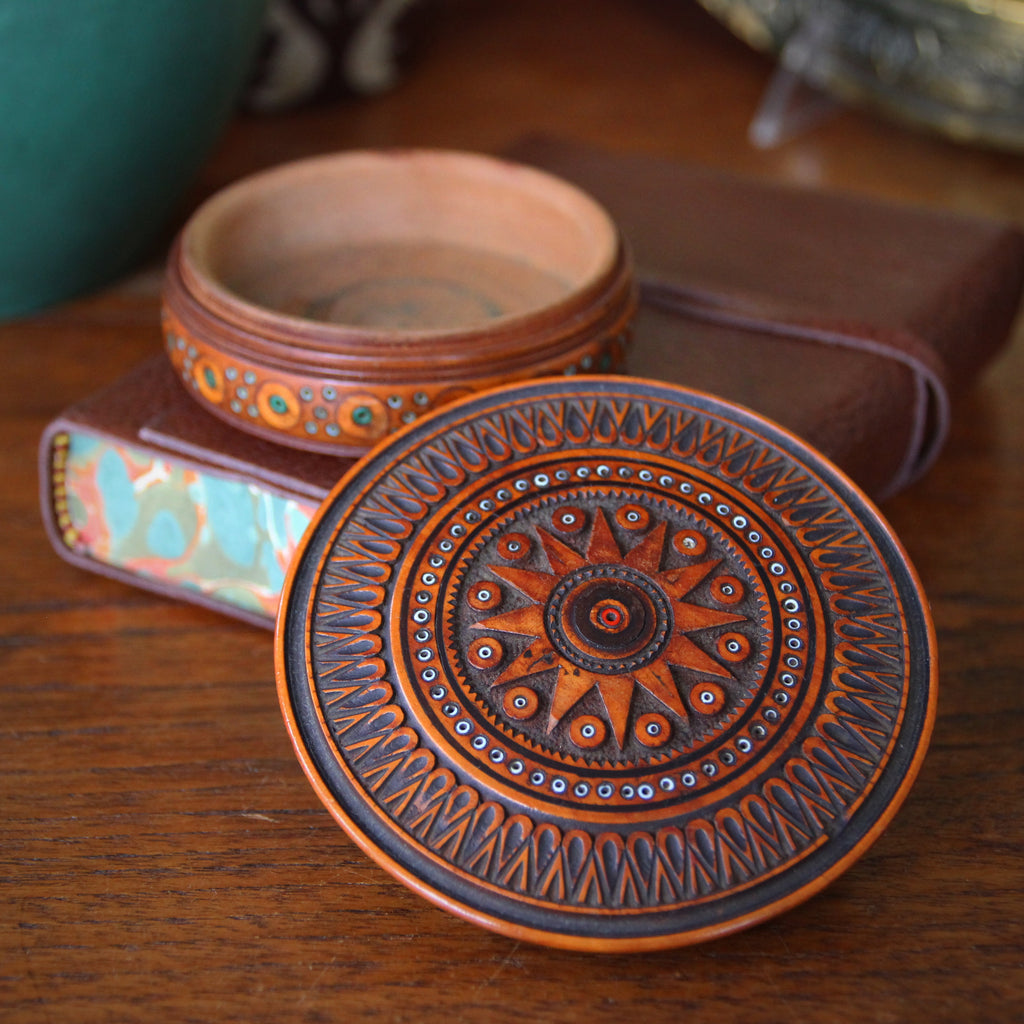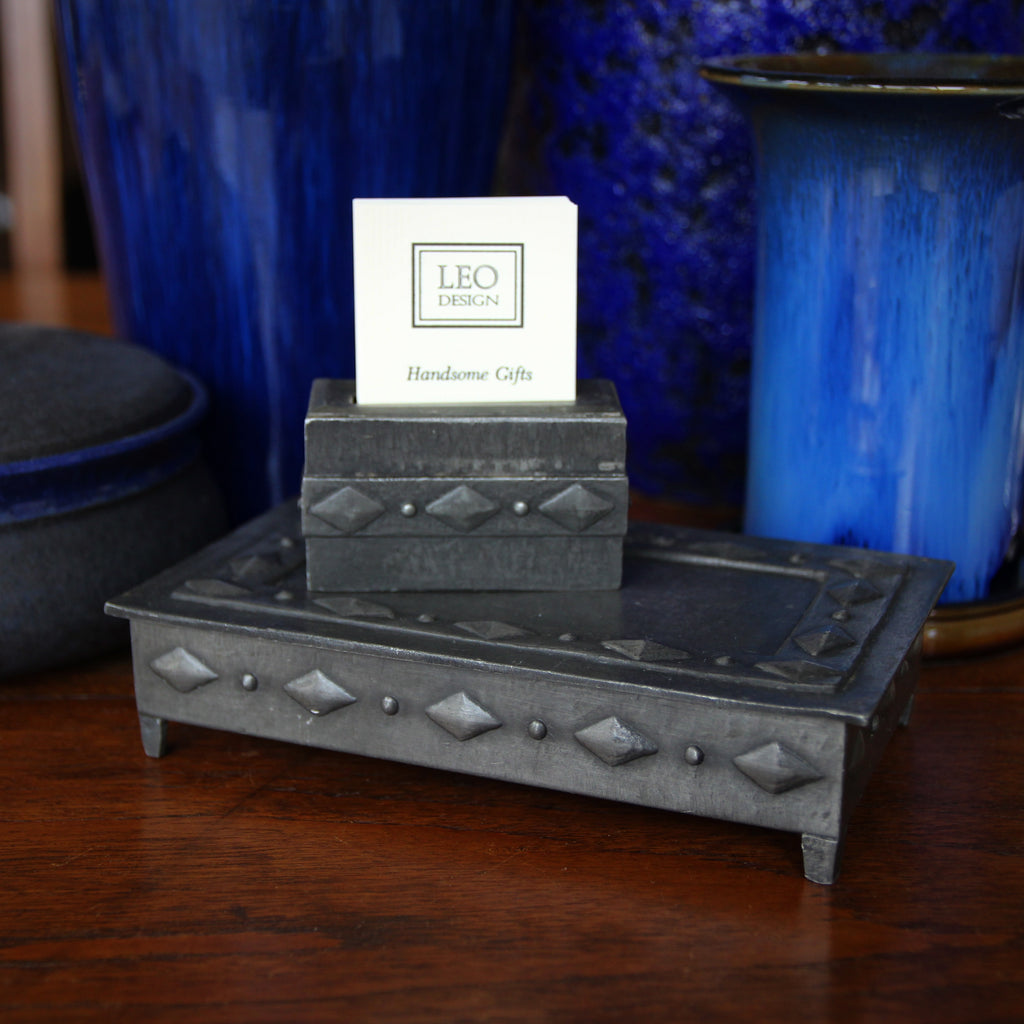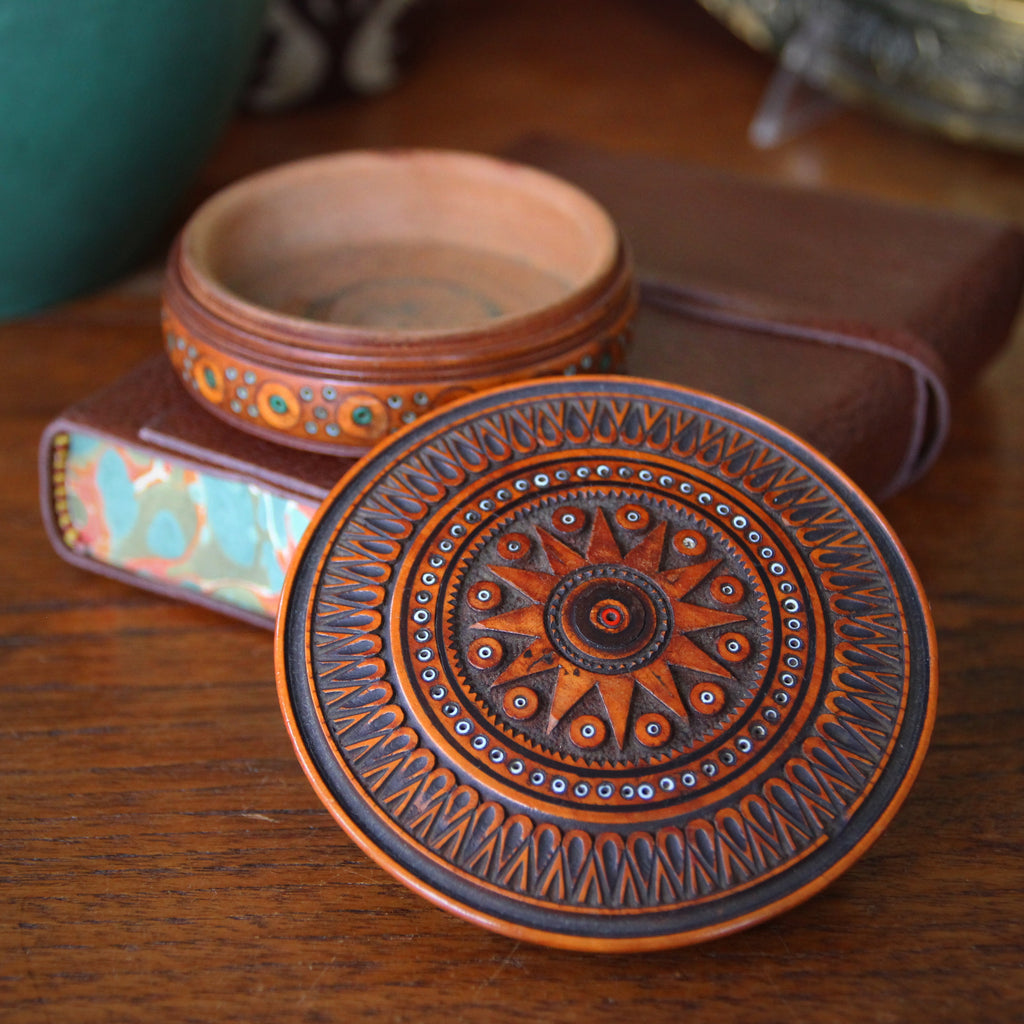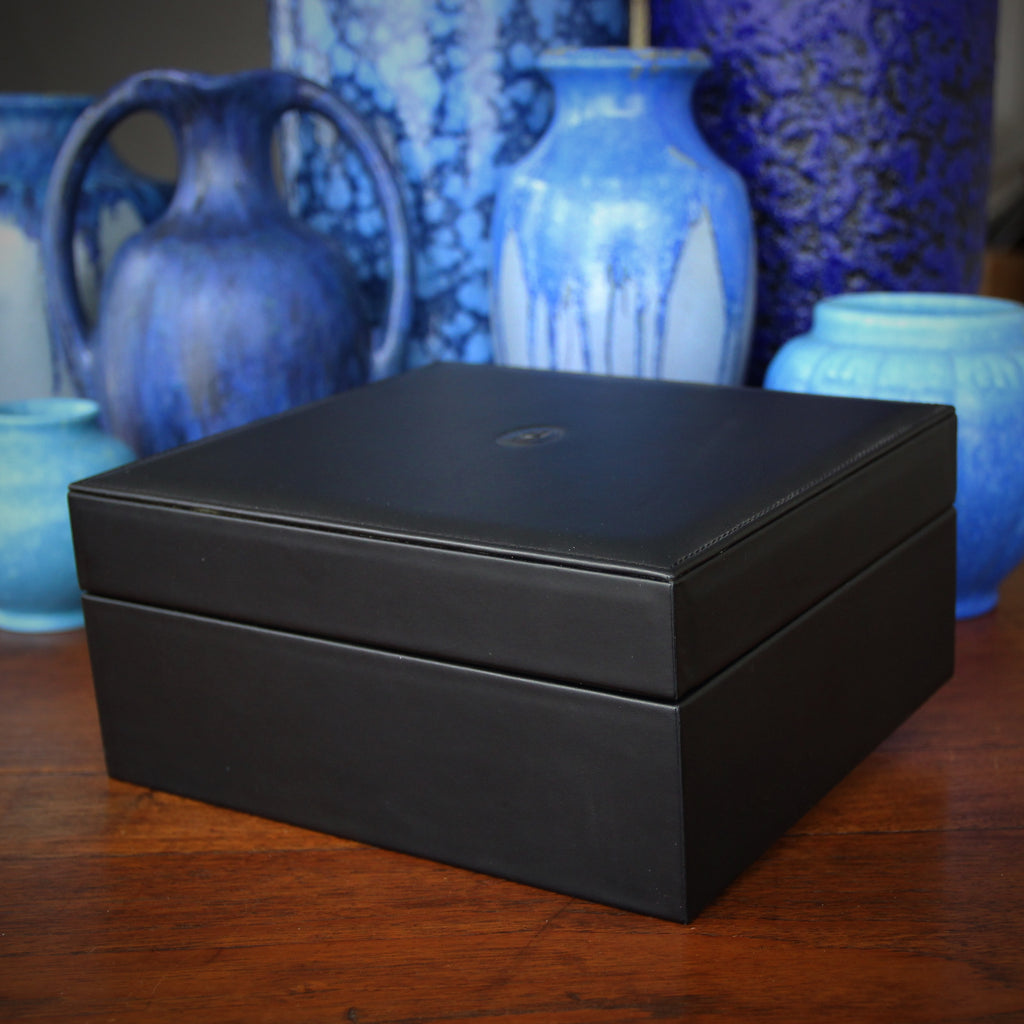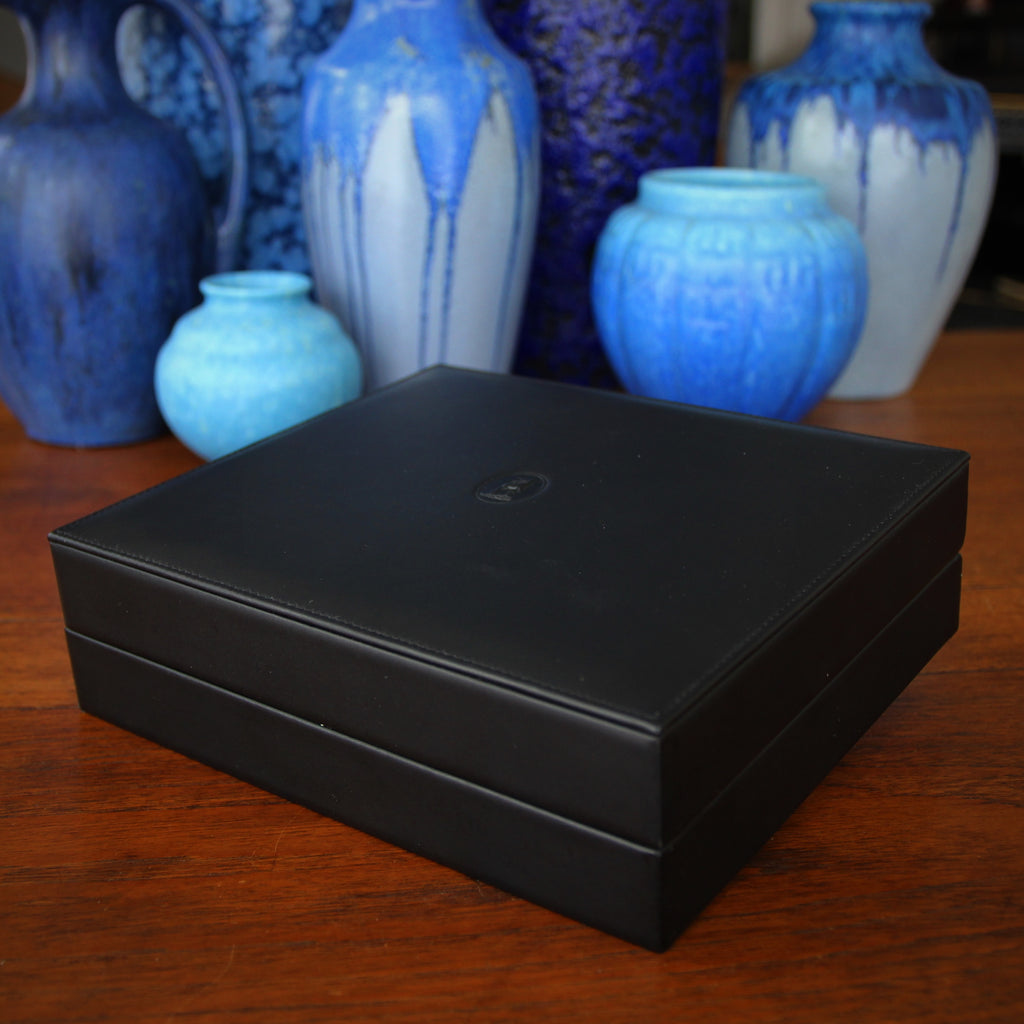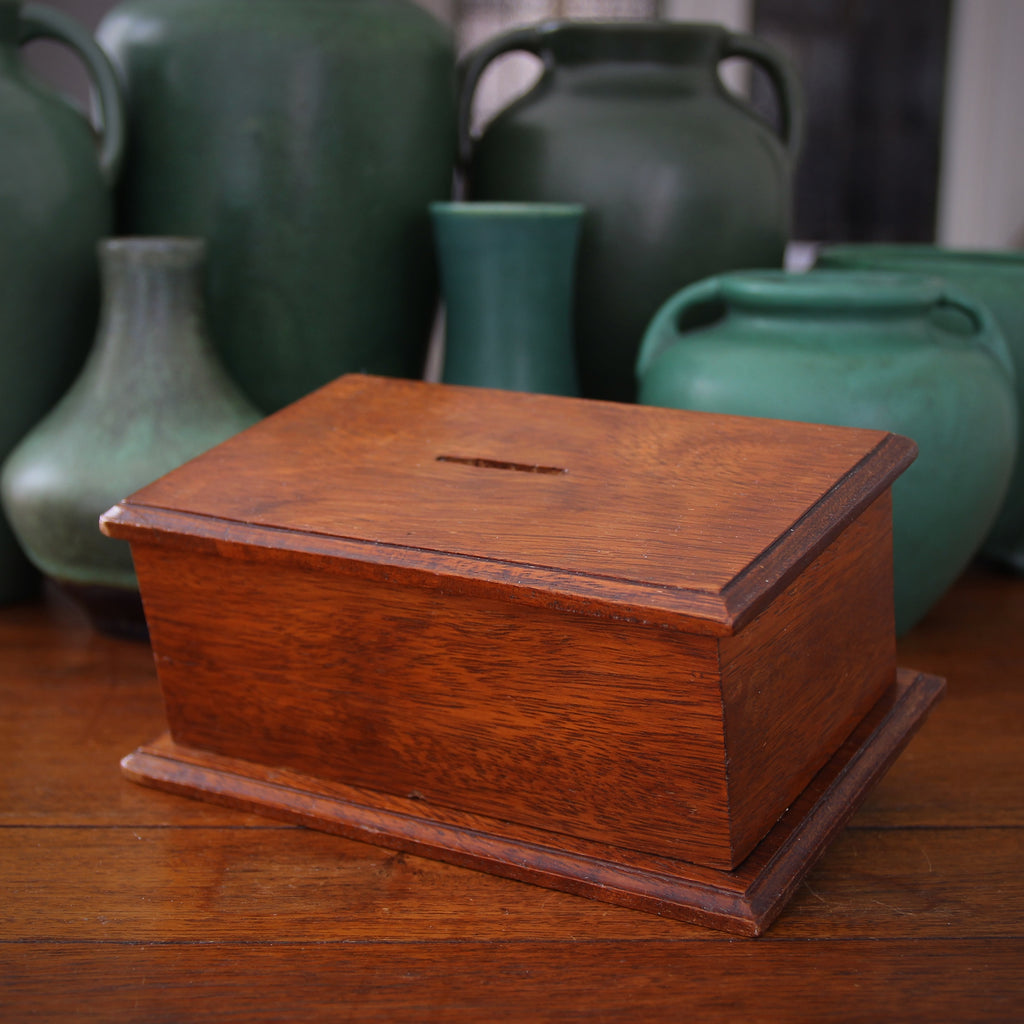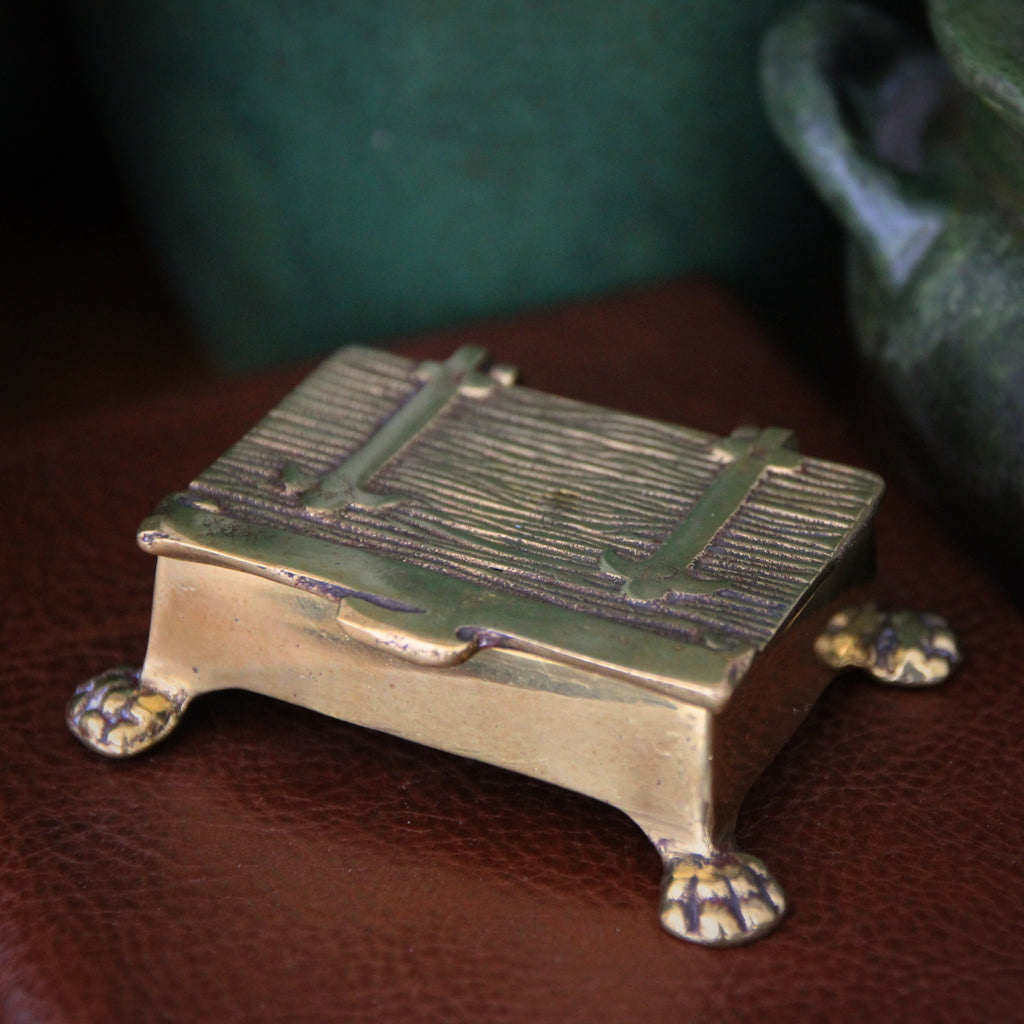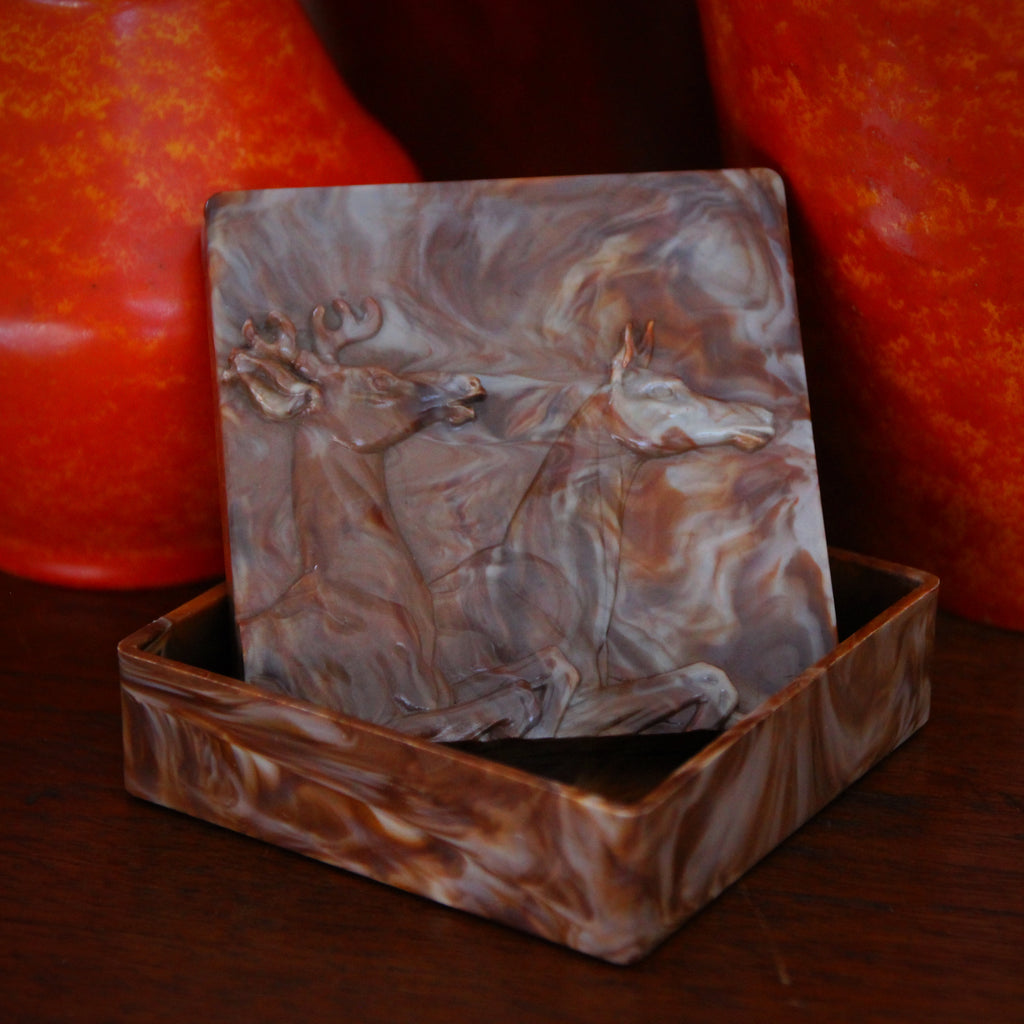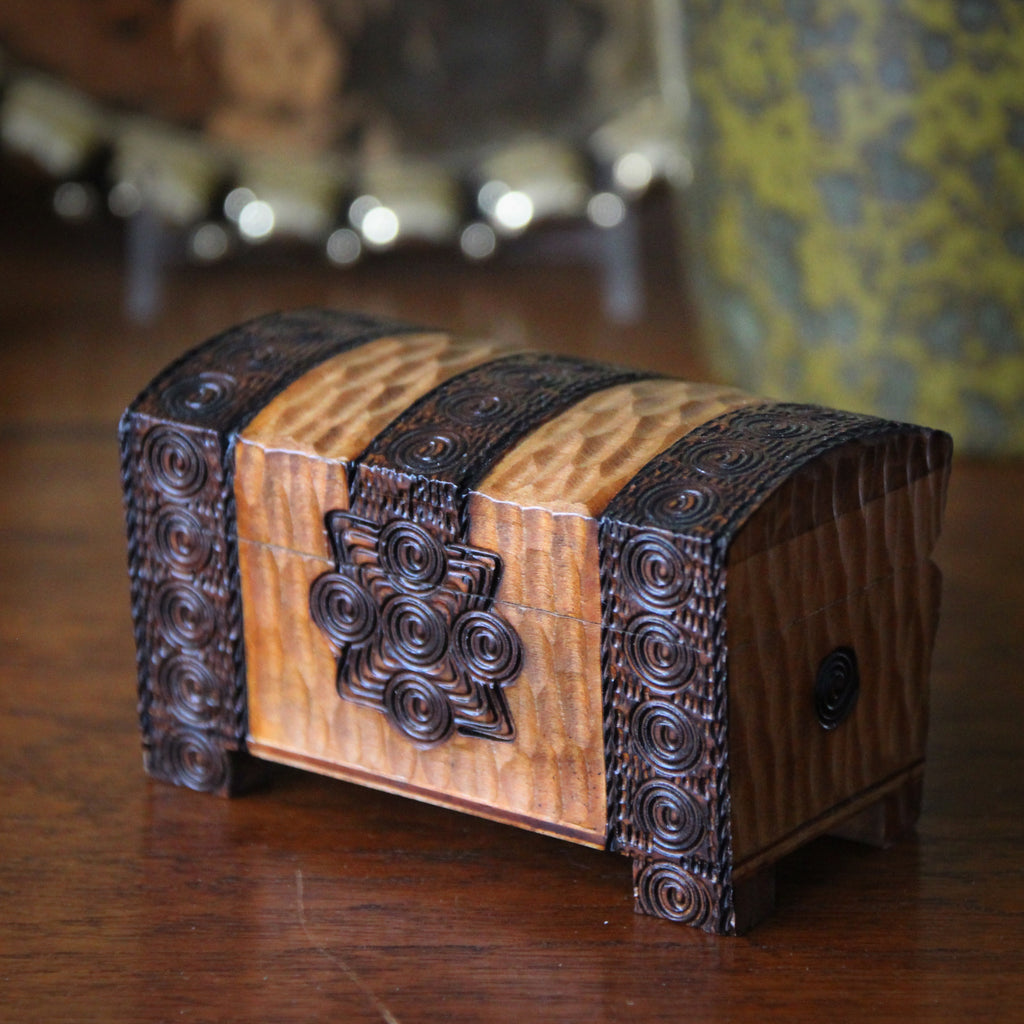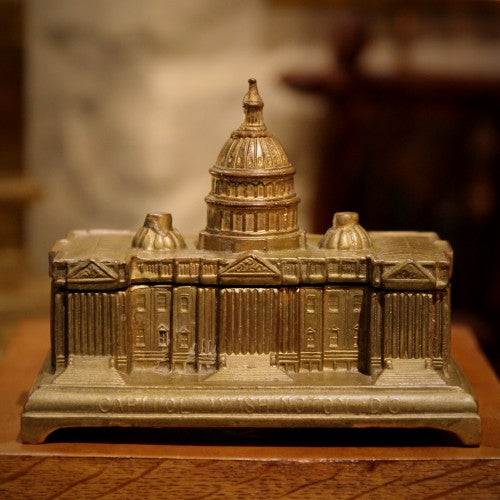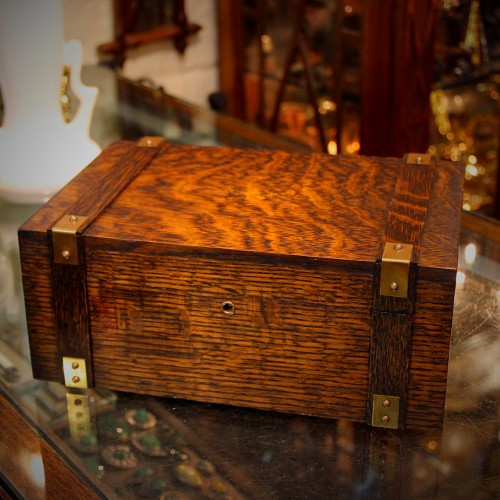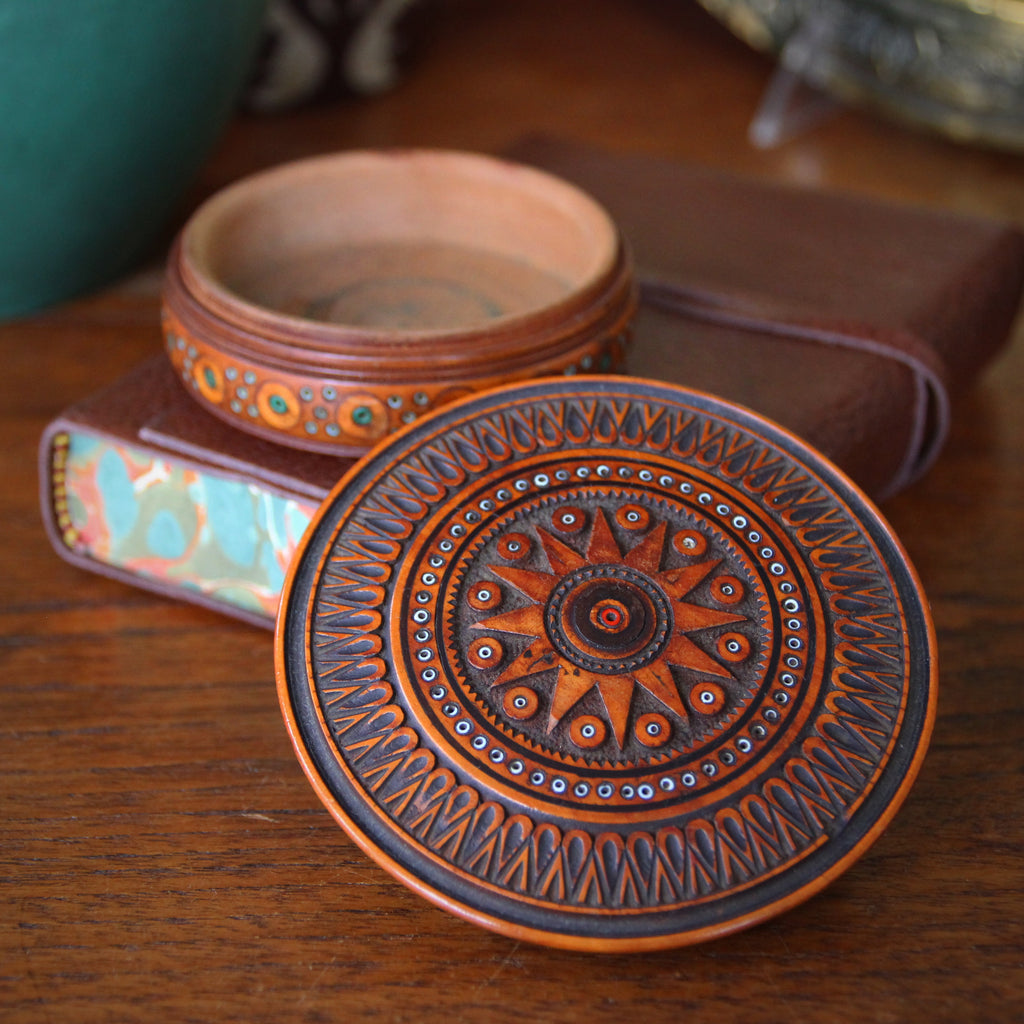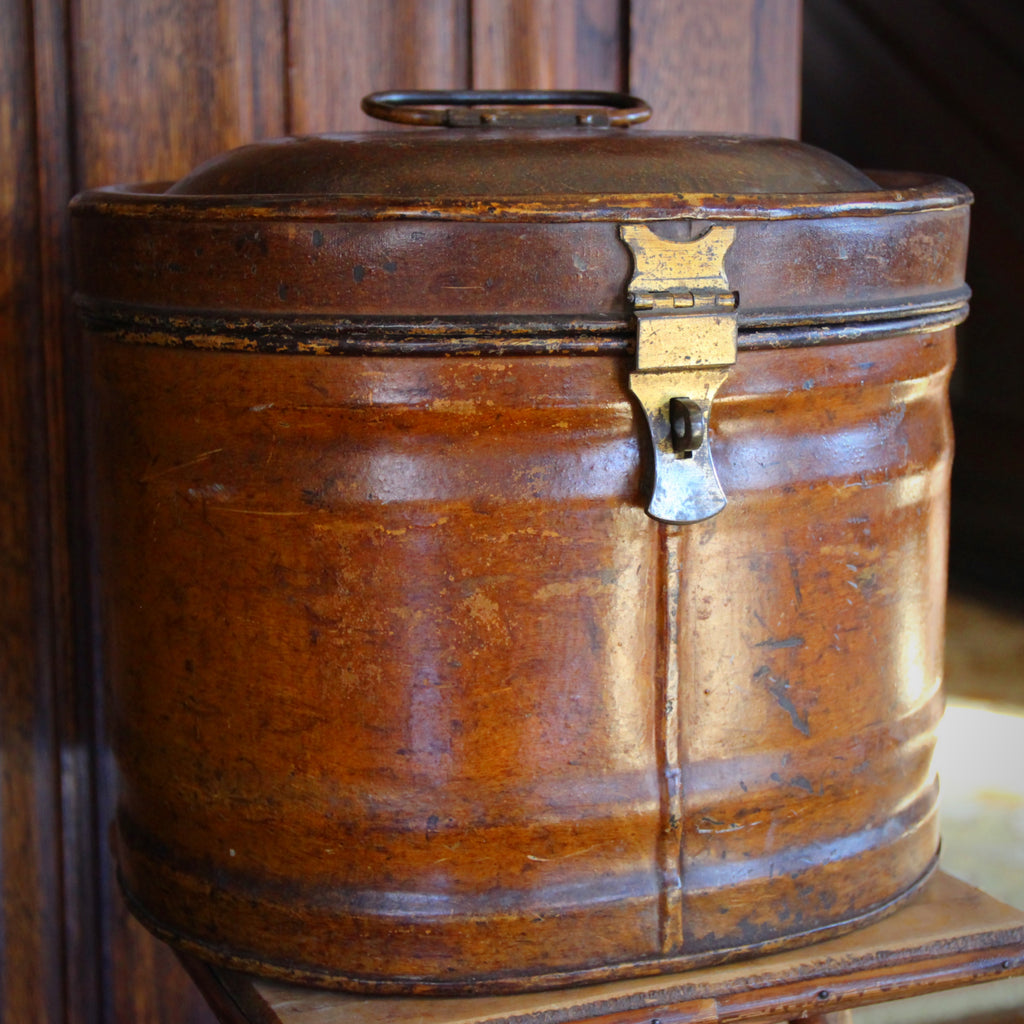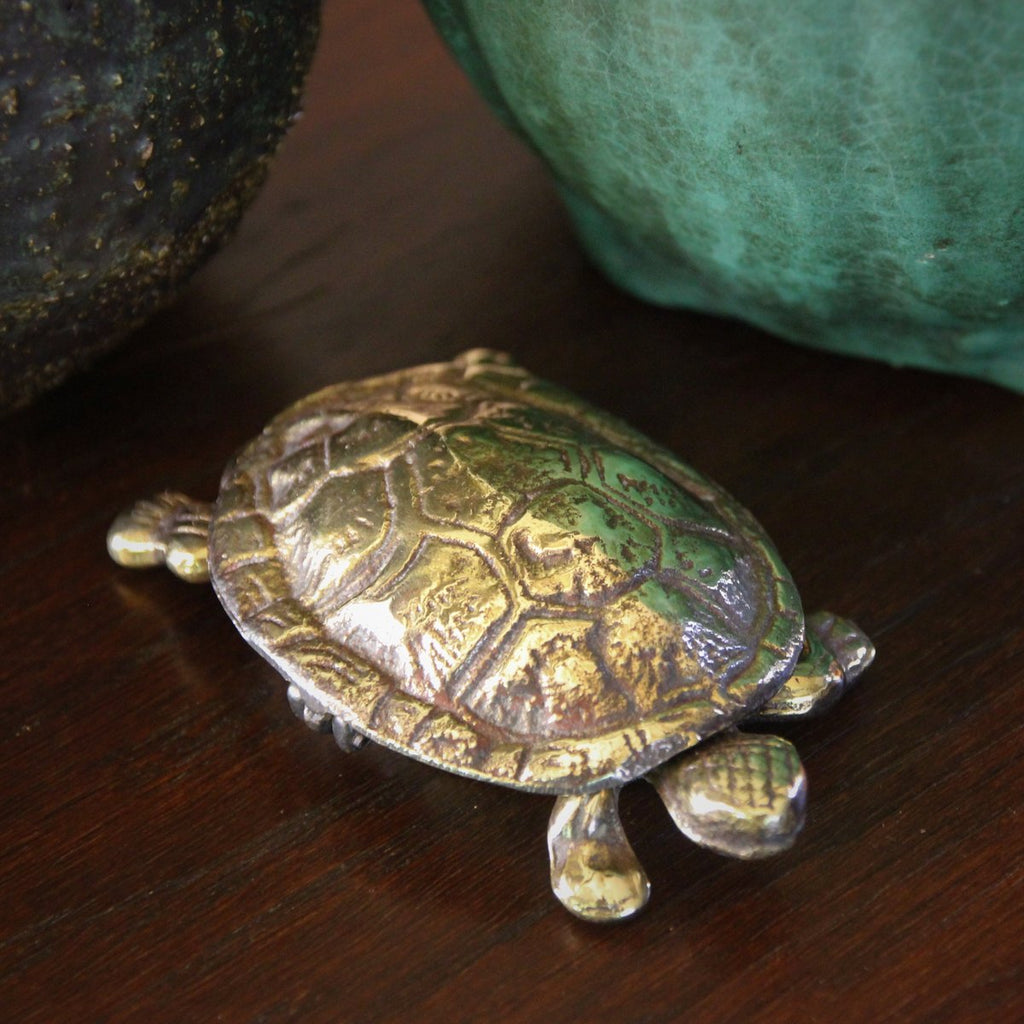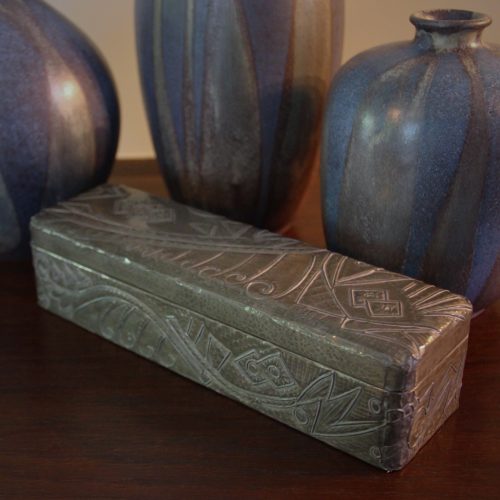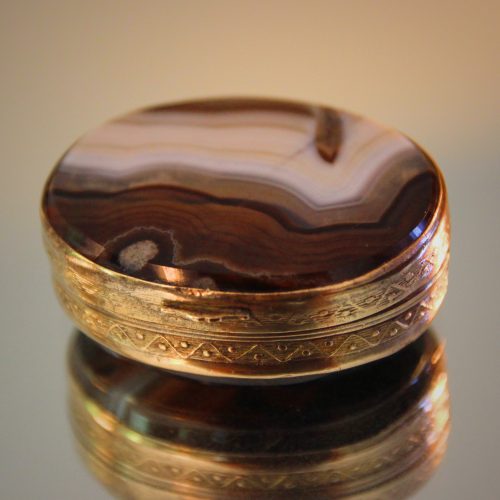JOURNAL — Boxes RSS
Boxing Day is one month away!
26 December, known as Boxing Day, has been celebrated (in various ways) for centuries. It is associated with the Tenth Century Bohemian "Good King Wenceslas" (in what's now part of Czechoslovakia) who braved terrible cold and snow to bring alms to a poor peasant on the Feast of Stephen (26 December). In England, the term "Boxing Day" has been found in print since 1833. Charles Dickens also used the term in The Pickwick Papers (1837).
Boxing Day, the day after Christmas, is when servants were given their day off to celebrate the holiday (since they were expected to serve their masters on Christmas Day).
Treen
"Treen" refers to those small, useful objects handcrafted out of wood—not including architecture, furniture, clocks or cabinetry. The word "Treen," itself, means "of the tree." In the old days, metal tools and objects tended to be expensive (and plastic had not, yet, been invented). Therefore, many useful tools and household implements were crafted of wood. With the advent of the Industrial Revolution—with its mass production and economies of scale—metal became affordable to a greater percentage of the population. Laboriously hand-carved wooden items became a little less common.
Technically speaking, treen items can be found all over the world. Most of the treen I encounter today—especially from England, where I often shop—was made in the late Nineteenth and early Twentieth Centuries.
Tea Time!
Tea has been consumed by the Chinese—at least medicinally—since the Shang Dynasty (1600 - 1046 BC). In 1516, Portuguese traders arrived in China where they "discovered" the exhilarating brew. Then, in the 1550's, Italian traveler Giovanni Battista Ramusio published his two volume Navagationi et Viaggi ("Navigations and Travels")—fascinating accounts of the travels of the era's greatest explorers. It was here that Europe first learned about the marvelous, caffeinated brew. In 1610, Dutch Traders from the Dutch East India Company began shipping tea to Europe. It was introduced to France in 1635 and England and Germany in 1650. In those early days, tea was a wildly expensive luxury. It was purchased only by wealthy aristocrats and kept safe—under lock and key—in...
Three Months 'Til Christmas!
Has the countdown begun? It's three months 'til Christmas! To help you get into the spirit, a vintage Sixties cookie tin—bright red with a screened Santa on the cover. It was made for Laub's holiday cookies. Laub's was founded by German immigrant, Jacob Laub, in Cleveland, Ohio, in 1889. In time, it became the largest independent baker in all of Ohio with a bakery storefront, bread delivery routes, and a brisk wholesale operation to restaurants, hospitals and grocery stores. The tin is still great for presenting your homemade cookies—or holding any number of Christmas-related items: ornaments, ribbon, or ornament hooks. It is also a nice place to store vintage Christmas cards and photos—the ones you'd like to save for future...
More Sapphire - I
We're celebrating September's birthstone—the sapphire—by sharing some of our favorite items which tip-the-hat to the regal blue stone.
Shown here, a bronze presentation "casket" decorated with sapphire glass cabochons. It was made in the Teens or Twenties, specifically to present a pearl necklace by La Tausca. Although La Tausca made synthetic pearls, they were still a luxury item—which required a luxurious presentation. La Tausca synthetic pearl necklaces would come in ambitiously crafted boxes like the one shown here.
This bronze casket is decorated with sapphire glass cabochons and filigree mounts.
A Penny Saved . . .
The US Mint has announced that it will discontinue the production of pennies in early 2026. It seems that the humble penny is yet another American institution which will not survive the nation's Semiquincentennial. The Philadelphia Mint "struck" the first official US Penny in 1793, the year after the Mint was established by Congress. It has been copper (or copper-plated) ever since. From 1859 to 1909, the Mint produced the "Indian Head" penny. Then, in 1909 (which was the Centenary of Abraham Lincoln's birth), the Mint produced the Lincoln Penny with the president's profile on the obverse (and wheat sheafs on the reverse). This coincided with a period of "Lincoln Mania" in America—and the public really embraced the new coin....
Cloisonné
Cloisonné is the French word for the artistic enameling technique in which a metal surface (usually copper or brass) is artfully subdivided with metal wires or strips to create small fields—each holding a different color of enamel. Glass powder is blended into a paste and applied to each field (called a "cloison") following the designer's color plan. Once the colored pastes are applied, the piece is fired in a kiln (to melt, that is "vitrify," the glass powder into enamel). Once the piece has cooled, it is polished to create a smooth, lustrous surface. In some cases, whole gemstones were cut-to-fit and inserted into the fields. But the use of glass enameling was a quicker, less costly way of achieving...
Chinese Harmony
Like any culture, the Chinese have certain important and meaningful symbols which inform their literature, art and aesthetics. The dragon is amongst the most significant. He (for the dragon is seen as a masculine being) is closely associated with the Emperor—a provider of strength, prosperity, and success. To the Chinese, the dragon is a beneficent symbol of good luck and wealth (unlike in the West where the dragon is associated with evil and destruction).
The phoenix is another auspicious Chinese symbol. She (a feminine being) brings peace, happiness and prosperity. The Chinese phoenix is different from the Western mythological creature; she cannot resurrect like the western phoenix (who rises from the ashes after catastrophe).
Countdown to LEO - 2
Lions have always been a popular theme in art, literature and the decorative arts—throughout history and in all places. I suppose it's the lions' nobility as well as their bravery, skill and beauty.
In the decorative arts, when a whole lion is not required, sometimes his paws alone might make an appearance. Carved wooden lion's paws are popular in furniture. Cast iron paws might be used in "street furniture" (light fixtures, gates or fences). And sculpted bronze paws are found on everything from lamp bases to andirons.
Shown here, a little Edwardian English cast brass stamp box. Its lid is fashioned like a strap-hinged trunk and the box stands upon four lion's paw feet.
Pietre Dure
Artworks made of carefully cut, polished and tightly-assembled stones is ancient, indeed. Ambitious works—geometric patterns on floors or intricate images on walls—have been found from Ancient Rome. But the Italian Renaissance—specifically in Sixteenth Century Florence—is where Pietre Dure reached its artistic high point. Popes, dukes and other aristocrats supported the art form with schools, guilds and expensive commissions. Church floors, altars, walls and tombs were covered with varieties of pietre dure works: geometric patterns, still life renderings, portraits and ambitious scenes. Some of the smaller Florentine works were exported around the world. When some reached India, Mughal rulers had local artists adapt the art form into their aesthetic—which they called Parchinkari. The Taj Mahal is decorated with astounding parchinkari works.
Biscuit Tins
In 1822, Joseph Huntley opened a biscuit and confectionery shop in Reading, Berkshire, an important stop along the stagecoach route between London and the West of England. Huntley's shop was across from the town's major inn and his customers were the travelers who lodged there for the night. In order to protect his biscuits from being crushed, he packed them in metal tins. His son, also named Joseph, opened a factory for producing the tins. Before long, the idea was hatched: why not make the tins beautiful and collectible—making them a significant part of the consumer experience?
Reliquary
We all have precious objects which need to be presented and protected—an item which calls for a reliquary, of sorts. This bevelled glass footed casket is a handsome solution to that task. Spelter ("white metal") framing joins the bevelled glass panels. The top lid hinges open. Use it to display a pocket watch, an awards medal, or some other cherished possession.
Old Meets New
This Italian leather canister is an intriguing example of Old World craftsmanship meeting Modern World technology (about a century ago). Florentine gold-embossed leather is "wrapped" around a Bakelite canister—and fitted with a screw-down lid. Bakelite was invented in 1907. It was a leap-forward in the development of synthetic materials—plastics, actually. This remarkable new invention could be molded into complex shapes. It was suited to mass-production. And Bakelite was heat resistant—making it highly adaptable to use in the exciting, new Twentieth Century. Light bulb sockets, lamps, radios and (later) television parts were made of Bakelite. In the right color (and polished) it was attractive, durable and easy to produce. Numerous desk and household items were crafted in Bakelite—as was jewelry...
Light My Fire
In the days before electric ignition, matches were a common and necessary household implement—in the kitchen, in the dining room and at the fireplace. "Strike-anywhere matches" needed a safe and attractive container for safekeeping (sometimes called a "match safe"). As strike anywhere matches were combustible (and could, theoretically, be ignited if rubbed together), they required fireproof containment (in a vessel as air-tight as possible). And, because such a match holder was on prominent display on the mantelpiece, it should be attractive, too. This heavy cast iron match holder was made in the third quarter of the Nineteenth Century. It still retains its original black and golden paint. And the gold paint is richly-aged—never to be confused with the glitzy "shiny...
Finally February!
Boy! Didn't January 2025 feel six months long! But we've made it to February, and she brings with her a birthstone, the regal Amethyst.
"In the Olde Days," Amethysts were rare, indeed. They were considered one of the "Cardinal Gemstones"—alongside diamonds, rubies, emeralds and sapphires. Further elevating their status was their association with the monarchy—as the precious (and costly) color purple has long been linked to the royalty. Alas, new and large amethyst mines were discovered in Brazil in the Nineteenth Century, causing the global price of amethysts to fall. Though less-precious today than they once were, they remain no less beautiful—or regal. And they are the birthstone to those born in February.
Boxing Day
It's Boxing Day in England and her Commonwealth Countries—the national ("bank") holiday on the first weekday following Christmas. Back "in the old days," household servants were expected to work on Christmas Day, serving their employers at their holiday celebrations. Instead, working servants would receive the next day off, 26 December, as their holiday. The term "Boxing Day" refers to the custom of these servants (and other tradesmen) coming-by the big house to collect their "boxes"—their gifts from their employers. Such boxes might include a gift, money, or other items (like food or alcohol) which the servant could use at his or her own family celebration. Boxing Day, which is believed to have been celebrated first in the 1600's, may have grown-out-of...
A Blast of Christmas Cheer
Laub's Bakery was founded in Cleveland, Ohio, in 1889 by German immigrant Jacob Laub. In time, it became the largest independent bakery in all of Ohio (with 465 employees). They ran a storefront bakery, home delivery routes, and a brisk wholesale business to other stores, restaurants and institutions.
The Sixties biscuit tin, shown above, would be used to present their Holiday cookies—and provide a blast of Christmas cheer. Like many Sixties Christmas decorations, it bears a bold, classic graphic—a reminder of a simpler. more naive Christmastime.
Today, such a biscuit tin can be used to present your own homemade Christmas treats. Or, use it to safekeep delicate ornaments, supplies of ribbon, or extra special Christmas greeting cards and photos.
Welcome, December
Welcome, December, and your birthstone, the Turquoise. The sublime blue-green stone has been mined and used decoratively for thousands of years although the modern(ish) name “Turquoise” dates-back only to the 1600’s—from the French word “Turques” (after the “Turks” who first brought the stone to Europe from Persia). Some of the oldest turquoise mining occurred in Persia where the domes of palaces were clad in the beautiful mineral symbolizing “Heaven on Earth.” Turquoise was also found in the Southwest Sinai Peninsula (c. 3,000 BC) where the Egyptians mined and used it—quite famously on the golden mask of King Tutankhamen. In the New World, turquoise has been mined (and used) by the Aztecs in Mexico and Indigenous Americans in the Southwest. Turquoise was considered...
Nothing Faster
It was such a different time—back in the 1930's—when the postal system represented the cutting edge of quick and efficient document transmission. There were no fax machines. No Federal Express. And the internet was still decades (and decades) from introduction. "The mails" was the fastest system—and postage stamps were the coin of the realm. Everyone (at least anyone who sent mail) kept a ready supply of postage stamps at hand—in various denominations, in order to cover the weight of the envelope or parcel one was sending. Stamps might be kept in a special container, like the handsome English Art Deco stamp box shown above. When this stamp box was first in-use, in the Thirties, a US postage stamp cost 3¢. It remained...
The Anglo-Indian Legacy
Britain received its first land grant in India in 1640. From that point, and through the Eighteenth Century, England became increasingly powerful in the subcontinent, mostly through trade transacted (and warfare waged) by the British East India Company. In 1858, England took direct control of the Indian government, ruling the country (called the "British Raj") until they were kicked-out in 1947. Until then, Victorians referred to India as "The Jewel in the Crown." The legacy of British colonialism in India is (and will be long) analyzed and debated. And verdicts may switch back-and-forth as the decades unfold. But, when we consider art and aesthetics, the effect of Anglo-Indian artistic cross-pollination has left a wake of beautiful works: art, architecture, and decorative...
That's Snuff
Snuff is the fine powder of pulverized tobacco leaves. The leaves are "cured," that is, aged and fermented—possibly for weeks or months. Sometimes flavors or fragrances are added to the tobacco. Europeans first encountered snuff in the Americas and took it back to England and Europe where it quickly became very popular. Tobacco was first grown in the Americas and snuff is believed to have been used by indigenous peoples well before the year 1000 BC. By the time the White man arrived in the New World, tobacco (and snuff) use had spread through much of South, Central and North America—as well as to the Caribbean. It is believed that snuff use had traveled to Africa even before the Atlantic Slave Trade.
Arts & Crafts Gothic
Arts & Crafts period designers—wherever in the world they may have worked—often looked-back to their country's (or culture's) past for design inspiration: history, literature, folklore, ancient craft. Their efforts to "revive" familiar aesthetic elements or symbols of the past were part of the movement's attempt to channel "the good old days"—to recreate those better times when life was quieter, simpler, purer.
The Gothic Aesthetic was frequently used as a "historic touch-back" in American and European Arts & Crafts design. Its rustic, hand-wrought and wonderfully-antiquated sensibility helped lend a feeling of warm archaism to the newly-rendered object. And most Turn-of-the-Century Westerners were somewhat familiar with the Gothic Style (or the Gothic Revival from the Nineteenth Century).
Lacquerware
Lacquering is a surface treatment of wood (or sometimes metal) which originated in Ancient China. The sap of certain plants was heated and applied in layers; as it cooled, it built-up into a durable, waterproof and very beautiful finish. The original process, sometimes referred to as "True Lacquering," used the sap of the Toxicodendron Vernicifluum, called the "Lacquer Tree," a plant which grows in Asia and the Indian Subcontinent. Over the centuries, artisans have developed alternative recipes and processes for achieving the desired lacquered finish. Lacquering can be polished to a high gloss, left flat, or calibrated somewhere in-between. Sometimes the lacquerware is further embellished with painting, inlaying of mother-of-pearl, or the application of other costly substances.
The Boss
Art Nouveau designers—from all parts of the world—would often "reach-back" in their local history to find aesthetic themes for their contemporary, Turn-of-the-Century works. Artists would mine literary, cultural, historic or ancient aesthetic motifs, reviving them for an audience which probably would recognize them. For example, English Arts & Crafts artisans might lift characters, scenes or verbiage from Medieval literature (like The Knights of the Round Table). In America, Arts & Crafts artists might utilize ancient Native American symbology. In Germany, a Gothic sensibility permeated much of their Jugendstil design. The hammered steel cigar casket, shown above, has the rustic sensibility of hand-wrought Gothic design. Nine round, shield-form "bosses" are hammered and affixed with metal riveting. They provide the fortified appearance...
Welcome, September
From our earliest days, we’ve been mesmerized by the sapphire—birthstone for the month of September. It is amongst the hardest of gemstones and also amongst the most-expensive. And, some might argue, sapphires are the most beautiful.
Sapphires belong to the corundum family which includes rubies. In fact, sapphires and rubies are the same stone; sapphires contain iron and titanium impurities while rubies contain chromium impurities. Both types of corundum often are found in the same areas, though one of the varieties will predominate. Sapphires are found and mined in Africa, Russia, Australia, and parts of Asia (most notably, India). In the United States, sapphires are found in Montana.
Then Comes Boxing Day . . .
In England and her Commonwealth Countries, the day after Christmas is called Boxing Day. This was the traditional holiday for servants—when they would receive their "boxes" from their employers and could celebrate the day off with their families and friends. After all, servants were expected to serve their employers on Christmas Day. It wasn't a holiday for them; if fact, Christmas entertaining probably made the day extra difficult. Boxing Day will be here four months from today.
In honor of Boxing Day, we'd like to share this attractive—though well-worn—candy tin from the Twenties.
Little Treasures
Here's a little place to safekeep your little treasures. Modeled after a traditional Nineteenth Century British money box, this little steel trunk is painted with the classic English black and gold. It's a great place to stash a couple of cufflinks, save a collection of baby teeth or present that special piece of jewelry.
Charles Rennie Mackintosh
We have been taught, "A prophet is never accepted in his home town." It seems this was the case for Charles Rennie Mackintosh, the foremost designer of the Scottish Arts & Crafts movement. His influence, during his lifetime, was more eagerly embraced outside of Scotland than it was at home. Many of his Scottish architectural designs were never built. He eventually abandoned architecture and focussed his later years on watercolor painting. Naturally, once he had died in 1928, his work became increasingly popular in Glasgow and his legacy has now been firm established. Today, one cannot walk five steps in Glasgow without seeing some kind of Mackintosh-inspired graphic or souvenir.
Keeping the Home Fires Burning
150 years ago, before the advent of domestic electricity (1880-1900) or widespread delivery of natural gas to homes (1890-1910), coal, wood and peat were the most common household fuels. Lighting was provided by candles and oil lamps. Candles were a domestic necessity—and a convenient storage box would be found in the kitchen, if not several rooms of a large home. Candles might be used to keep a convenient flame at-hand. They (or a thin "string-like" candle called a "spill") might also be used to transfer a live fire from one place to another.
Ebony
Ebonywood has been used decoratively for millennia. It has a very fine texture and can be highly polished. Carved ebony objects have been found in Ancient Egyptian tombs. The wood became popular in Europe during the late 1500's, when Dutch traders began importing the material which grows in India, Sri Lanka, West Africa, Indonesia, Australia and Mauritius. Recall the heavy, black frames which were popular during the Golden Age of Dutch painting; perhaps some were ebonywood (or other woods ebonized to resemble it). Ebony became popular for European furniture making in the 1600's. In France, such furniture makers were called ébénistes—a word still used for "furniture maker" to this day.
Edelweiss
In 1856, Austrian Emperor Franz Joseph I was enjoying a mountain trek with his new bride, the Empress Elisabeth, a Munich-born beauty known as "Sisi." He picked a few edelweiss blossoms from amongst the craggy rocks and presented them to his beloved with the words, "First in my life that I picked myself." From that point onwards, the popularity of the flower was assured—as a symbol of immaculate and everlasting devotion (and, more broadly, emblematic of the rugged purity of the Alps and her people). Sisi wore nine edelweiss blossoms in her hair while sitting for her famous portrait by Winterhalter. For his part, the Emperor had edelweiss blossoms embroidered upon the collars of his Imperial-Royal Mountain Troops. The flower...
Boxing Day
In England, "back in the old days" (when most middle-class families had household servants), "the help" was expected to work on Christmas Day, to serve their employers who were celebrating the holiday. The day after Christmas was the day-off for the servants. It was called "Boxing Day," as this was the day on which servants would receive their Christmas gifts—their "boxes." Even today, despite the fact that very few British homes can afford live-in servants, Boxing Day is still a "bank holiday."
The Japanese Modernist lacquerware box, shown above, is dressed in a handsome red "tortoiseshell" lacquer. The interior is finished in black lacquer. This Mid-Century box is perfect for serving precious foods: elegant sushi, sophisticated cookies, exquisite pâtisserie.
Six Months 'Til Summer!
Summer is on its way—six months from today! Of course, we need to get through Winter, first (which begins tomorrow). So, while these days are dark and the temperatures are cold, let's think back fondly on warmer, brighter days, perhaps when we were relaxing at the seashore. The seashell-encrusted box, shown above, was made around the Turn-of-the-Twentieth-Century. But this type of craftwork has been popular since the Eighteenth Century—perhaps first inspired by Baroque art and design (which often used water, sea life and seashells in its exuberant, exotic aesthetic). The Eighteenth Century also witnessed a growth of Natural History specimen collections, at least amongst the educated (and wealthy) elite. The use of a collection of seashells, such as on this encrusted...
'Tis the Season - XII
Let's end our array of Holiday miscellany with this handsome Christmas tin from the Twenties. A rather-serious portrait of Father Christmas is surrounded by a wreath-like frame of poinsettia blossoms. This covered box, modest in size, is made of machined steel sheets, litho-printed with this holiday illustration. It was made in Baltimore, Maryland, at the Tin Decorating Company—better know as Tindeco. Today, the box would make a wonderful place to keep holiday sweets. Or, perhaps, small ornaments, strings of glass beads or ornament hooks. It would also make a sublime presentation box for a special gift, packed within. Tindeco was founded in Baltimore in 1914. Within a few years, they were the largest tin decorating plant in the world—with a...
'Tis the Season - XI
Back in the day—when people used to give tobacco to their friends for Christmas—the John Weisert Tobacco Company (of Saint Louis, MO) made these jolly Holiday Gift Packs. Six boxes of tobacco (now empty) are enclosed in the handsome Christmas packaging—replete with Santa, greenery and ornaments. The top of the box has a place for the customary "To and From."
'Tis the Season - I
This Laub's biscuit tin, made in the Fifties or Sixties, really screams Christmas. Perfect for storing your home-baked Holiday cookies or an excellent place to keep your favorite Christmas ornaments during the off season. Laub's was founded in Cleveland by German immigrant Jacob Laub in 1889. In time, it became the largest independent baker in all of Ohio with 465 employees.. They ran a bakery storefront, home delivery routes, and a brisk wholesale business (to other stores, restaurants and institutions). A box like this would have been used to present their Christmas cookies. Today, it provides a blast of vintage Holiday cheer—and is useful at the same time.
Fashion Plates
In the late Nineteenth and early Twentieth Centuries, Pochoir printmaking was a popular technique, especially in Paris. The French word "pochoir" (pronounced poe-SCHWA) literally translates to "stencil." In this technique, a stencil is made to create a limited number of fine-lined prints—which are then hand-colored. Sometimes a collection of the limited edition plates, related in theme, were bound in a portfolio (for example, pochoir prints of the Ballets Russes). Although the pochoir stencil-print method allowed prints to be duplicated quickly, the high level of handcraft allowed each one to be considered an original work. And, as the ink was daubed over the paper stencil, it would create a varied, hand-drawn look to the line work. Of course, the extensive hand-coloring...
Money, Money, Money
Every country has its typical, traditional National money box—a place where money-changers, shop keepers and street vendors can keep their cash (safe and organized) while doing business. In England, cash boxes seem frequently to be black-painted steel with gold edging, sometimes with additional decorative painting on the top. In other countries I've seen other commonly-used styles: wooden boxes or trays (with or without denomination dividers), plastic "tackle" boxes with a top handle, or even old coffee cans. In America, at least within my lifetime, I've always observed merchants using the same very utilitarian, hinged rectangular metal boxes—usually finished with soft grey or putty colored baked enamel. A removable black plastic coin tray usually sits inside.
I'm Not Going Native!
Though I live in the City of Pittsburgh, I am part of a multi-dealer group shop, The Antique Center of Strabane, in Washington County—the suburban (and rural) region south of The Steel City. Thus I am a daily witness to the aesthetic "taste preferences" of this non-urban population. What's most popular in this area is a rustic country look, sometimes called "primitives." This means crocks, old kitchen accoutrements, and rustic, painted wooden furniture.
One such example of primitive goods is the weathered knife box, shown above. It displays the "life wear" which primitive collectors want, plus substantial traces of the original paint, in this case white.
Six Months 'til Christmas!
Six months to go! Is it ever too early to start preparing? No pressure; we stand ready to help you, should you choose to make the jump. Shown above, a cheery Christmas biscuit tin—with a jolly silk screened Santa waving from the top. Use it for storing ornaments, Christmas stuff, precious holiday cards, sewing supplies or...cookies! In 1878, 17 year old German immigrant, Jacob Laub, moved to Cleveland, Ohio and became a baker's apprentice. Before long, he was baking in his home, eventually expanding to commercial premises in 1892. The company was incorporated in 1903 and enjoyed regular, continuous growth, eventually becoming the largest independent wholesale bakery in Ohio. In 1974, after being acquired by a larger company, the bakery...
April Showers - Part Seven
In honor of the Spring, we have been sharing some of our florally-inspired items over the past few days. Enjoy the Spring season—and the flowers which delightfully distinguish the Spring. The Qing Dynasty ruled China for over 275 years, from 1636 to 1912. Manchurian (Northeastern) factions took control of the country, made Peking (Beijing) its capital, and established the basic geographic boundaries which define Modern China today. Although Europeans had established contact (and some trade) with China before the Qing Dynasty, it was during the Qing Dynasty that trade (and the complications of international friction) really grew. Chinese silk, tea, spices and ceramics were highly coveted by Europeans during the Qing Period. It seems the Chinese, on the other hand,...
More Middle Eastern Marquetry
Here's another Middle Eastern Mid-Century marquetry jewel box. Various, differently colored woods are arranged—with Mother-of-Pearl—to create a handsome place to keep your jewelry, watches, keys, or other small treasures. It would also be a nice place to inter the ashes of a beloved pet.
Middle Eastern Marquetry
Artists have been crafting beautiful inlays for millennia. Mosaics, enameling and inlaid woodworks can be found amongst the artwork discovered from the earliest of times. Marquetry is not technically an "inlay." It is an arrangement of thin wood pieces (or shell, bone, stone, metal, straw or other materials) which is precisely cut-and-fit together in a thin sheet and applied as a veneer to a flat wooden surface—for example a piece of furniture, a floor, a wall, or a small flat object. Marquetry was used in Ancient Egypt, Persia, Rome, Renaissance Italy, and throughout Asia for centuries. The Middle Eastern box above, made in Mid-Twentieth Century, utilizes various wooden veneers and chips of Mother-of-Pearl to create a warm and handsome geometric...
Boxing Day
Back in the old days—when Middle Class families had live-in help—the servants were expected to serve their masters on Christmas Day. It wasn't "a day off." Servants would have the next day off, 26 December. And, on this day, they would come-by the house to receive their Christmas gift from their employer—their "box"—thus it became known as "Boxing Day." Today, the servants are long gone (at least in Middle Class households). But the holiday remains—an official "bank holiday" in Britain and some British Commonwealth countries. The desk box, shown above, is simplicity itself. Handsome quarter-sawn oak is assembled with dovetailed joinery. A simple hook keeps the lid closed. It's the perfect box for keeping special letters, a bit of jewelry,...
Countdown to Christmas - VII
Rosewood is a tropical hardwood grown in Central and South America, the Caribbean, Africa, Madagascar, China and Southeast Asia. Actually, rosewood is fifty different hardwoods, 40% of which are varieties of the Dalbergia family. It is known for its tight, handsome grain, wonderful reddish-brown coloration, and the telltale sweet smell (like roses) which the fresh wood emits (sometimes for years). Rosewood was first imported to Europe in the 1700's. It was limited in quantity, precious and, therefore, very expensive. It was used in high-end furniture, paneling, flooring and for making other decorative objets (pool cues, chess sets and jewelry). It was also used for making musical instruments, most notably guitars, marimbas and some woodwind instruments. The most sought-after variety was Brazilian...
Countdown to Christmas - II
Can one really have too many biscuit tins? Use them to present your Holiday baked delights. Or use them to store any manner of treasures: buttons or sewing supplies, travel soaps, Christmas ornaments. A 1950's Santa waves from the cover of the tin.
And Then There's Boxing Day
With a touch of alarm, we noted that yesterday marked the three month mark before Christmas. And, as surely as Christmas will come, Boxing Day will follow 24 hours later. Boxing Day is widely celebrated in Britain and much of the Commonwealth. It is the day after Christmas, originally recognized as the day-off for the servants (back when people had servants—who were expected to serve their employers on Christmas Day). Boxing Day was a festive occasion, when servants would receive a box—their Christmas gift—from their masters and mistresses. The box above, made by Hickok in the Art Deco Thirties, is cast of marbled Bakelite—an early, heat resistant plastic. Bakelite was invented in 1907 in Yonkers, New York, by Belgian immigrant,...
Made in China
At the tail end of the Chinese Qing Imperial Dynasty (1636-1912), this handsome brass cloisonné box was created. It features a tasteful floral decoration set against sophisticated oxblood enameling. A field of "meandering" brass metalwork provides handsome texture to the ground color. Inside, the box has a lovely turquoise blue enameling. And, atop the box, sits a hand-pierced and hand-carved jade medallion. Such a box was likely made for foreign visitors to China at the Turn-of-the-Twentieth-Century—traders, diplomats or military. It might have also been made for export for sale in shops in Europe or America. Cloisonné is the French name for this type of enameled metalwork in which colored material is laid within discrete resevoirs (called "cloisons"), separated by strips...
God Bless the Queen
Although we all knew it would happen—some day—it still comes as a shock. Today Queen Elizabeth II died at the age of 96. Her passing ended a 70 year reign—the longest in British history. While scholars and historians and advocates will argue endlessly about the roles of England and Empire and Monarchy, today I am only thinking of the enormous and powerful presence which radiated from this tiny, reserved, proper and dignified woman. She was a model of deportment. She was a model of behavior. And she was a model of self-control and propriety. Oh that more of our world's leaders would emulate her example. Truthfully, we could all emulate her example. And let's not forget that she was a woman....
"That Good Pittsburgh Candy"
In 1841 Pittsburgher Phillip Reymer (then 22) and R.J. Anderson opened a candy shop, "Reymer & Anderson" at 39 Wood Street where they produced and sold "dipped candies." Reymer & Anderson was the first confectioner in Pittsburgh. Within a few years, Reymer bought-out his partner and was joined by his brothers, Jacob and Harmar. The company was re-christened "Reymer & Brothers." The devastating American Civil War, in the first half of the 1860's, was very good for Reymer's business. It became customary for area families to ship tins of Reymer's candies to their sons, brothers and husbands who were off fighting the war. Soon, customers across the nation were shipping Reymer's tins, filled with "That Good Pittsburgh Candy," to their favorite...
Protecting the Home Front
During World War II, Americans tightened their belts for the war effort, sacrificing certain "common luxuries" like butter, sugar, silk stockings, tires & gasoline, long dresses, and all manner of metal & rubber goods. Citizens realized that giving-up such commodities at home—inconvenient as it was—meant that these products could be diverted to help fight despots and authoritarianism abroad. There was also a zeal for self-sufficiency blowing across the nation; victory gardens were planted and civilians studied basic first aid and home nursing. The Gus J. Schaffner Company, in Pittsburgh, developed home first aid kits including the "Little Doc" shown above. The original first aid supplies, which came in the chest, are now gone, probably used-up over the years. But the Army...
Ships of the Desert
In the Middle Eastern desert, camels are indispensable. They provide transport though long expanses of hot, dry and sandy terrain. Their milk is consumed—as is their meat, once they have died. And their hides provide protection from the heat, the cold and the whipping sand. Camel herders even utilize the bones of these "ships of the desert." From Egypt comes this handsome jewelry or trinket box, decorated with an intricate geometric inlay of polished camel bone and mother-of-pearl. Modestly sized, it would provide a suitably elegant home for a small collection of jewelry or a place to keep your keys near the door. It would also be a handsome and fitting resting place for the cremated remains of a small,...
Game of Cards
Interestingly, the traditional British card game, Cribbage, is a fun and popular pastime amongst U.S. submariners. The playing pieces are nicely compact and easy to store. And the social and intellectual engagement required must help relieve the tension of living in cramped, submerged quarters. World War II era submariner, Rear Admiral Dick O'Kane, was a cribbage aficionado and, today, his personal cribbage board is kept in the "wardroom" (commissioned officers' mess) of the oldest submarine assigned to the Pacific Fleet. Should the oldest ship be decommissioned, the board is to be transferred to the next oldest ship. The first known rules for cribbage were published in England in 1662, however, the game evolved from the older game, "Noddy," developed in the 1500's. Cribbage...
The Sincerest Form of Flattery
I found this oval trinket box in Oxford, England. I am not convinced that it is English. And it is likely from the 1950's (not the 1850's). But I picked-it-up anyway. The weight, useful size, and beautiful scrolling foliate decoration made it a handsome piece—a decent replica of a finer piece (and at a much more affordable price). It is cast of spelter and finished with a plating of silver. It is lined with a flocked red interior and is the perfect size for presenting or safeguarding something of value. Three "clues" provide the giveaway that the box is from the Mid-Twentieth Century: the spelter base metal (rather than copper, brass or bronze), the seaming at the long ends of the...
Locked-Up
The form and coloration of this Victorian English locking money box is time-honored, indeed. For decades, this has been the classic look for a British lockbox. Inside, a removable, lift-out tray provides three separate coin receptacles, each of which can be covered with a hinged or sliding lid. Today, this box would be useful for storing jewelry, keys, office supplies, or important ephemera like photos, cards and tickets. It would also be a fine place to keep money. The box comes with its original, working key.
Mahogany
Mahogany is a tropical wood which came from The New World—especially South America and the Caribbean islands. Its beautiful reddish appearance, often with a subtle sheen, has made it a prized material for prominent uses: furniture, paneling and flooring. The wood is easy to work and very durable, two more factors which have made mahogany popular for centuries. As Europeans colonized the Americas, and the beautiful wood became known to Europeans, a brisk Trans-Pacific trade flourished, beginning in the 1500's. Over-harvesting (and illegal harvesting) has been an on-going problem, even to this day. The origin of the name is uncertain. One explanation posits that West Africans, enslaved in Jamaica, began calling the tree "m'oganwo" (a similar species in Africa). Spaniards...
From Times Past
In the days before electricity, oil lamps and candles provided light for the household. A candle box—a wall-mounted receptacle to hold a supply of fresh candles—was as ordinary back then as a light switch is today. Plain candle boxes were often hung in the kitchen where their utilitarian purpose suited the functioning of the room. Beside providing light, candles were also handy for "transferring" fire from one spot to another—say, lighting a gas burner with the flame from a lamp. A more decorative candle box, like the English Arts & Crafts specimen shown above, might have hung on the wall of a sitting room or dining room—where the decorative repoussé metalwork would add a touch of panache. Candles stored in the...
Hidden Treasures
During the Victorian Age, there was an object dedicated to every possible use. This was especially true when it came to food service: celery vases, spoon warmers, berry bowls. But personal care and tidiness also enjoyed a wealth of strange and specific objets, like the French ceramic "comb dish" shown above. This ceramic covered bowl, decorated with a handsome Greek Key transfer print, would be stationed at a vanity table or upon a dressing table—providing a place to store one's comb between uses. It would contribute a measure of orderly process to one's morning ablutions. At a woman's grooming station, there also would be a "hair receiver," a small canister into which she could push the loose hair pulled from...
Boxing Day
Today—the day after Christmas Day—is called "Boxing Day." It is a major holiday in England and in other British Commonwealth countries. "In the old days," servants (of which there were many) were expected to serve their employers (of which there were relatively few) on Christmas Day. Christmas was no holiday, no day off for the staff. Nor was it an easy day: ambitious meals, parties and other social events had to be planned, managed and cleaned-up after. Thus, "Boxing Day" was instituted, the day when staff would receive their "boxes" (presents) and have (most of) the day off. This brass cigarette box straddles the Arts & Crafts and the Art Deco movements. The interior is lined with wood and the...
What Supply Chain Problem?
The Holidays are upon us! Christmas is only five weeks away! And while other retailers lament the collapse of "the supply chain," here at LEO Design we are brimming with terrific gifts—ready-to-ship. We have nothing "waiting-on-the-water." Nothing queueing off of California. I suppose this is one of the inadvertent strengths of the antiques trade: I have to buy it when I find it, not place an order for some future "ideal" delivery date. So place your orders; there's plenty of time to ship! And remember: the perfect time to buy an antique is when you see it. Many of our offerings are one-off items. Once it's sold, it's gone. This festive vintage biscuit tin, dressed in a vibrant Christmas red,...
A Six Letter Word?
In America, the word "casket" often is associated solely with coffins, those large boxes used to bury human bodies. "Casket" has become a "six letter word." However, if you spend more than ten minutes shopping for antiques in England, you'll hear the term "casket" used in its broader, original sense: a (sometimes ornamental) box used to hold jewels, jewelry or other precious objets. Most often, a casket is rectangular, small (or modestly-sized), with a hinged covering. It may or may not have legs. Caskets are intended to protect and present something of high value—which may explain why some Americans began to conflate the words "casket" and "coffin." This bronze casket was made in the Teens or Twenties for "La Tausca," the...
A Heart-Felt Purchase
Although I always attempt to make purchase decisions with my head, at the end of the day, my eyes—and my heart—have the final say. I wanted this box the moment I laid eyes on it, even before it left the previous owner's hands. But I was uncertain of its history. Was it English and 300 years old? Or "Tribal Tropical," 100 years old? The box's craftsmanship was a confusing blend of sophistication and naiveté. The decorative carving (in a very hard wood) was crisp and complex. The chamfered base (and cover) were not the work of an amateur woodworker. However, the joinery of the box was more primitive than I would have expected. Perhaps the box is quite old?
The Tea Which Built an Empire
Reid, Murdoch & Company was founded by two Scotsmen in Chicago in 1853. They built a food supply empire—and championed the survival of "Mom & Pop" grocery stores from coast-to-coast. During their roughly 100 years in business, which was a time when large grocery chains gobbled-up (or displaced) small food stores, Reid, Murdoch insisted upon only selling to small retailers (not chains). They had a wide range of products, sold under the Monarch label, which gave small stores well-priced, quality items. Because their goods were sold in thousands of small shops nationwide, these small retailers enjoyed an economies-of-scale (a buying power) which allowed them to compete with the larger, more powerful chains. Jams, pickles, coffees, teas, cocoas—sold across the country—paid...
Just a Pinch
Snuff is the powder of finely-ground tobacco leaves, sometimes mixed with flavors, fragrances or other medicaments. A pinch of snuff is inhaled into the nose directly from the fingertips or off the back of one's hand—delivering an immediate and stimulating rush of nicotine to the body (through the delicate membranes of the nasal passage). Essentially, it provides many of the same pleasing sensations of smoking, although without lighting-up. The downsides of tobacco (filth, addiction, cancer) are all still problems for the snuff user.
Smoker's Treasure
I have never smoked. Indeed, I have rather disliked smoking altogether. Therefore, I have always found it odd that I like the accoutrement of smoking: ashtrays, humidors, tobacco jars, cigar cutters and pipe racks. I even tend to like smokers. This handsome marquetry cigar box is a nice example of functional and attractive smoking objets. A chamfered lid adds a sophisticated look to this multi-wood, footed box, decorated with bands of wooden inlay. While the lock no longer functions, it is a secure (tin-lined) receptacle to keep your cigars fresh for smoking. One could also keep tobacco and smoking accessories in the box, too. Of course, this box could be used for various purposes: to hold jewelry, keep a collection safe and...
Persian Past
Persia—the country we call Iran today—has an important and glorious history that spans at least 9,000 years, making it one of the oldest continuous civilizations in history. It was the world's first superpower, an empire which (at one point) included 40% of the earth's population. Later empires—the Greeks, Romans and Ottomans—rivaled and clashed with the Persians and, over time, the Persian Empire was reduced in size and influence. But, at its peak, Persia ruled from the Balkans to North Africa and well into Central Asia and the Caucuses.
Welcome, August
Let us welcome August and its birthstone, Sardonyx. Sardonyx is an agate variety of chalcedony, in which irregular bands of "Sard" are layered with irregular bands of "Onyx." In the natural state, sardonyx ranges in color from reddish to brownish with white, tan or cream layers shot-through. The gemstone can also be artificially dyed to create blues, greens or oranges. New Age believers tell us that sardonyx encourages integrity and good behavior, a lucky coincidence since the stone will also attract people to whomever holds or wears it. Sardonyx is believed to boost happiness, optimism and confidence. The Ancient Egyptians believed that sardonyx provided a protective benefit, hence they sometimes installed the stone in each corner of their homes. Roman warriors would...
Oh, For The Good Old Days . . .
Product packing can be many things: it can be attractive or ugly; it can be protective or ineffective; it can be thrown-away immediately or re-used for years to come (or decades or a century). This "package," an Edwardian English biscuit tin, originally would have contained cookies (maybe as a gift), over a century ago. Topped with a white ceramic knob, it was made to last—with great style and utility. Perhaps a paper label once surrounded the walls of the canister. But good design and good taste have left us with a handsome vessel which can still be used 12 decades later. Oh, that today's packaging designers would produce work that is so nice, so useful and so worthy of saving. Click...
Picky, Picky, Picky
There are a handful of "design terms" which seem to annoy me. My shop team knows that I never use the expression "Hollywood Regency"—and they scrupulously avoid mentioning the moniker in my presence. Why do I loathe the term? For one, it is inaccurate. The phrase has nothing whatsoever to do with the Regency Period and I strongly suspect that most of those who use the name "Hollywood Regency" don't even know what the Regency Period was (that is, the period in England, 1811-1820, when King George III was mentally unfit to rule, thus his son ruled as a supervised Prince Regent—before he became King George IV himself). The Regency Era enjoyed a robust flourishing of art, architecture and literature—a period where beauty and frivolity...
Countdown to Father's Day - X
There is a long history of handsome desk sets gracing well-appointed desks. My favorite period is from 1850 to 1950, after which Art Deco ended and imported plastic made its debut. At the top end, companies like Tiffany Studios in New York made handsome bronze desk sets—with numerous different types of pieces in several different styles and metal finish options. In the first quarter of the Twentieth Century, while Jugendstil was au courant in Germany, pieces like these (shown above) were made for use on tasteful desks. A pewter box and card holder are "studded" with three dimensional diamonds, giving the set a touch of medieval gothic style.
Countdown to Father's Day - VII
The Carpathian Mountains run over 900 miles, from the Czech Republic to Serbia. The Hutsul People (sometimes called Rusyns) live along that mountain range, specifically in the portion in Ukraine and Romania. Due to their language and culture, most ethnographers categorize them as a Ukrainian subculture. The Hutsuls have long engaged in forestry, logging and woodwork, and are known for their fine wood carving of craft objects. The Carpathian Mountain spa town of Vorokhta became very popular at the turn of the Twentieth Century, once a railroad was built and visitors could easily come to visit. For centuries, Vorokhta had been controlled by Poland (which called it Worochta), but new boundaries drawn after World War I re-aligned the village with...
Countdown to Father's Day - III
Before sewn-on buttons became common (around World War I), men's shirts were fastened with ribbon, fabric ties, shirt studs or they were pulled over the head (not fastened up the front). Thus, not so very long ago (120 years or so), men were accustomed to using (and keeping) shirt studs handy for daily use. A box like the one shown above might have been used.
This one is made of stitched pigskin, tanned in a taupe color and embossed with gold lettering. A "blind embossed" horseshoe gives the user extra luck. It was made in England around 1950.
Precious Little Boxes - 4
Let's end our little parade of "Precious Little Boxes" with this offering, currently available in the on-line shop of LEO Design. It was made in the 1930's in France for an American cosmetic company. It was a fancy little box made to hold a cake of make-up powder—one that could be carried in a handbag for an on-the-go touchup. The aluminum compact has been machine-engraved with a handsome, radiant pattern then finished with a bit of enameling around the circumference of the cover. The cake of powder is now gone, of course, but the box itself could live on as a place to hold pills, baby teeth or a cherished ring. Click on the photo above to learn more about...
Precious Little Boxes - 3
The round shape of this Edwardian Scottish agate pillbox gives it a Georgian sensibility. (It is also quite Modernist, too.) Rondels of banded agate—in coffee browns, tans and whites—are bevelled and set within the silver-plated structure of the box. The spontaneous (and uncontrolled) striations in the stone juxtapose beautifully with the simple, almost clinical sensibility of the metalwork. Use a box like this to hold pills, conceal jewelry (like cufflinks or an engagement ring), or to present the house key to a new homeowner.
Precious Little Boxes - 2
"Moss Agate" is a semi-precious gemstone, a variety of chalcedony, in which minerals have crystallized in shapes suggestive of moss. Actually, there is no vegetative matter—let alone moss—within the stone. The stone itself can be milky, cloudy or clear, allowing the "moss" to create visible, beautiful formations, sometime in the form of a tree line or an arrangement reminiscent of a landscape.
This Edwardian Scottish pillbox, circa 1905, is made of two pieces of rusty red moss agate. Iron deposits within the stone create a reddish appearance. With a close look, one can see that the stone is partially clear—allowing a nice view of the fluffy "moss" within. The box is finished with floral-engraved, gold-plated walls.
Precious Little Boxes - 1
Nice little boxes can be very useful. Holding pills on a kitchen shelf, storing cufflinks at the bedside, or presenting a long-anticipated wedding ring to a future spouse—little boxes can combine function with tremendous style.
This little oval pillbox, made in Edwardian Scotland (c. 1905), is crafted of two beveled ovals of banded agate—browns, caramels, tans and whites. "Engraved" gold-plated sides complete the look handsomely.
Sew Useful. Sew Handsome.
Not so long ago, even in my lifetime, every household had a "sewing box." In my boyhood, our family used a round metal tin, about the size of a cake, which probably held cookies in its first life. It was white with big, bold roses painted on the lid. It lived in the linen closet and would be pulled-out any time a button needed to be reattached. A century earlier, a wooden box (like the one shown above) would have been customary in many households. But sewing (and sewing repairs) were probably a far more common household activity back then. So a purpose built—and handsome—container was called for (not a repurposed gift tin, such as we had). Under the hinged lid, one...
Boxing Day
At the time this box was made, in the 1890's, most middle class British households (where a box like this might have lived) would have employed at least one or two live-in servants. Naturally, the maids, cooks and footmen (if a house was really fancy) would be expected to work on Christmas Day, serving their employers. Thus came "Boxing Day," the day after Christmas and the traditional date on which servants would receive their "boxes" (containing gifts or money or both) and have their day off. To this day, England (and the other Commonwealth countries) celebrate Boxing Day—not so much as a day off for servants but as a national holiday for all. The English Arts & Crafts brass candle box, shown above, was...
Bearing Gifts
Christmas is but one month from today! Enter three "wise men"—following a star, seeking the truth, bearing their gifts. Though we usually envision the "kings" carrying grandly theatrical and precious canisters (holding the gold, frankincense and myrrh), in truth, the travelers probably carried caskets or covered vessels that were far more modest—like the copper canister shown above. Though humble, this canister exhibits the skill of a talented artisan—who hammered the piece freehand, from a single ingot of copper, using only a hammer, tongs and an anvil. No mould or form was used—just a variety of hammers with differing peens—and the craftsman needed to 1) raise the piece from the ingot, 2) create a balanced form in the correct shape, 3)...
Dreaming of Spring Skiing
This handsomely-carved wooden dresser box was made in 1937 in the Ukrainian "spa town" of Vorokhta , nestled in the beautiful Carpathian Mountains. Since the mid Nineteenth Century, the village has been a popular retreat for tourists and patients with respiratory problems (who benefitted from the clean, crisp air). In the late 1800's, train service increased the ease of reaching the spa and it became even more popular with visitors. Today, the region attracts skiers and ski-jumpers—though the town is popular year 'round. This box is delicately hand-carved and stained a rich ambered-honey. Notice the little glass beads, intricately hand-set into the wood. Learn more about this box by clicking on the photo above. Though our Greenwich Village store...
Pewter Perfect - part VII
Shown here, pewter displays its rustic side. It's a two piece German Jugendstil (Art Nouveau) desk set—a box and a business card holder. Aesthetically, it channels the Gothic, a common Arts & Crafts feature, with its rows of diamond-shaped bosses—reminiscent of the protective iron studding in a castle's large wooden door. By the way, in German, pewter is called "Zinn." Click on the photo above to learn more about it. Though our Greenwich Village store is now permanently closed, LEO Design is still alive and well! Please visit our on-line store where we continue to sell Handsome Gifts (www.LEOdesignNYC.com). We also can be found in Pittsburgh's historic "Strip District" at Mahla & Co. Antiques (www.mahlaantiques.com) or in Canonsburg, Pennsylvania at The Antique Center of...
Boxing Day
Boxing Day—the day following Christmas—is a holiday celebrated mostly in England and the Commonwealth countries. Traditionally, it was the day when servants were given their gifts (or boxes) from their employers—in addition to a day off (since they were, of course, required to work serving their masters on Christmas Day). Although the days of Downton-style servants are (mostly) a relic of the past, the holiday lives on as a "bank holiday." The Ukrainian "treen" wooden dresser box, shown above, was handsomely and finely-carved in the Carpathian Mountains. It is inset with glass beads and dated 1937. It would make a handsome bedside accessory for storing collar stays, cufflinks or other small precious objects. It truly adds great style and elegance...
If You Must - part IV
While I have never smoked—and would never encourage smoking—I must admit that I have befriended many a smoker. And I really like the accoutrements of lighting-up. So, if you must, please do it in style (until you quit, that is). For a few days, I will share some of our Spanish smoking accessories—all now on-line at LEO Design. We end our parade of smoking accoutrements with this large Spanish humidor, made to accommodate between 50 and 70 cigars. It is wrapped in black calfskin and lined with Spanish Cedar. It also includes a Credo Humidity Regulator and and Electronic Thermo Hygrometer. Please click on the photo above to learn more about it. Though our Greenwich Village store is now permanently closed, LEO Design...
If You Must - part I
While I have never smoked—and would never encourage smoking—I must admit that I have befriended many a smoker. And I really like the accoutrements of lighting-up. So, if you must, please do it in style (until you quit, that is). For a few days, I will share some of our Spanish smoking accessories—all now on-line at LEO Design. Shown here is a Spanish calfskin cigar humidor, lined in Spanish Cedar. It will hold 12 to 18 cigars (depending on their sizes) and is fitted with handsome chrome hinges. It also includes a Credo Humidity Regulator. Please click on the photo above to learn more about it. Though our Greenwich Village store is now permanently closed, LEO Design is still alive and well!...
Beautiful Blue
Every now and then, I'd see a customer silently perusing the boxes, urns and covered bowls in the shop—and, when asked, they would sheepishly admit that they were seeking a vessel into which they could inter a beloved pet's cremated remains. I would assure them that this was nothing to feel awkward about—and that, in fact, I had helped several customers select a repository for their larger loved ones as well. We would always look for something dignified, properly-sized, and aesthetically pleasing. Sometimes the piece even suited the physical or intangible characteristics of the deceased—a Celtic carved wooden box for a Scotsman, a floral motif to suit a gardener, or a Viennese hand-tooled brass box to suit an Austrian. This French...
Mite Makes Right
Prayer, fasting and alms-giving are universal practices in many of the World's religions. Usually viewed as pathways to redemption, holiness or enlightenment, such acts of charity and self-denial—observed with sincerity and purpose—can have a cleansing and centering effect on one's life, attitude and spirit. Christians begin the 40 day period of Lent today. It's Ash Wednesday and we are reminded "Remember you are dust, and to dust you shall return." Christians learn that we have been formed "of The Potter's clay" and we shall return to the Earth one day. The Edwardian English "Mite Box," shown above, was likely in a British church at one time. Made of mahogany around 1905, it would have been used to collect coins for charity....
Countdown to Lent
With Ash Wednesday just two weeks away, it's time to start clearing the larders and thinking about the "spiritual cleansing" that the Lenten period offers. In addition to prayer, fasting and abstinence, charity is one of the cornerstones of the Christian (and other religions') seasonal practice of religious "re-calibration"—a striving for holiness. Alms giving is an age-old practice and a Mite Box, like the one shown above, was used to collect donations for the poor. This example is English, made of mahogany, and probably was used in a church. Click on the photo above to learn more about it. LEO Design's Greenwich Village store is now permanently closed. While we contemplate our next shop location, please visit our on-line...
Boxing Day
In Edwardian England (where and when this box was made), wealthy and middle class families would employ servants—who were expected to serve their masters on Christmas Day. Their day off was on the 26th, known as Boxing Day, the day on which servants would receive gifts from their employers. Traditionally, even the tradesmen who served the family would be given "boxes" with a gratuity or other gift within. Today, the occasion is still observed as a "bank holiday" in England and other Commonwealth countries—though very few families still employ live-in servants. The brass stamp box, shown here, was made around 1905. Besides stamps, it is a cozy spot to hold a few rings, clips or flat cufflinks. Please click on the photo...
For My Deer
Men like boxes. When my Greenwich Village shop was still open, men—of every description—would slowly proceed through the shop, opening each box in-turn and checking out their interiors. Boxes are useful, organizing, and (very often) quite handsome—like the marbled Bakelite dresser box shown here. Made in the Art Deco Thirties, this box is perfect for holding cufflinks on a dresser, keys near the door, or paperclips on the desk. Two bas relief deer embellish the cover. Please click on the photo above to learn more about it. LEO Design's Greenwich Village store is now permanently closed. While we contemplate our next shop location, please visit our on-line store which continues to operate (www.LEOdesignNYC.com). Follow us on Instagram: "leodesignhandsomegifts" Follow...
Can a Cloud Have a Pewter Lining?
How can it be? I dislike smoking—and, yet, I love smoking accessories. And this Italian cast pewter "smoking box" is a perfect illustration. With a hinged lid and divots to hold cigarettes or a cigar, it is a handsome solution to an otherwise messy problem. And if you do not smoke, it will hold your cufflinks, rings or collar stays with efficiency and style. Please click on the photo above to learn more about it.
LEO Design's Greenwich Village store is now permanently closed. While we contemplate our next shop location, please visit our on-line store which continues to operate (www.LEOdesignNYC.com).
Follow us on Instagram: "leodesignhandsomegifts"
Follow us on Facebook: "LEO Design - Handsome Gifts"
Dad's Treasure
A father's greatest treasure is his children. That is, of course, until he has grandchildren! For his less-significant treasures, how about a little hand-carved wooden treasure chest? Delicately chip-carved and incised in Poland, it is a nice place for keeping a few cufflinks, rings or collar stays. It is a convenient place for stashing the keys. And it would be a handsome receptacle for clips or rubber bands on the desk. Please click on the photo above to learn more about it. LEO Design's Greenwich Village store is now permanently closed. While we contemplate our next shop location, please visit our on-line store which continues to operate (www.LEOdesignNYC.com). Follow us on Instagram: "leodesignhandsomegifts" Follow us on Facebook: "LEO Design...
Pewter
Pewter is an alloy—that is, a “mixed metal”—of mostly tin and a little copper, plus antimony (a hardner) and bismuth. In old pewter, sometimes lead was used, though today’s pewter is usually lead-free (especially for food-related items). Additionally, sterling silver is sometimes included (especially on pieces with complex designs, where a bit of sparkle is […]
A Capital Capitol!
The U.S. Capitol building—one of Washington D.C.’s cardinal landmarks—sits atop a hill, overlooking the Washington Mall. It’s most basic function is to house the two chambers of the Congress, although many other important occasions are celebrated or performed there. Presidents are usually inaugurated upon an exterior platform built off the West façade (which overlooks the […]
The 1910’s: Same Time, Different Place
Yesterday we showed an American Arts & Crafts brass humidor which enjoyed design inspired by the Gothic. Shown above, another metal vessel of the same time period—1910-ish—but this time made in France. It was made by the Parisian couple, Alice and Eugene Chanal. Both were born in 1872. Starting about 1910, they produced a range […]
Quarter-Sawn Woods
In Arts & Crafts woodwork, the most highly-prized wood is usually “Quarter-Sawn.” In regular (non-quarter-sawn) wood milling, the log is run lengthwise past blades which cut the log into a number of parallel planks. When the cutting is done, the log could be reassembled like a sandwich—with the center planks being the largest and the […]
Folk Beauty
From the Ukrainian spa town of Worochta (in the Carpathian Mountain), comes this hand-carved folk box—inset with little glass beads. It's the perfect blend of sophisticated style and proficient folk craft and is dated 1937. Click on the photo above to learn more about it.
LEO Design's Greenwich Village store is now permanently closed. While we contemplate our next shop location, please visit our on-line store which continues to operate (www.LEOdesignNYC.com).
Follow us on Instagram: "leodesignhandsomegifts"
Follow us on Facebook: "LEO Design - Handsome Gifts"
Boxing Day
In aristocratic England, household servants were expected to serve their employers on Christmas Day. The day after Christmas, therefore, was a day of rest and celebration for working men and women—and the day on which they (and special tradesmen) would receive their "boxes" (gifts) from those whom they served. Shown above, a Victorian English painted steel hat box, c. 1860's - 1870's.
LEO Design's Greenwich Village store is now permanently closed. While we contemplate our next shop location, please visit our on-line store which continues to operate (www.LEOdesignNYC.com).
Follow us on Instagram: "leodesignhandsomegifts"
Follow us on Facebook: "LEO Design - Handsome Gifts"
Slow and Steady
This Edwardian English brass turtle, made around 1905, stands up off the ground and has a hinged-shell lid. It's a nice place to keep a spare key, a few pairs of cufflinks, matches on a mantlepiece or clips on a busy desk. Please click on the photo above to learn more about him. And take a look at our nice collection of Handsome Gifts for the Holidays—many just acquired on an English buying trip.
LEO Design's Greenwich Village store is now permanently closed. While we contemplate our next shop location, please visit our on-line store which continues to operate (www.LEOdesignNYC.com).
Follow us on Instagram: "leodesignhandsomegifts"
Follow us on Facebook: "LEO Design - Handsome Gifts"
Folk Secessionist
Most pewter-clad boxes I find fall clearly into an Arts & Crafts or an Art Deco column. This one is slightly different; the hand-tooled design seems folk-inspired, however sophisticatedly stylized. It’s a glove box, from the 1920’s, and it would be perfect for modern use on a desk or at bedside to hold small, precious […]
Scottish Agate
The Scots love their stones. Durable, rustic, handsome; like the Scots themselves, these stones are at once attractive and, yet, humble. Naturally adorned. Not necessarily precious. I never get tired of Scotland and I never get tired of collecting these Late-Nineteenth or Early Twentieth Century pill boxes. Although they are best reserved for lighter duty—on […]










